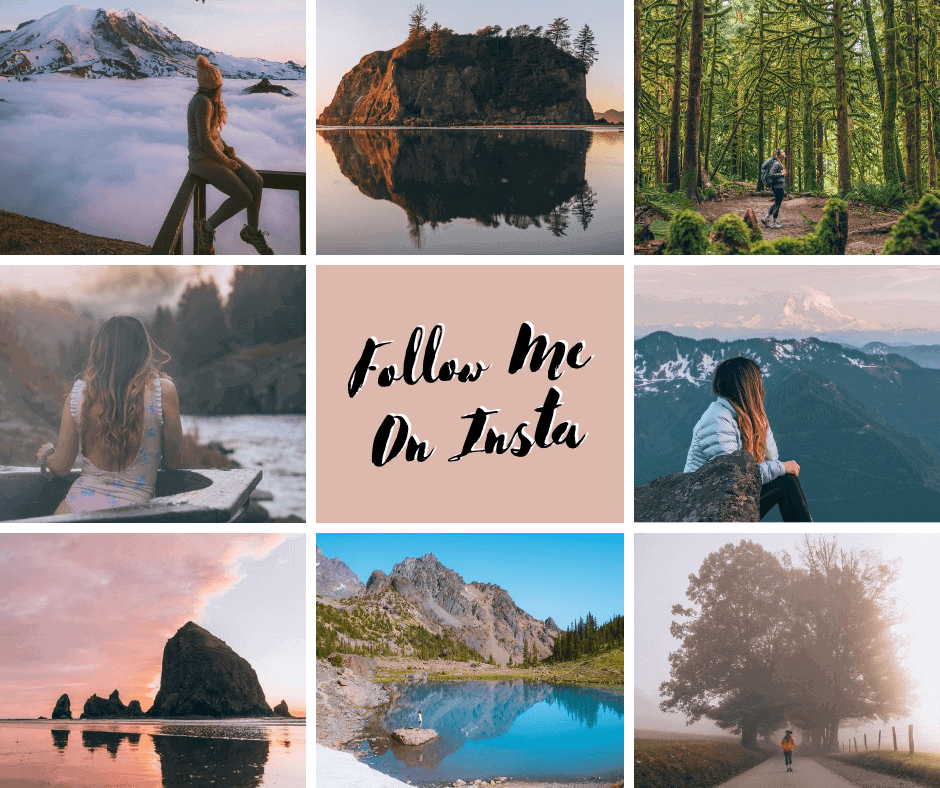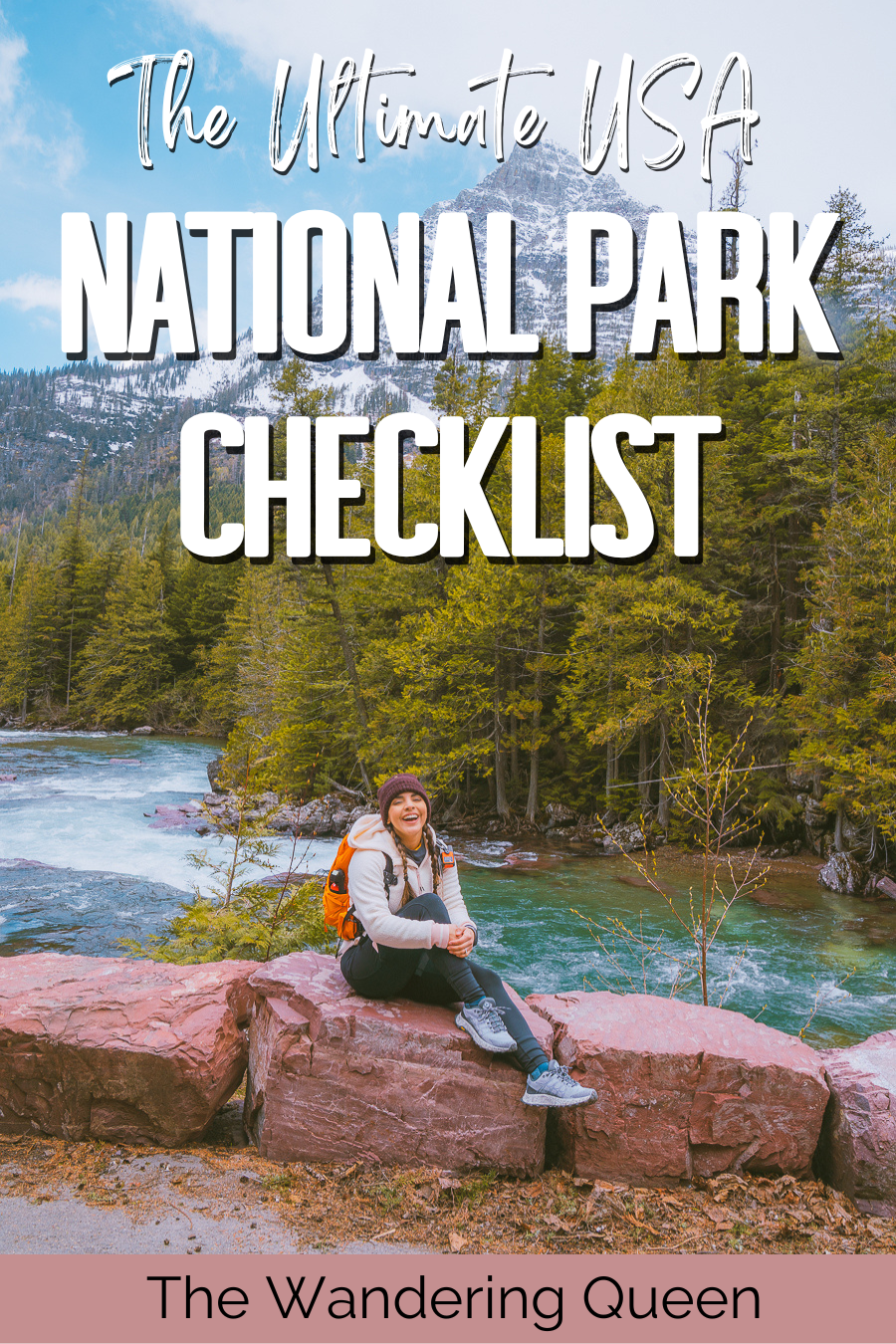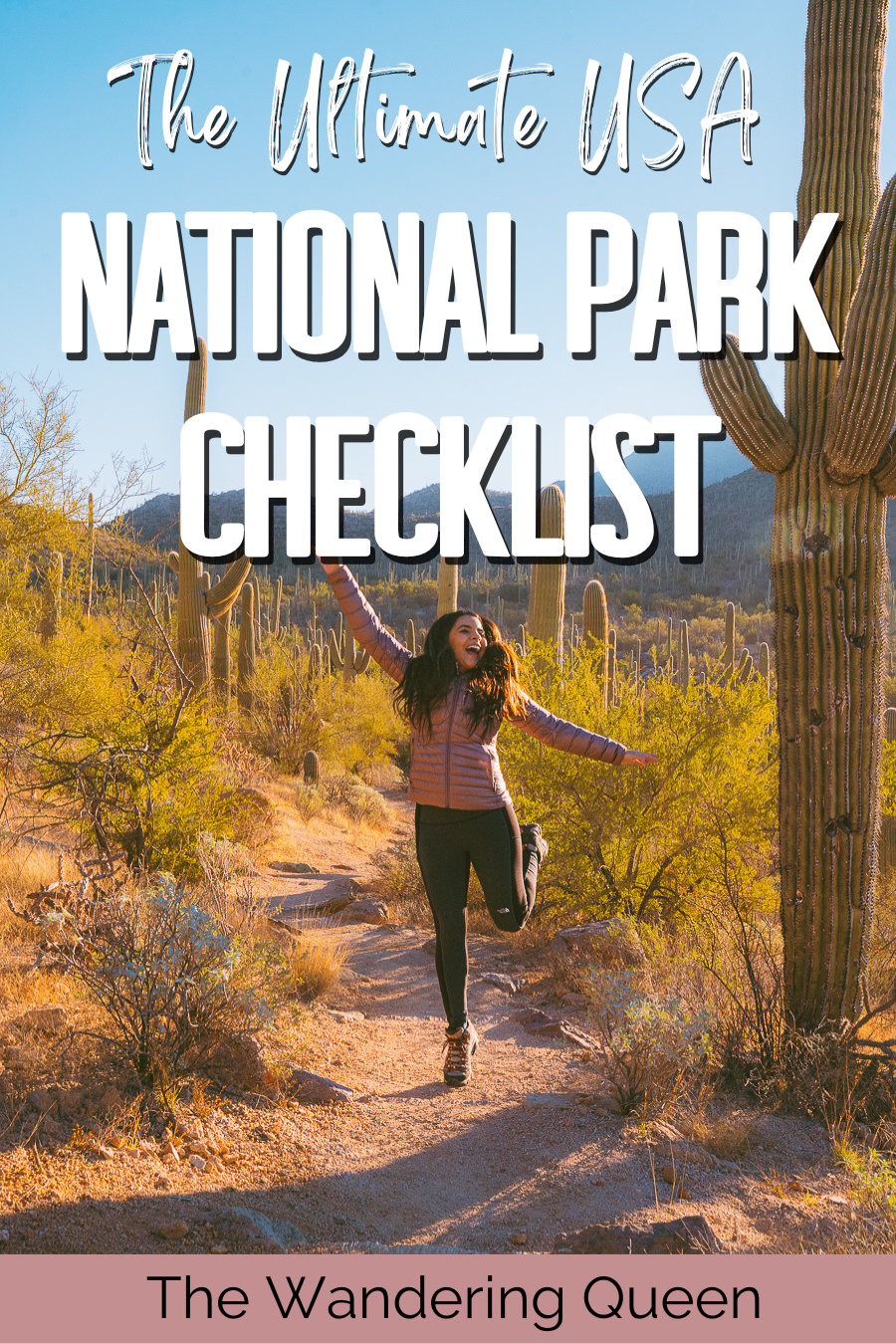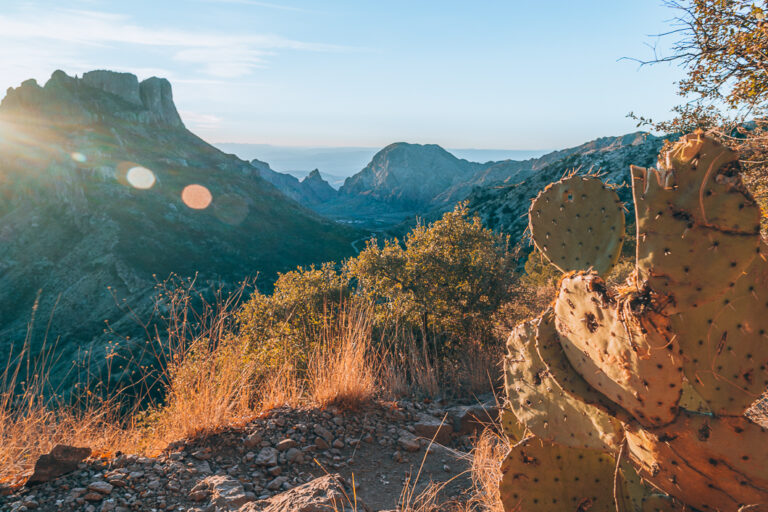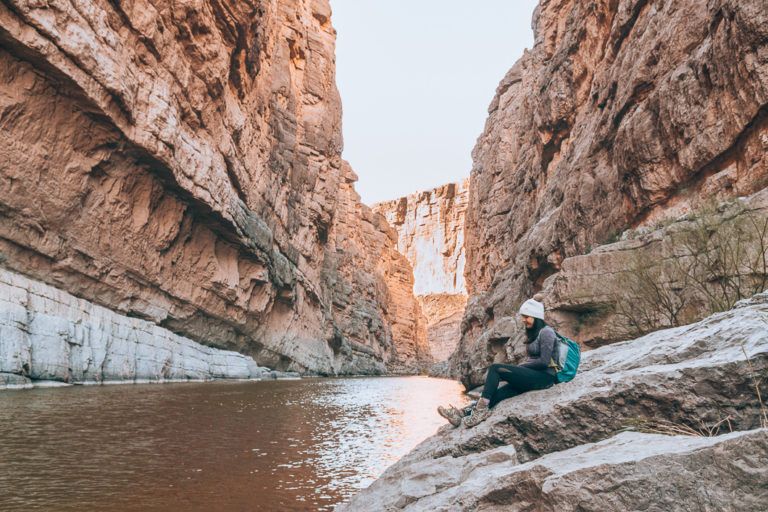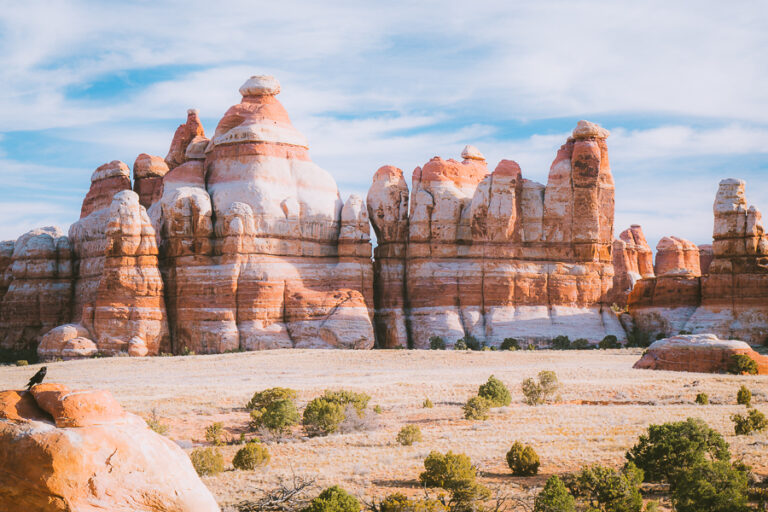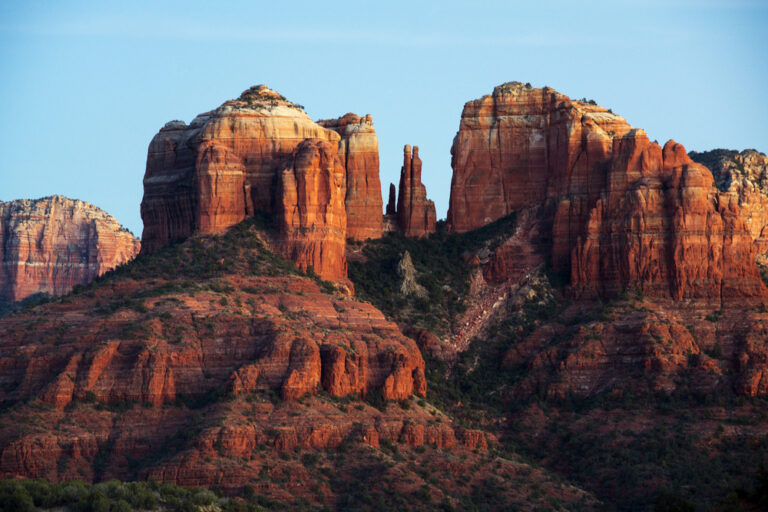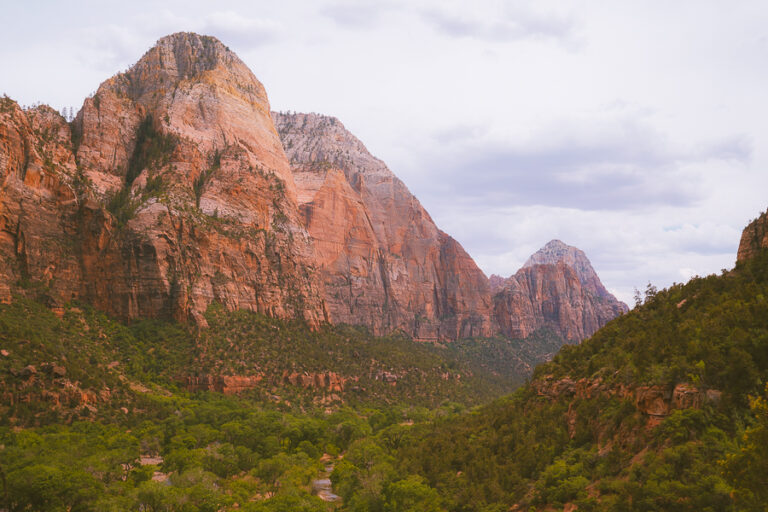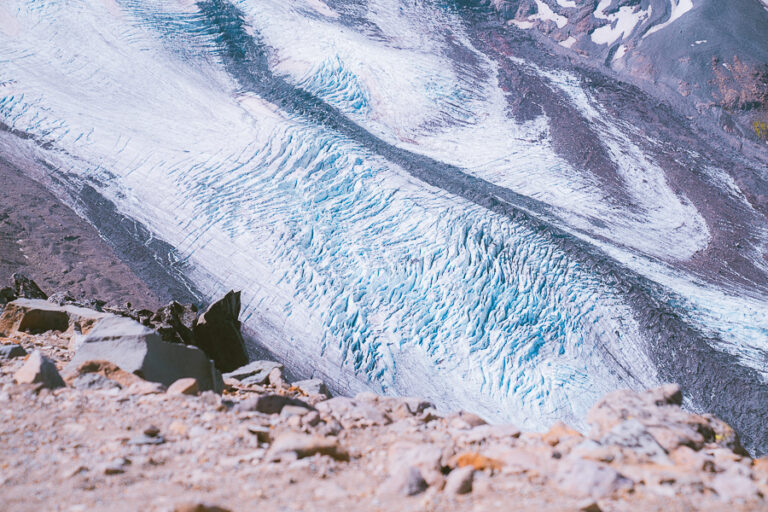US National Park Checklist 2024 | List Of USA Parks By State
Visiting all national parks in the United States is one of my bucket list items that I have been working towards for years. But it can be tough to keep up with just how many national parks you have been to. Luckily I have created the ultimate downloadable national park checklist. This list has all 63 national parks, including the brand-new New River Gorge National Park. I have also listed all the national parks below by state. Hopefully, you get to check off all these outstanding places.
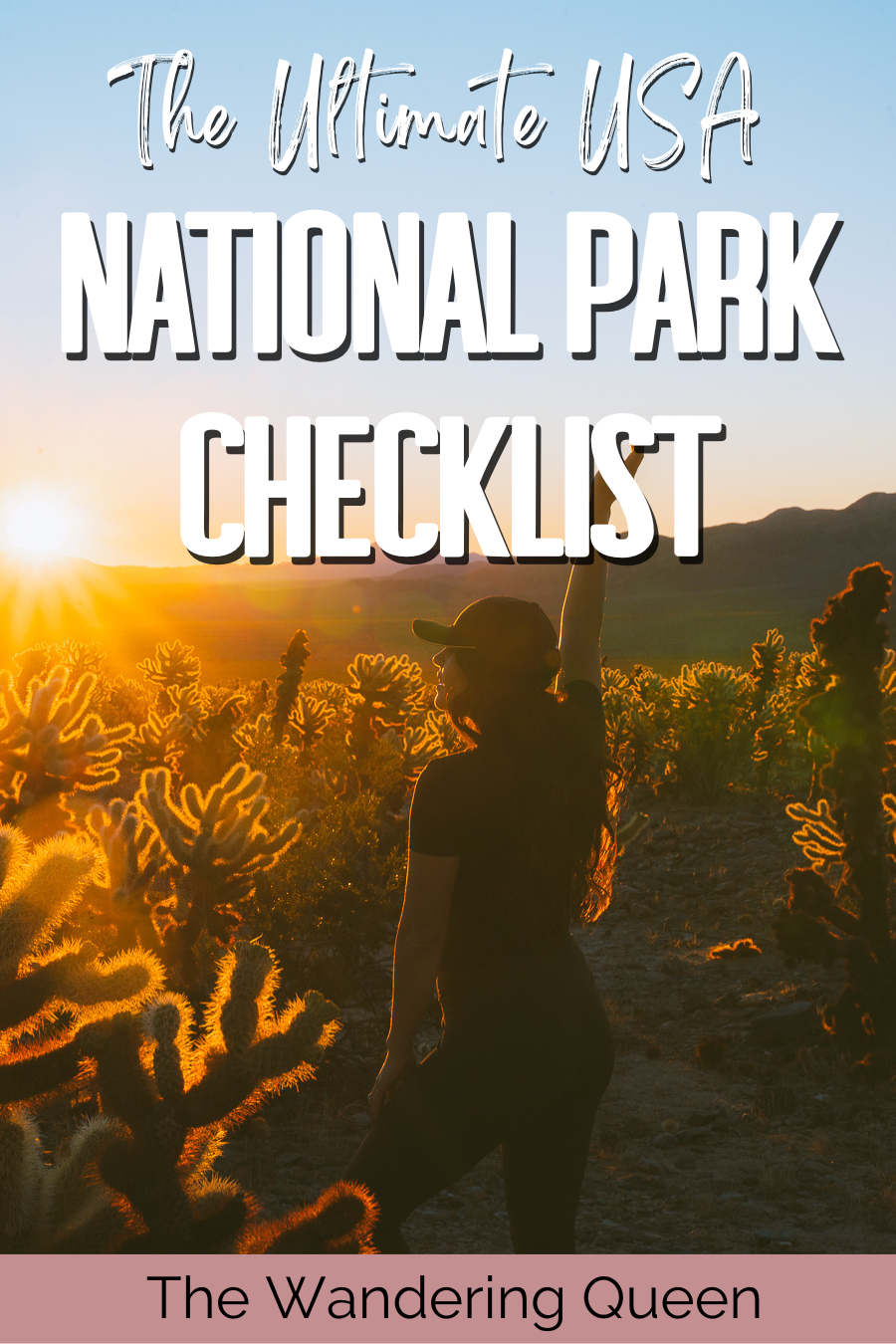
Disclosure: This post contains affiliate links. If you click one of them, I may receive a small commission (for which I am very grateful for) at no extra cost to you.
Download my free Outdoor Photography Guide
How Many National Parks Are There
There are 63 national parks. The newest national park was added on the 27th of December 2020. It is located in West Virginia and is called the New River Gorge National Park. There are also 423 National Park Service Units which include national monuments, national memorials, national battlefields, etc. But most of the time when people talk about National Parks they mean the 63 National Parks.
Planning A National Park Trip
I have planned so many national park trips! They are my favorite type of travel as I love the outdoors, and wildlife. Here is my process when planning a national parks trip:
- Pick When To Go
- Pick Your Parks
- Make A Map
- Figure Out How Long Do You Want To Stay There
- Find Out Budget and Costs
- Pick Out Where You Will Stay
- Figure Out How Will You Get To The National Park?
- Buy Everything You Need To Pack
If you need an ultimate guide on figuring out how to plan a National Park road trip then click here.
Download A National Park Checklist PDF
Sometimes it is fun to download and print out a copy of all the National Parks you have seen and check them off. I have one just for you below, and you can even tick them off on your computer if you have no printer. Download a free printable national park checklist below.
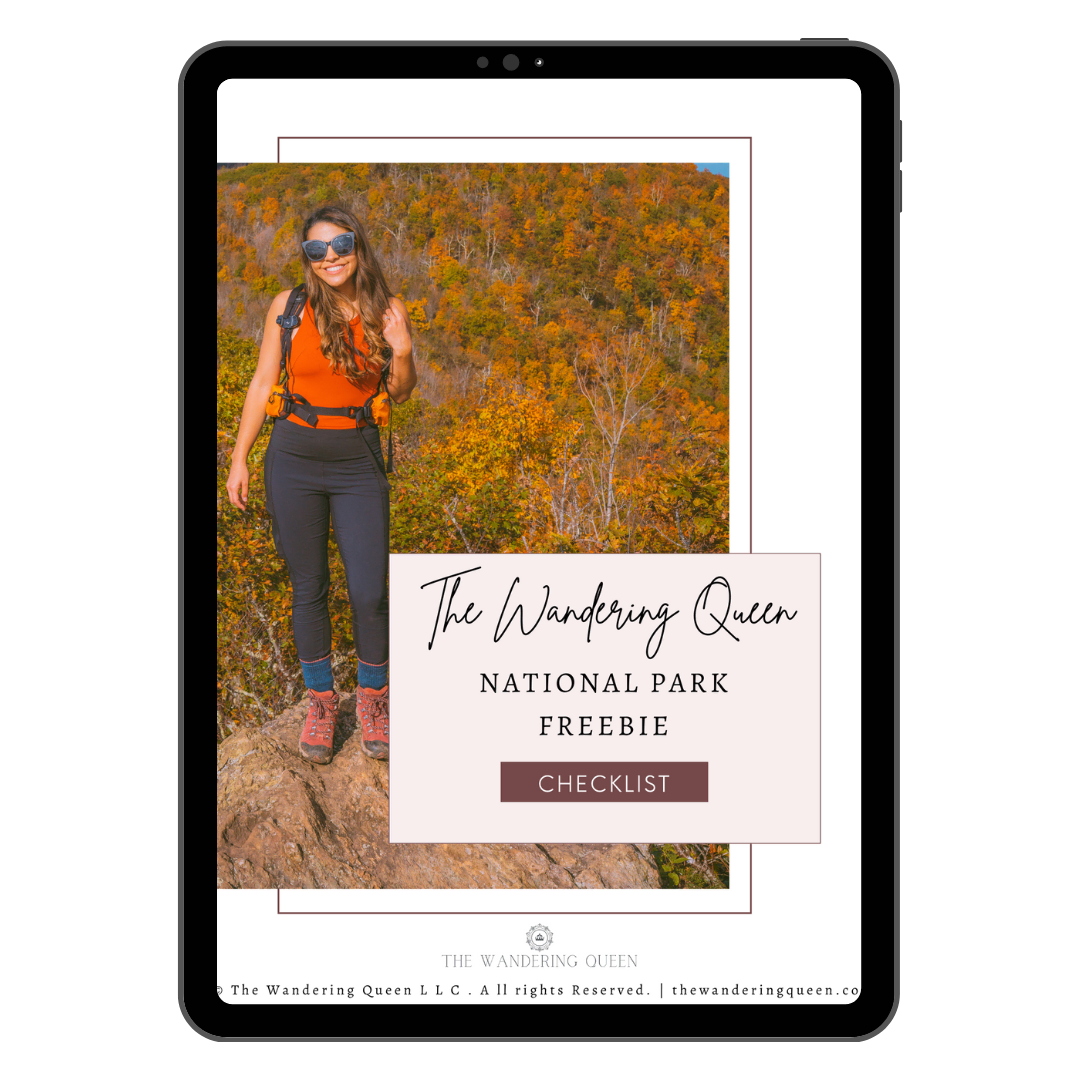
Get my free National Park Checklist
When you join the newsletter!
Map Of The National Parks In The United States
USA National Parks In Alphabetical Order
- Acadia, Maine
- American Samoa, Ameican Samoa
- Arches, Utah
- Badlands, South Dakota
- Big Bend, Texas
- Biscayne, Florida
- Black Canyon of the Gunnison, Colorado
- Bryce Canyon, Utah
- Canyonlands, Utah
- Capitol Reef, Utah
- Carlsbad Caverns, New Mexico
- Channel Islands, California
- Congaree, South Carolina
- Crater Lake, Oregon
- Cuyahoga Valley, Ohio
- Death Valley, California / Nevada
- Denali, Alaska
- Dry Tortugas, Florida
- Everglades, Florida
- Gates of the Arctic, Alaska
- Gateway Arch, Missouri
- Glacier, Montana
- Glacier Bay, Alaska
- Grand Canyon, Arizona
- Grand Teton, Wyoming
- Great Basin, Nevada
- Great Sand Dunes, Colorado
- Great Smoky Mountains, Tennessee / North Carolina
- Guadalupe Mountains, Texas
- Haleakala, Hawaii
- Hawai’i Volcanoes, Hawaii
- Hot Springs, Arkansas
- Indiana Dunes, Indiana
- Isle Royale, Michigan
- Joshua Tree, California
- Katmai, Alaska
- Kenai Fjords, Alaska
- Kings Canyon, California
- Kobuk Valley, Alaska
- Lake Clark, Alaska
- Lassen Volcanic, California
- Mammoth Cave, Kentucky
- Mesa Verde, Colorado
- Mount Rainier, Washington
- New River Gorge, West Virginia
- North Cascades, Washington
- Olympic, Washington
- Petrified Forest, Arizona
- Pinnacles, California
- Redwood, California
- Rocky Mountain, Colorado
- Saguaro, Arizona
- Sequoia, California
- Shenandoah, Virginia
- Theodore Roosevelt, North Dakota
- Virgin Islands, US Virgin Islands
- Voyageurs, Minnesota
- White Sands, New Mexico
- Wind Cave, South Dakota
- Wrangell – St. Elias, Alaska
- Yellowstone, Wyoming / Idaho / Montana
- Yosemite, California
- Zion, Utah
National Park Books
I love collecting books of national parks! I love reading about the parks and seeing awesome pictures. They are great coffee table books. Some of my favorite ones include:
US National Park Checklist By State
Alaska
Denali National Park
- Established Date: February 26, 1917
- Yearly Visitations: 229,521 (in 2021)
- Best Time To Go: Early June – Late August
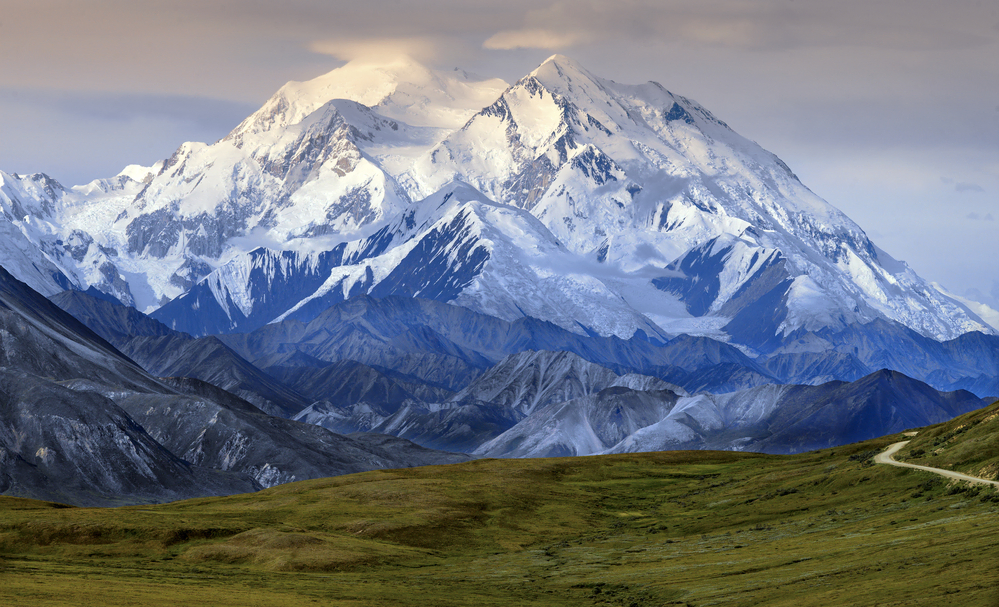
If it’s an adventure you seek, then be sure to add Alaska’s Denali National Park to your list. Covering 6,075,030 acres, this vast wilderness area has plenty to offer. Among its many attractions are North America’s tallest peak, Denali, and a diverse range of wildlife.
The national park also boasts breathtaking scenery. From rugged mountains to massive glaciers and the beautiful Yentna River, a visit here is sure to leave you in awe.
Gates of the Arctic National Park
- Established Date: December 2, 1980
- Yearly Visitations: 7,362 (in 2021)
- Best Time To Go: June – August
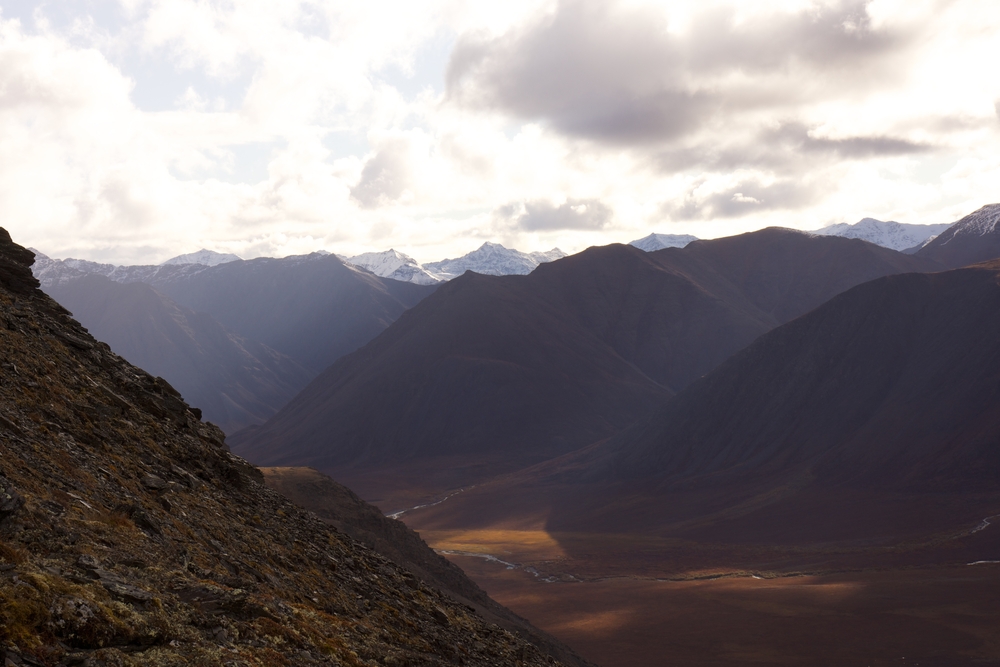
Gates of the Arctic is the second-largest national park in Alaska and the northernmost national park in the United States. All of its 8,472,506 acres are situated north of the Arctic Circle. As such, you can expect to see plenty—from the lowest elevation at Kobuk River to the highest peak atop Mount Igikpak.
Tip: This vast and remote wilderness area has no official roads or trails. To visit, you will need to hike or fly into the park.
Glacier Bay National Park
- Established Date: December 2, 1980
- Yearly Visitations: 89,768 (in 2021)
- Best Time To Go: Late May – Early September
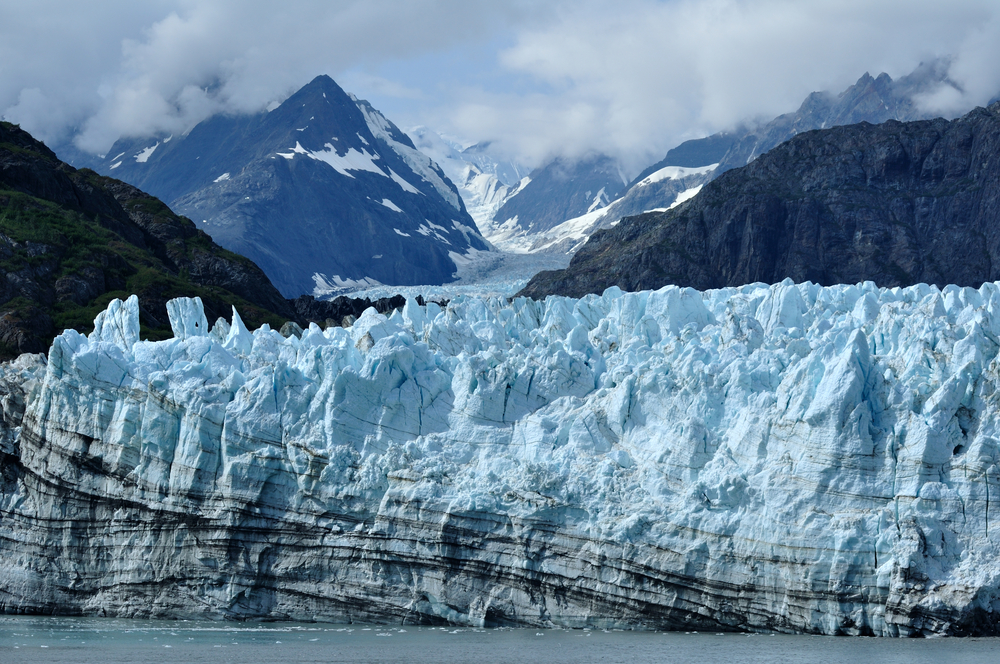
Located west of Juneau is one of the most breathtaking US national parks, Glacier Bay. This natural wonder boasts towering glaciers offset by even taller mountains. There are also sparkling fjords as far as the eye can see.
The park’s biggest attraction is the Margerie Glacier. Seeing the blue hues of the tidewater glacier is a must for anyone visiting the national park.
Tip: Glacier Bay is a popular destination, and campsites, lodges, and tours can fill up quickly during peak season. So, it is best to plan ahead and make reservations in advance.
Katmai National Park
- Established Date: September 24, 1918
- Yearly Visitations: 24,764 (in 2021)
- Best Time To Go: July – September
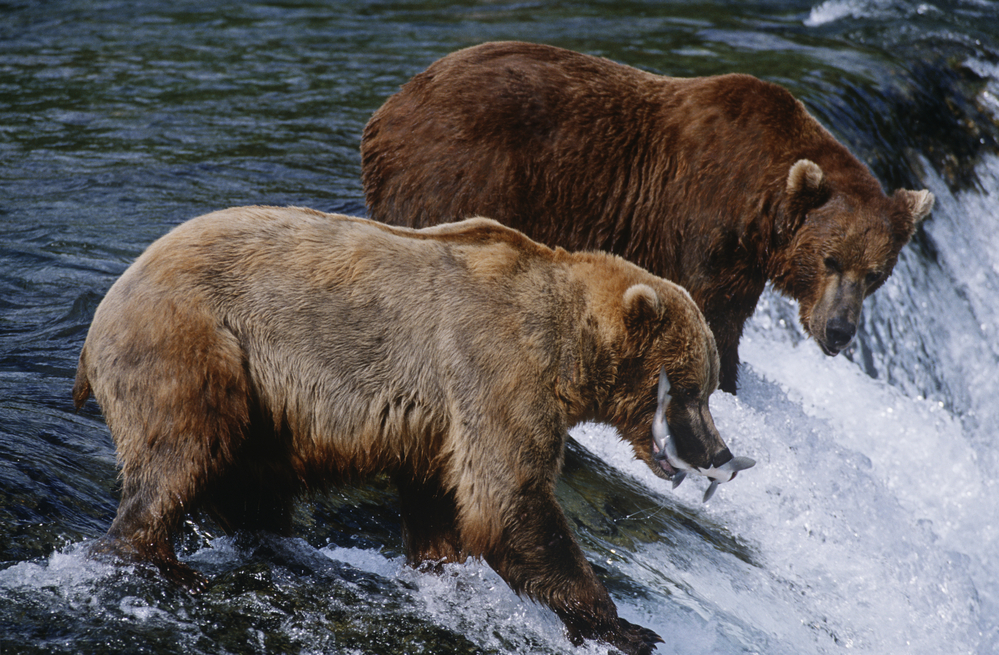
Katmai National Park is a pristine wilderness oasis in southern Alaska. It is best known for its abundant wildlife, particularly the many brown grizzly bears and bald eagles lured in by the park’s salmon runs. This natural phenomenon also brings in plenty of other creatures and visitors from around the world.
As a remote wilderness spanning over four million acres, you can expect to see everything from towering mountains and verdant forests to sparkling rivers and lakes. However, the most awe-inspiring attraction is the Valley of Ten Thousand Smokes—an otherworldly landscape created by a volcanic eruption back in 1912.
Kenai Fjords National Park
- Established Date: December 2, 1980
- Yearly Visitations: 411,782 (in 2021)
- Best Time To Go: Jun – August
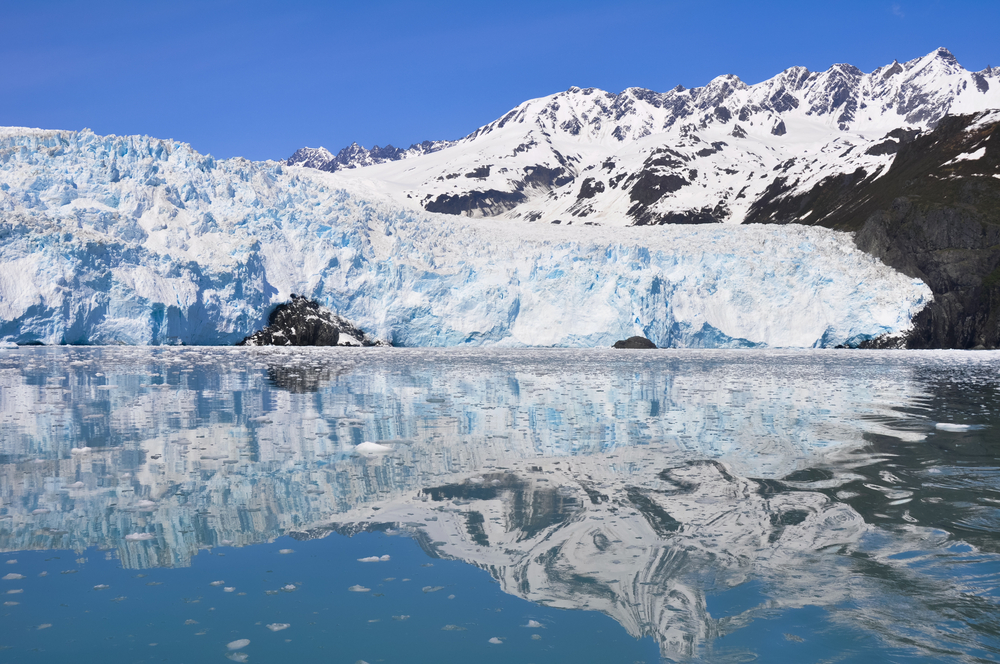
Kenai Fjords National Park is located outside of the city of Seward and spans over 600,000 acres. The park was created to protect some of Alaska’s most incredible natural wonders—from its rugged mountains to its majestic glaciers and gorgeous coastline.
Kenai Fjords is also home to a plethora of animals, including marine life. On a boat tour, spot humpback whales, orcas, Dall’s porpoises, and plenty more.
There are plenty more ways to enjoy Kenai Fjords. For the adventurer, there are plenty of hiking and biking trails, including the popular Exit Glacier Overlook Trail.
Kobuk Valley National Park
- Established Date: December 2, 1980
- Yearly Visitations: 11,54 (in 2021)
- Best Time To Go: Spring – Fall
Located in the heart of Alaska is the beautiful Kobuk Valley National Park. This remote wilderness houses several geographical features, including the central portion of the Kobuk River and the 25-square-mile Great Kobuk Sand Dunes.
The national park’s towering sand dunes are among its biggest draws. Many people visit each year to experience the unparalleled beauty of one of Alaska’s most unique landscapes. In a state known for its glaciers and mountains, seeing 100-foot dunes is truly spectacular.
Tip: Visit between the summer and winter months to witness 250,000 or more caribou as they pass through Kobuk National Park on their annual migration.
Lake Clark National Park
- Established Date: December 2, 1980
- Yearly Visitations: 18,278 (in 2021)
- Best Time To Go: Late May – Mid-September
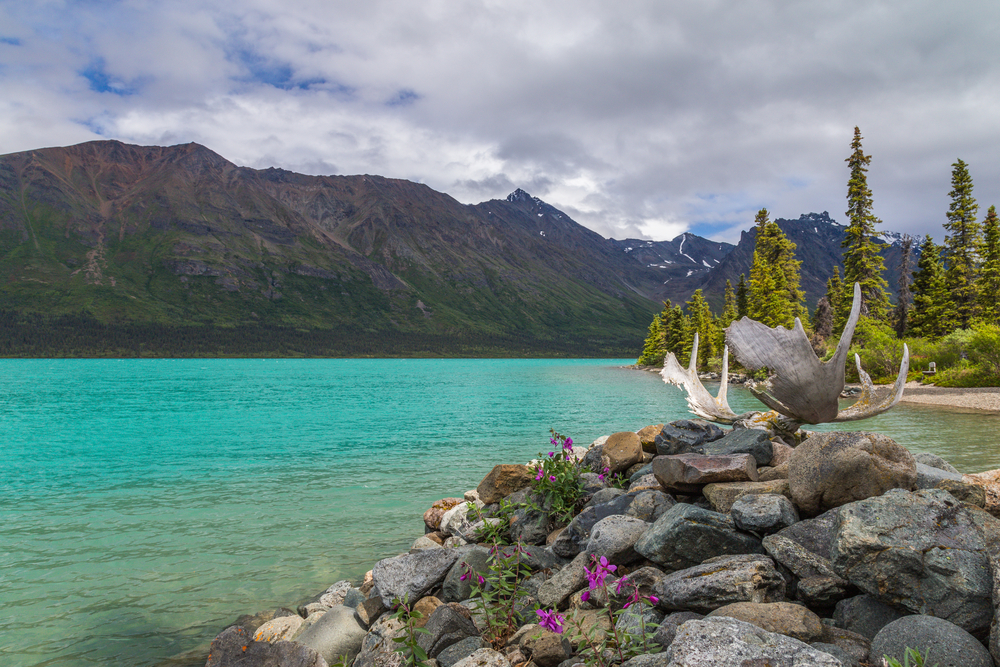
Lake Clark National Park is a pristine wilderness paradise located in southwestern Alaska. For wildlife enthusiasts, this park is a must as it is home to a broad range of animals, including brown and black bears, caribou, moose, and Dall sheep.
The waters are also well-populated. You’ll find arctic grayling, rainbow trout, northern pike, and five unique species of salmon.
Apart from wildlife, the national park features many of the photo-worthy landscapes that Alaska is best known for. As you explore, you’ll come across crystal-clear lakes, tall mountains, and many pristine wilderness areas.
Tip: The best way to visit Lake Clark is by an hour’s flight from Anchorage, Alaska’s capital.
Wrangell-St. Elias National Park
- Established Date: December 1, 1978
- Yearly Visitations: 50,189 (in 2021)
- Best Time To Go: June – August
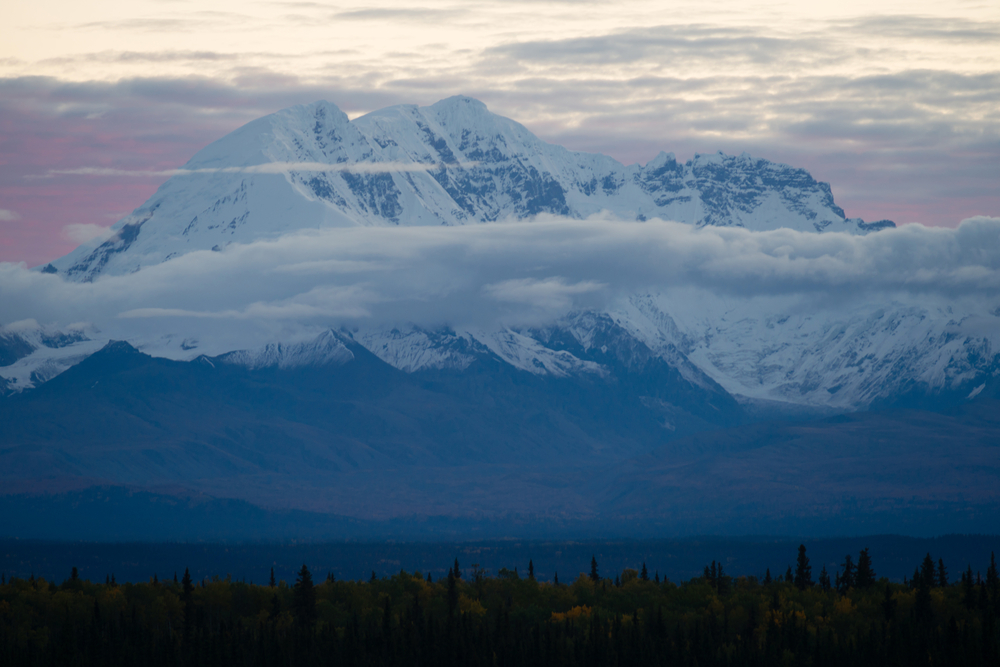
You’re in for an adventure of a lifetime when you visit Wrangell-St. Elias National Park. With over 13 million acres of wilderness and 60% of the United States glacier ice, there is so much to see and do in this Alaskan wonderland.
Wrangell-St. Elias is home to some of the state’s most breathtaking scenery. Here, mountains and volcanoes provide a beautiful contrast against the park’s striking glaciers, including the famed Root Glacier.
American Samoa
National Park of American Samoa
- Established Date: October 31, 1988
- Yearly Visitations: 8,495 (in 2021)
- Best Time To Go: June – September
Ready to experience the heart of the South Pacific? Then make your way to the National Park of American Samoa. As you explore this natural wonderland, you’ll be immersed in a tropical paradise comprising lush rainforests, stunning beaches, and sparkling waters with vibrant coral reefs.
One of the most popular beaches is Ofu Beach. Here you’ll find white sand and turquoise waters ideal for swimming, relaxing, and snorkeling. For those seeking adventure, the park also offers plenty of hiking opportunities with breathtaking views.
Tip: When swimming at the beaches, be cautious of the tidal movements, as the currents and undertows can be dangerous.
Arizona
Grand Canyon National Park
- Established Date: February 26, 1919
- Yearly Visitations: 4,532,677 (in 2021)
- Best Time To Go: Spring and Fall
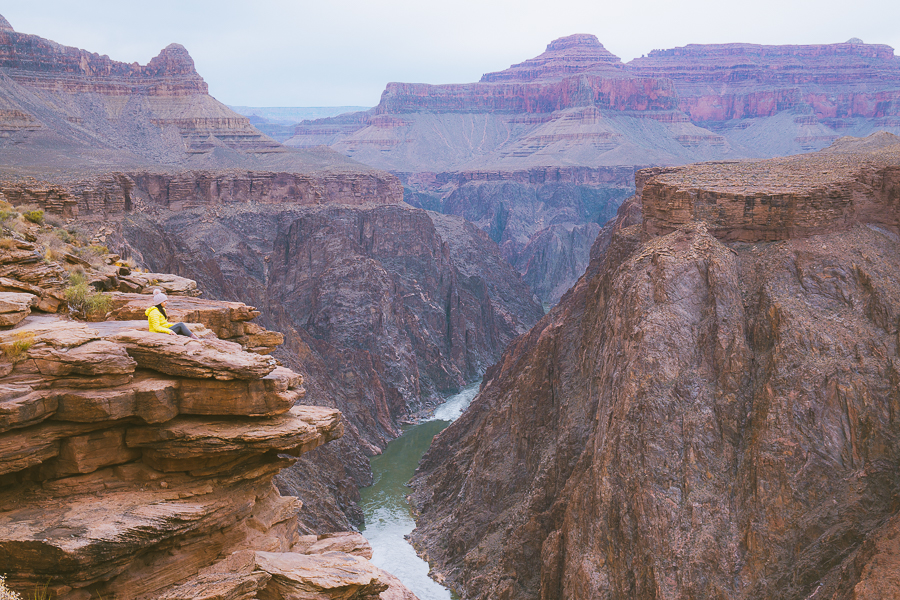
If you’re seeking a bucket-list adventure in the United States, then look no further than the Grand Canyon National Park. Explore the heart of the American Southwest and experience the breathtaking vistas of one of the world’s most renowned natural wonders.
To discover the park’s many gems, it is best to travel on foot. Exploring the Grand Canyon are more than 130 hiking trails. These vary in difficulty and length and provide endless views of the stunning geological rock formations carved by the Colorado River millions of years ago.
Grand Canyon National park
Related Posts
Petrified Forest National Park
- Established Date: December 9, 1962
- Yearly Visitations: 590, 334 (in 2021)
- Best Time To Go: April – May
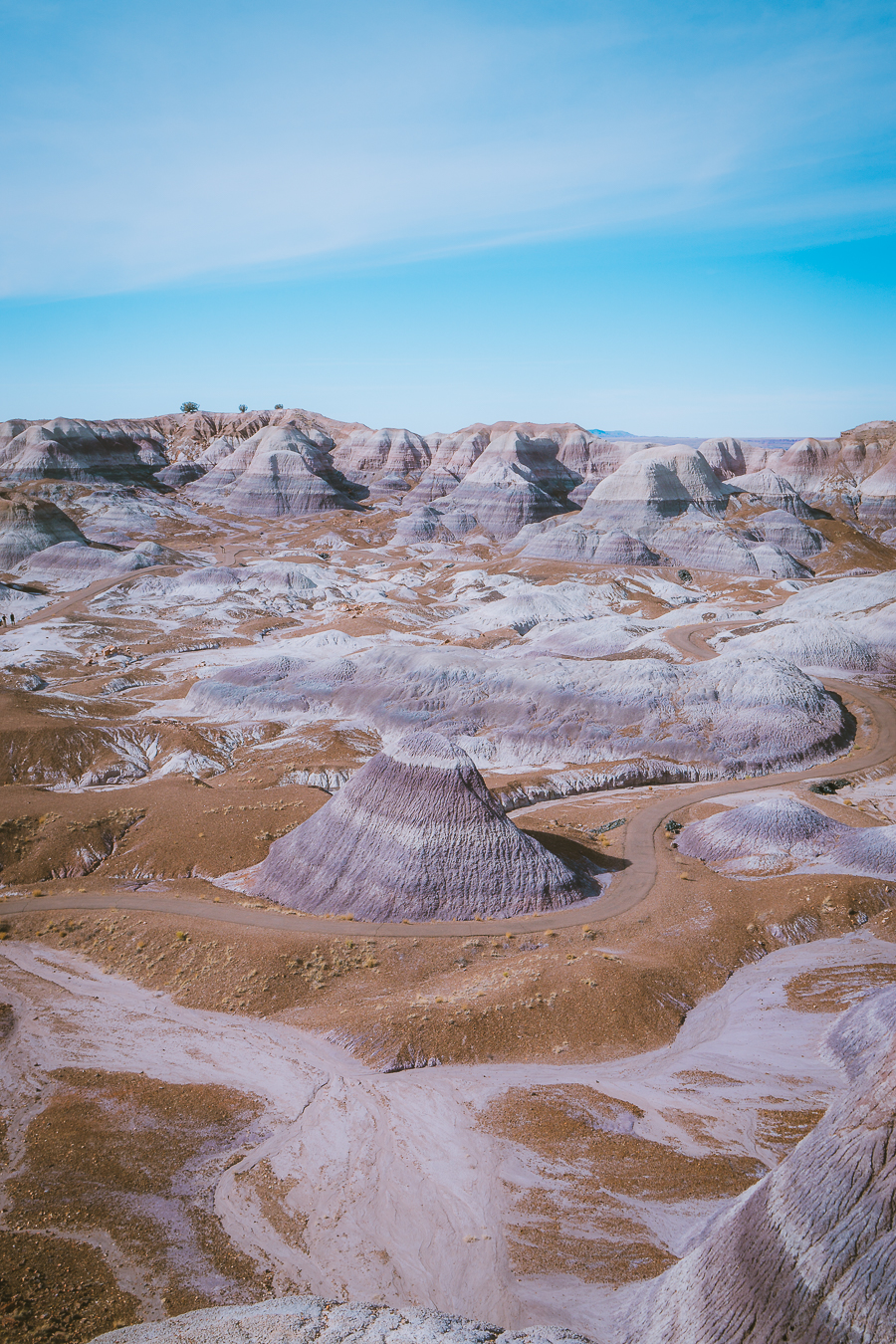
Petrified Forest National Park is the ultimate destination for geology enthusiasts. Here you’ll find some of the world’s most awe-inspiring geological features. Additionally, the park’s fossilized trees and breathtaking vistas are sure to take you back in time.
Be sure to see the Painted Desert. As you explore, marvel at the colorful layers of sedimentary rock spanning in every direction. There’s also the Petrified Forest, which is home to large trees turned to stone—some of which date back more than 200 million years.
Tip: The park has two entrances—the Painted Desert Visitor Center and the Rainbow Forest Visitor Center. A single road running through the entire national park connects the two.
Petrified Forest National Park
Related Posts
Saguaro National Park
- Established Date: October 14, 1994
- Yearly Visitations: 1,079,786 (in 2021)
- Best Time To Go: October – April
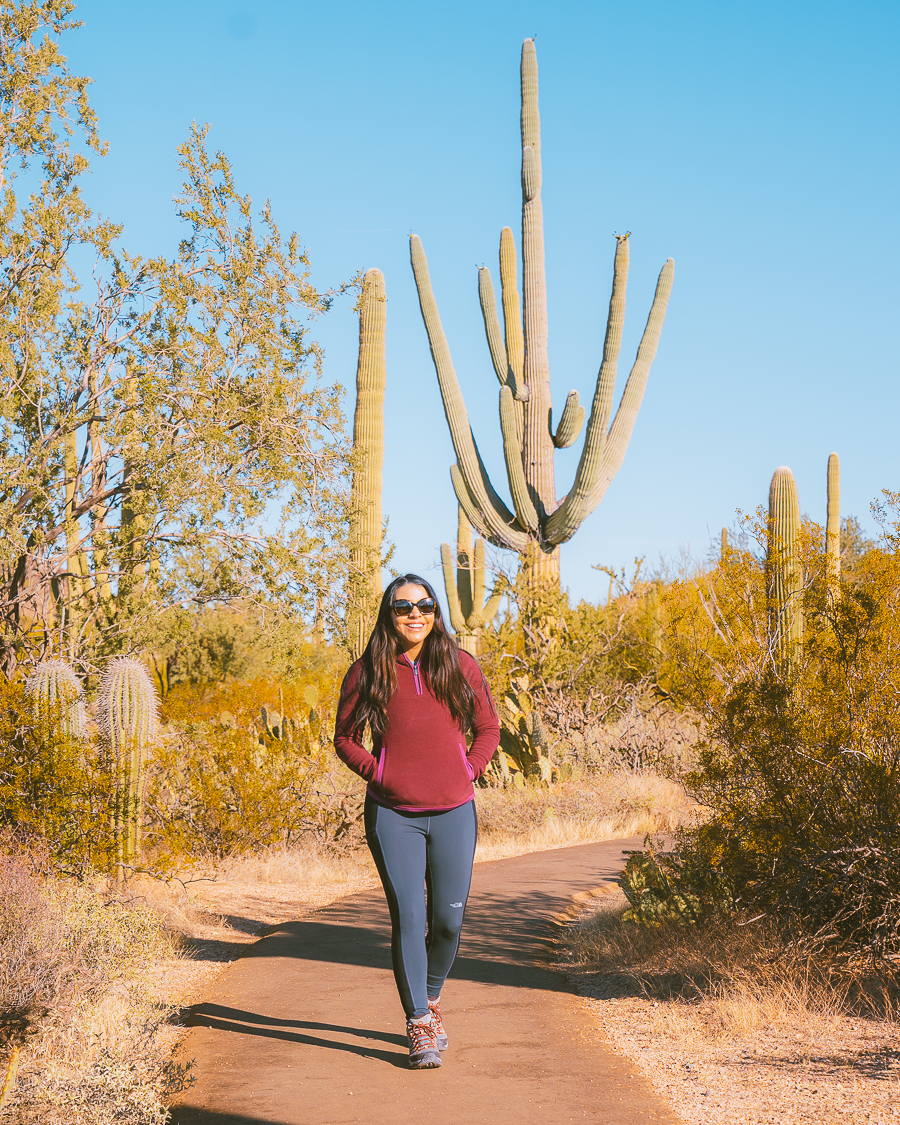
Make your way to Saguaro National Park, home to the largest cacti species, the saguaro, as well as one of the most breathtaking desert landscapes in the United States. In fact, many consider this park to be the perfect depiction of the American West.
Hiking is your best bet to experience the park’s incredible biodiversity and see the iconic saguaro cacti up close. There are plenty of trails in this national park, ranging from leisurely strolls to strenuous climbs.
Tip: For an immersive experience, camp under the stars and experience the stillness and tranquility of Saguaro National Park at night.
SAGUARO National Park
Related Posts
Arkansas
Hot Springs National Park
- Established Date: April 20, 1832
- Yearly Visitations: 2,162,884 (in 2021)
- Best Time To Go: All Year

Whether you’re seeking leisure or adventure, Hot Springs National Park has you covered. As you make your way through this picturesque landscape, you’ll discover a treasure trove of therapeutic hot springs.
The nearly 4,000-year-old thermal waters are rich in minerals and are revered for their healing properties. There are plenty of hiking trails and scenic drives leading to some of the most awe-inspiring vistas in Arkansas.
Tip: Bathing in the hot springs can be unsafe due to high temperatures; however, there are safe bathing options available in the park.
California
Channel Islands National Park
- Established Date: March 5, 1980
- Yearly Visitations: 319,252 (in 2021)
- Best Time To Go: Spring – Fall
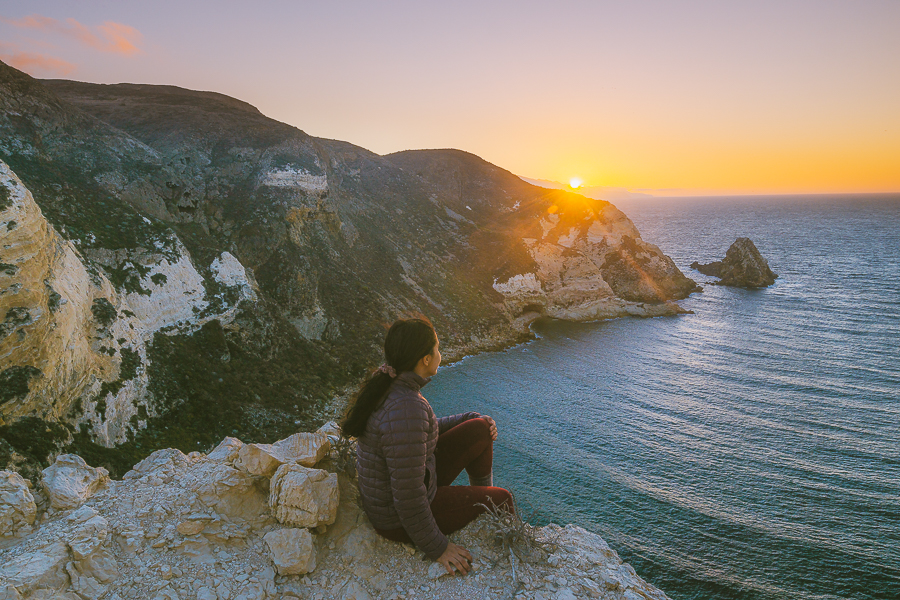
For those seeking an off-the-beaten-path adventure, look no further than Channel Islands National Park. This hidden gem is just a short ferry ride from one of the most well-known cities in the United States, Los Angeles. Here, you can escape the hustle and bustle of everyday life while enjoying the natural beauty of the national park.
The Channel Islands offers plenty for outdoor enthusiasts. You can hike through rugged canyons and along picturesque coastlines or kayak and discover various hidden sea caves.
Tip: If you’re hoping to camp, be sure to make reservations in advance. More information can be found here.
Channel Islands National Park
Related Posts
Death Valley National Park (California and Nevada)
- Established Date: October 31, 1994
- Yearly Visitations: 1,146,551 (in 2021)
- Best Time To Go: Spring – Fall
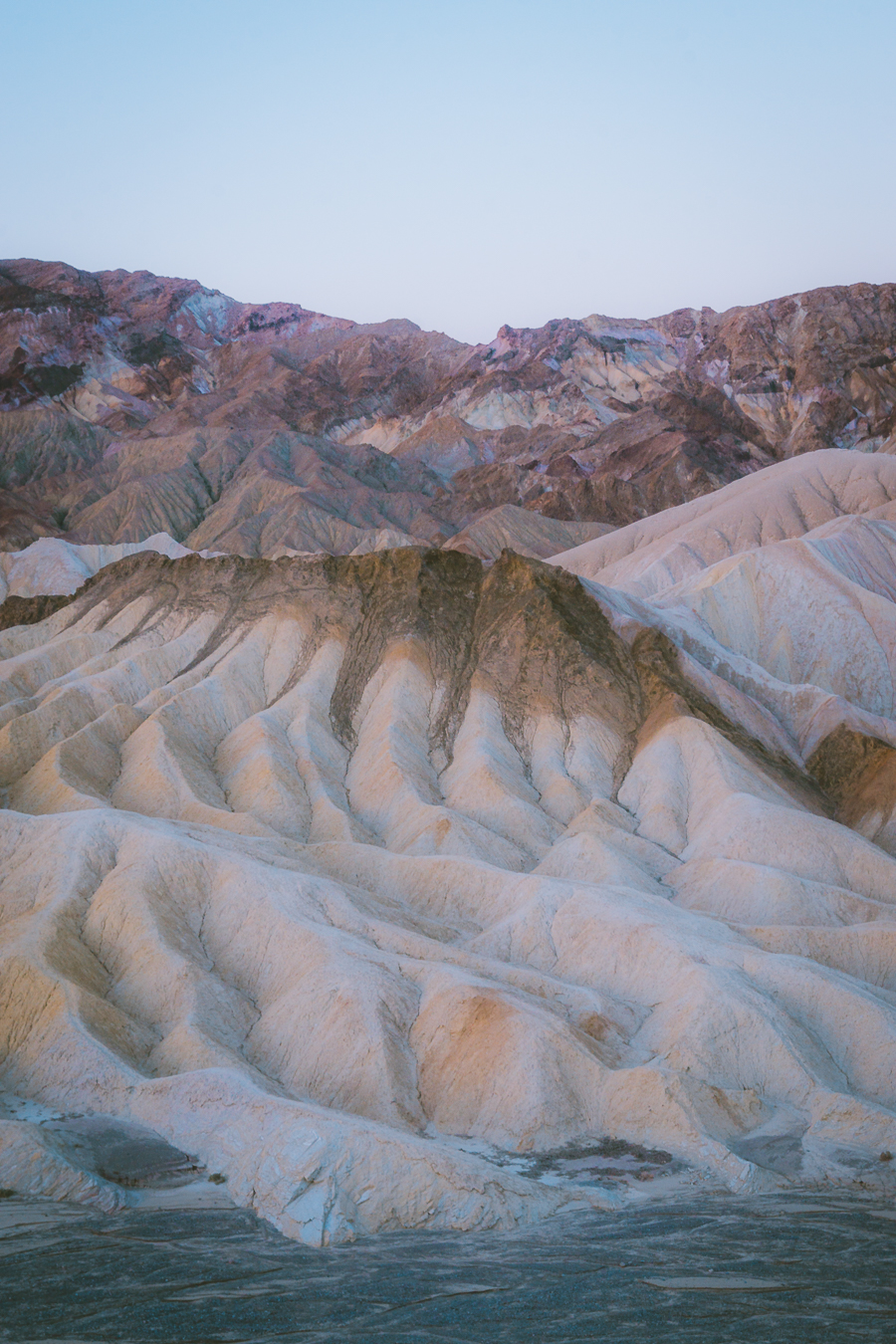
For the ultimate desert adventure, make your way to Death Valley National Park. This area boasts some of the most otherworldly geographical features in the world, from the towering sand dunes of Mesquite Flat to the bizarre rock formations of the Racetrack Playa.
There are many ways to explore this stunning national park. You can take a scenic drive along the many winding roads or hike through the canyons and sand dunes. Be sure to visit Badwater Basin, the lowest point in North America and one of Death Valley National Park’s most iconic landmarks.
Tip: There is a lack of cell service in the national park, so consider picking up a map at any of the park’s information booths.
Death Valley National Park
Related Posts
Joshua Tree National Park
- Established Date: October 31, 1994
- Yearly Visitations: 3,064,400 (in 2021)
- Best Time To Go: Spring – Fall
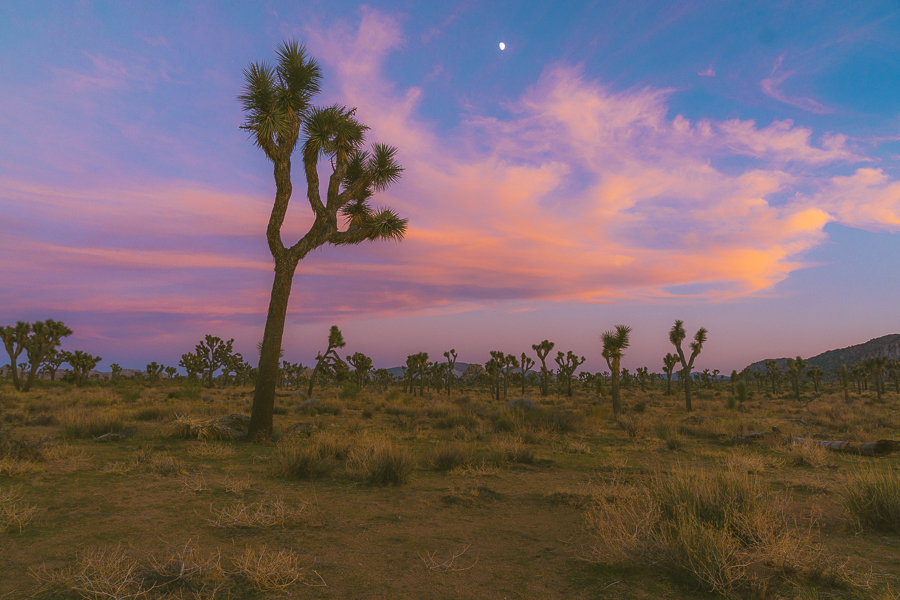
Pack your bags and get ready to escape the ordinary at Joshua Tree National Park. This desert oasis is the ultimate playground for adrenaline junkies seeking an adventure in the great outdoors. Here you’ll find towering rock formations, diverse flora and fauna, and an abundance of scenic vistas.
Many of the above are best experienced on foot. The national park offers plenty of hiking trails and some of the best bouldering routes. These range in difficulty, so there is something for hikers and climbers of all levels.
Tip: Several venomous animals call this park their home, including rattlesnakes, scorpions, and black widow spiders. When hiking or climbing, always look before you place your hands or feet.
Joshua Tree National Park
Related Posts
Kings Canyon National Park
- Established Date: March 4, 1940
- Yearly Visitations: 562,918 (in 2021)
- Best Time To Go: Summer – Fall
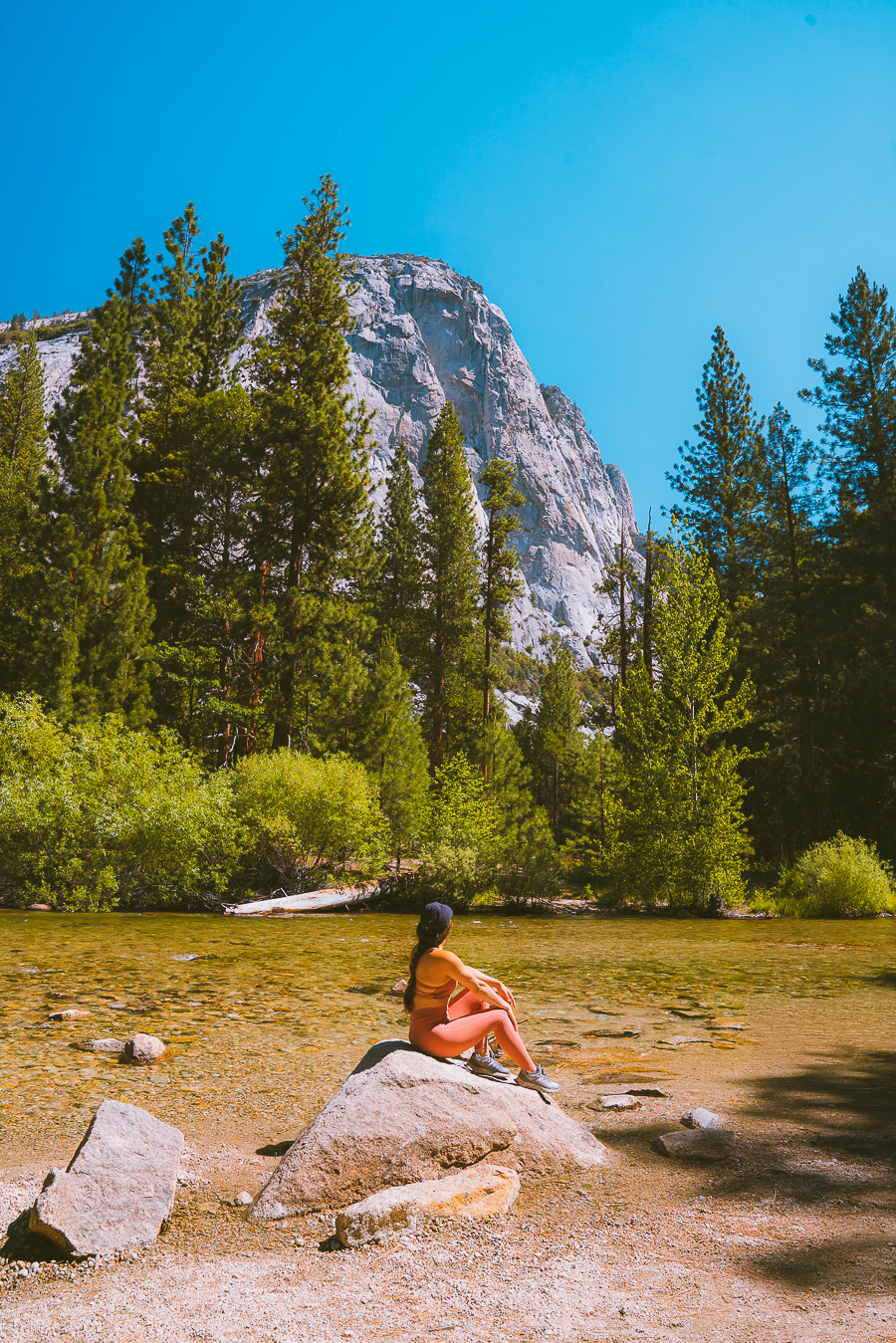
Located in California’s Sierra Nevada mountains is the breathtaking Kings Canyon National Park! This stunning destination is a treasure trove of natural beauty and is known for its huge sequoia trees. The most notable of these is the monumental General Grant Tree situated in Grant Grove.
In addition to the towering trees are tall mountains, deep canyons, and roaring waterfalls. You’ll venture by many of these when tackling the various hiking trails scattered throughout the park.
Tip: Kings Canyon and Sequoia National Parks are connected by the Kings Canyon Scenic Byway. So, you can visit both in a single day trip.
kINGS cANYON National Park
Related Posts
Lassen Volcanic National Park
- Established Date: August 9, 1916
- Yearly Visitations: 359,635 (in 2019)
- Best Time To Go: Summer
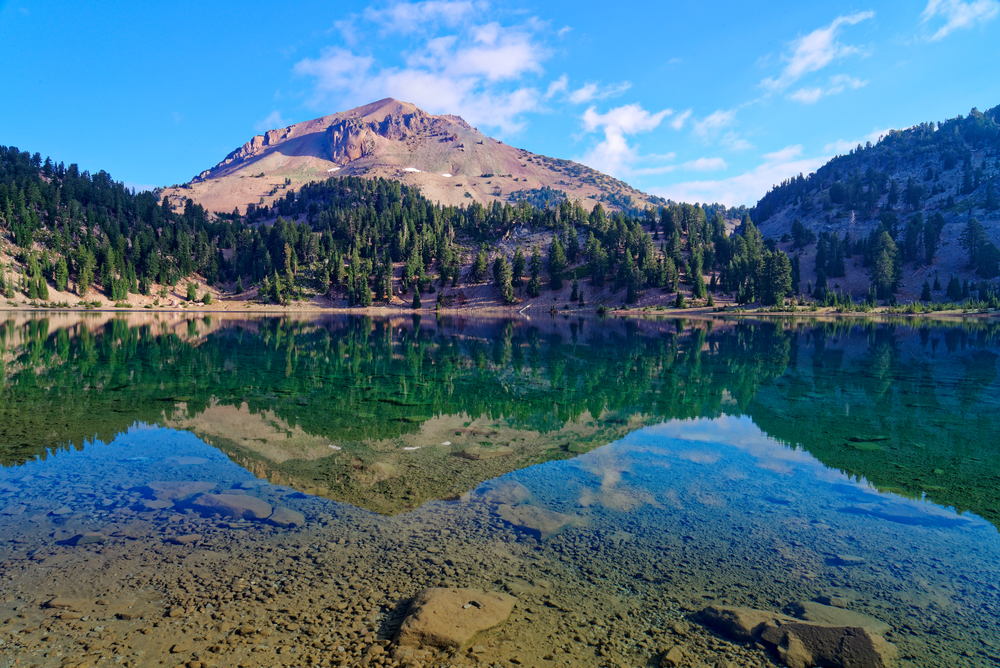
If you’re ready for an explosive adventure, then head to northern California’s Lassen Volcanic National Park. This beautiful destination features a variety of interesting hydrothermal features, including steaming hot springs and bubbling mud pots. The most notable place to experience this Bumpass Hell.
The park also houses an extensive network of hiking trails. These will take you through lush forests, jagged lava fields, and atop the iconic Lassen Peak Volcano. The park is also renowned for its incredible sunset views.
Tip: All park waters in Lassen Volcanic National Park are suitable for swimming except hydrothermal waters.
Pinnacles National Park
- Established Date: January 10, 2013
- Yearly Visitations: 348,857 (in 2021)
- Best Time To Go: Spring and Fall
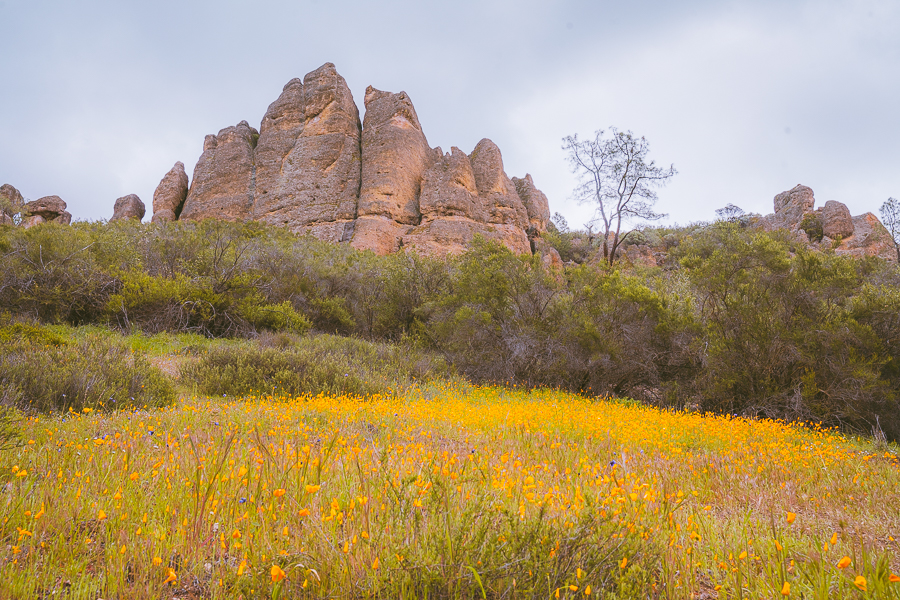
California is home to some of the most renowned national parks in the United States, so Pinnacles National Park may not be the first pick on many people’s bucket lists. However, it should be, as this hidden gem is a true paradise for outdoor enthusiasts.
If you’re seeking an adrenaline rush, Pinnacles National Park will not disappoint. You’ll find some of the best hiking routes, where you can climb towering peaks, explore hidden caves, and take in breathtaking views at just about every corner. Keep an eye out, and you may even spot the endangered California condor.
Tip: For the best views and chances of spotting the California condor, be sure to visit the Condor Gulch Overlook.
Pinnacles National Park
Related Posts
Redwood National Park
- Established Date: October 2, 1968
- Yearly Visitations: 435,879 (in 2021)
- Best Time To Go: May – October
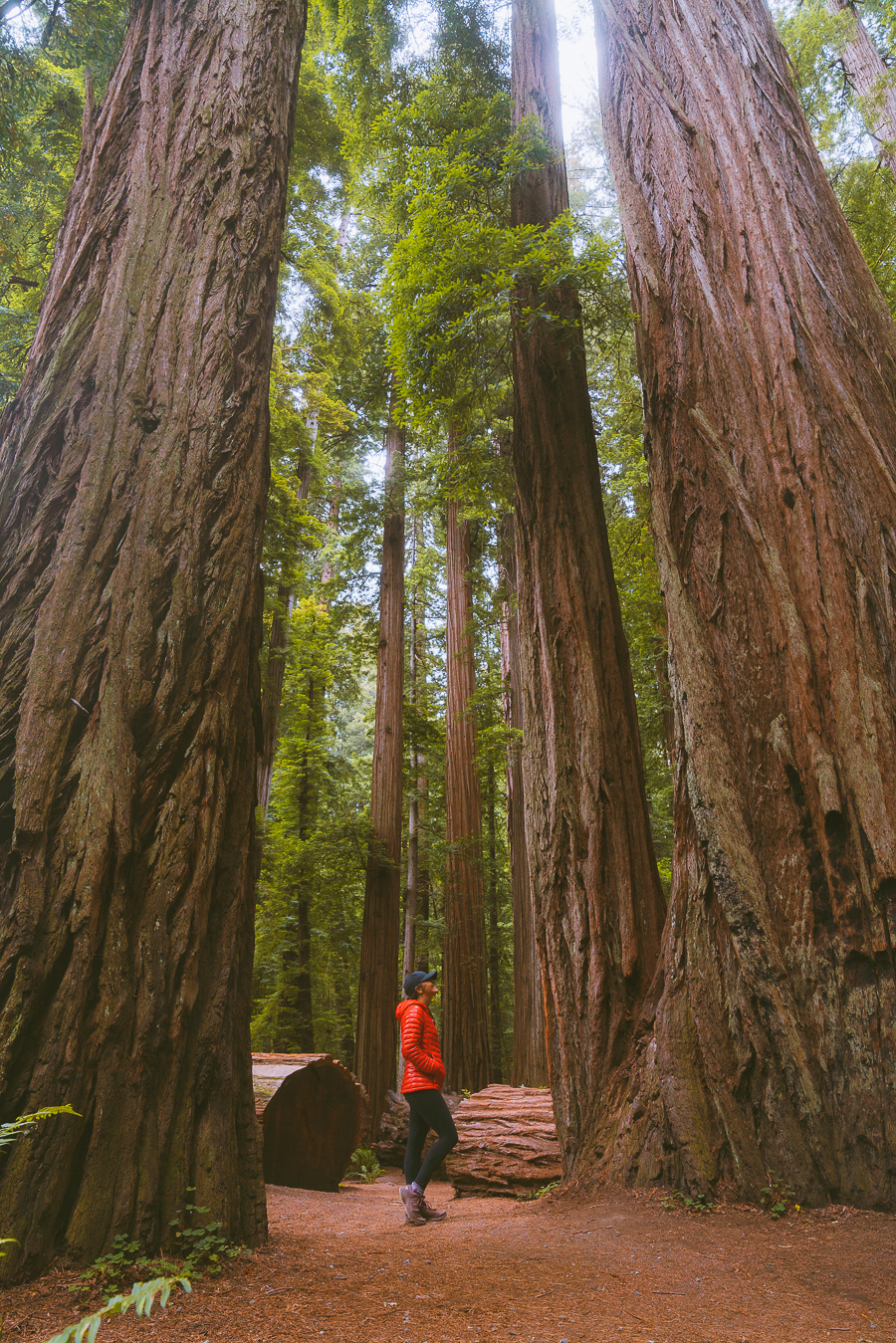
Whether you’re a nature enthusiast or not, you’re sure to be left in awe by the wonders of Redwood National Park. The UNESCO World Heritage Site comprises a region of picturesque coastal mountains bordering the Pacific Ocean and majestic forests housing some of the world’s tallest trees.
Included among these is the world’s tallest living tree. Nicknamed Hyperion, the sequoia tree stands an impressive 380 feet tall. To explore the park’s dense forests, you can hike or take a scenic coastal drive.
Tip: When exploring the national park, be sure to keep an eye out for poison oak. Try to avoid contact and ensure that your children do not ingest it, as it can be harmful.
Sequoia National Park
- Established Date: October 1, 1890
- Yearly Visitations: 1,059,548 (in 2021)
- Best Time To Go: Spring – Fall
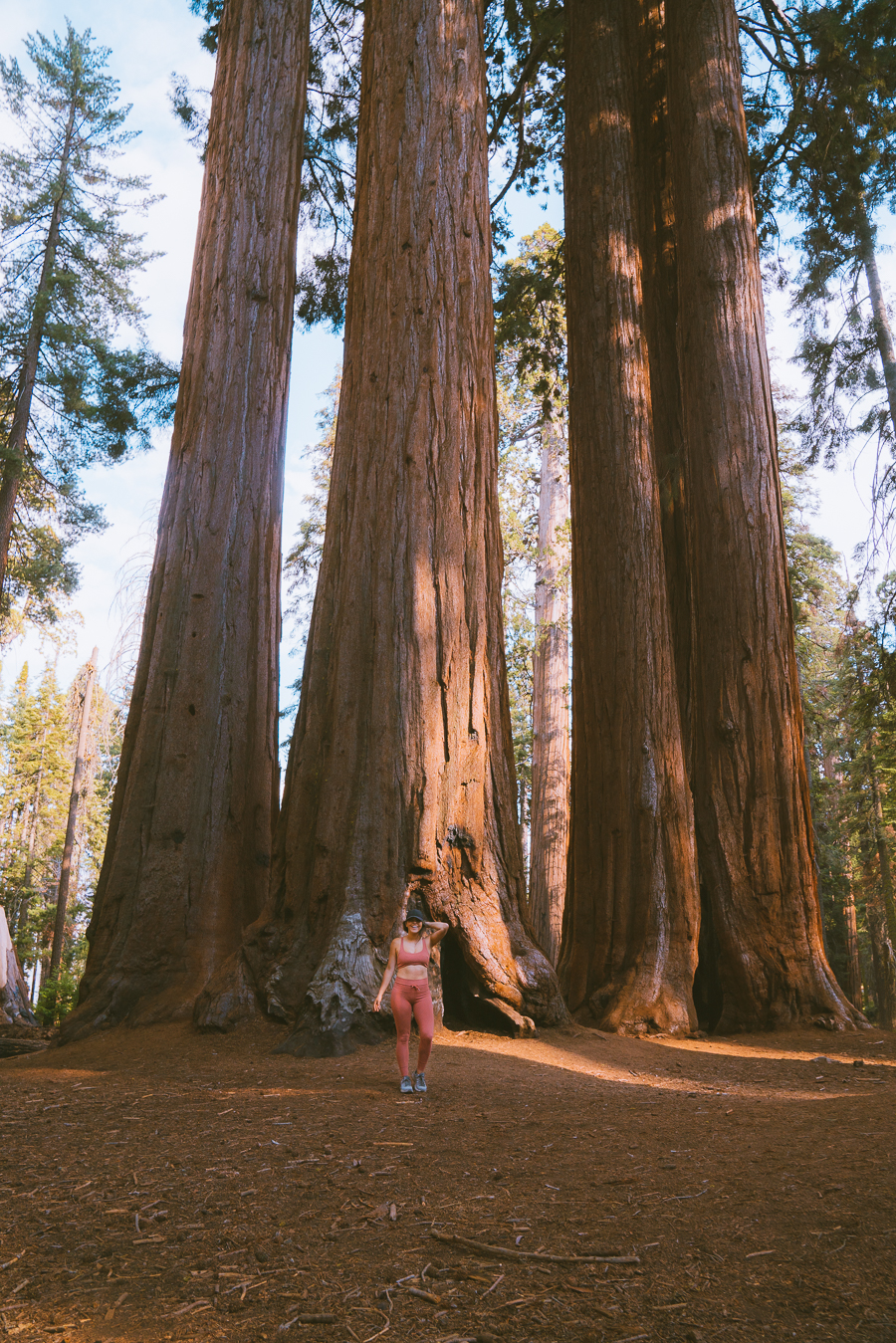
Sequoia National Park lies adjacent to Kings Canyon National Park in the Sierra Nevada mountains. Like its neighbor, it is home to towering sequoia trees—the most notable being the 280-foot-tall General Sherman Tree in the Giant Forest. Another iconic attraction is the Tunnel Log. This is a large fallen tree that you can literally drive through.
However, there are more than just trees at Sequoia National Park. Be sure to check out the streams and rock formations at the underground Crystal Cave, the crystal-clear waters of Crescent Meadow, and the sweeping views at Moro Rock.
SEQUOIA National Park
Related Posts
Yosemite National Park
- Established Date: October 1, 1890
- Yearly Visitations: 3,287,595 (in 2021)
- Best Time To Go: All Year
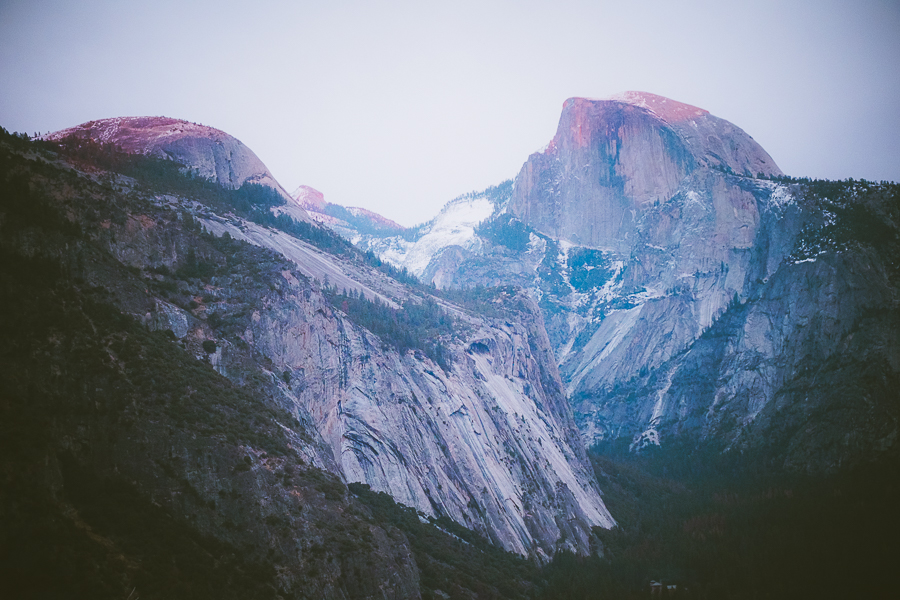
Considered an icon of America’s beauty, Yosemite National Park is certainly among the best places to visit in California. Here you’ll find some of the state’s most renowned attractions, including the famed granite cliffs of El Capitan and Half Dome and the towering Bridalveil Fall.
All of this can be seen from the national park’s most iconic vista, Tunnel View. Yosemite National Park is also a popular destination among outdoor and wildlife enthusiasts. The park features many hiking and climbing routes and offers endless wildlife spotting opportunities.
Tip: If it’s your first time visiting Yosemite, be sure to take a leisurely walk along the Cook’s Meadow Loop. You’ll get acquainted with many of the park’s top attractions on this 1-mile trail.
YOSEMITE National Park
Related Posts
Colorado
Black Canyon of the Gunnison National Park
- Established Date: October 21, 1999
- Yearly Visitations: 308,910 (in 2021)
- Best Time To Go: Mid April – Mid November
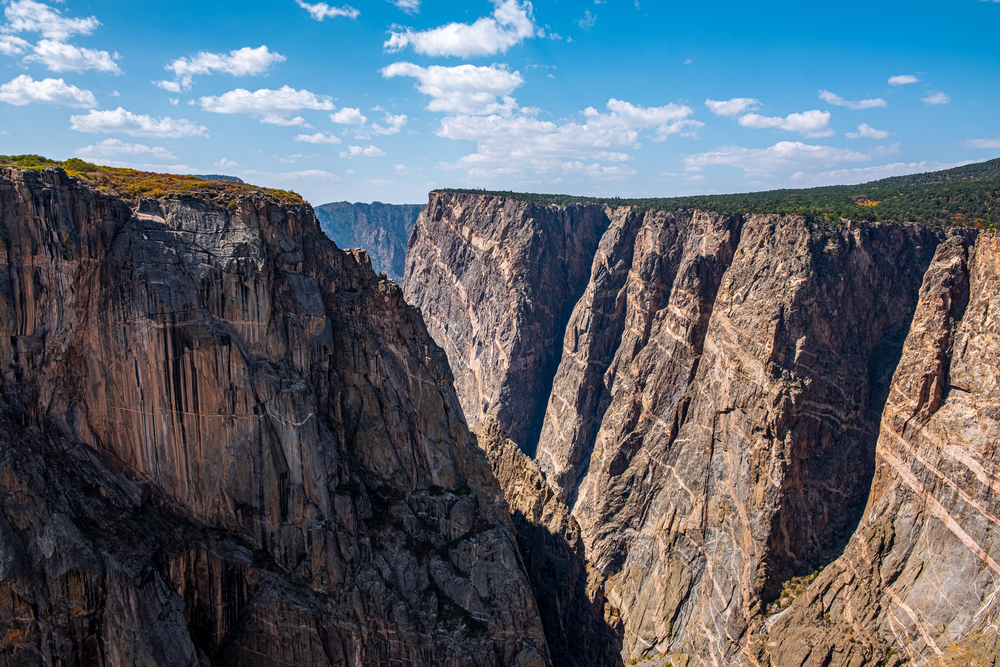
Located in beautiful western Colorado is the Black Canyon of the Gunnison National Park. The park sits surrounded by a steep-walled gorge that was carved over millions of years by the mighty Gunnison River.
As you explore, you’ll be treated to incredible views of the Black Canyon’s dramatic drops. You’ll also discover the stunning Painted Wall cliff with its colorful striated patterns and plenty more breathtaking vistas.
But it’s not just the scenery that’s impressive in this national park. Black Canyon of the Gunnison also features a diverse range of wildlife, including bighorn sheep, black bears, elk, and golden eagles.
Tip: The South Rim is the most visited, though locals insist the North Rim is better.
Great Sand Dunes National Park
- Established Date: October 21, 1999
- Yearly Visitations: 602,613 (in 2021)
- Best Time To Go: Mid-April – Mid-November
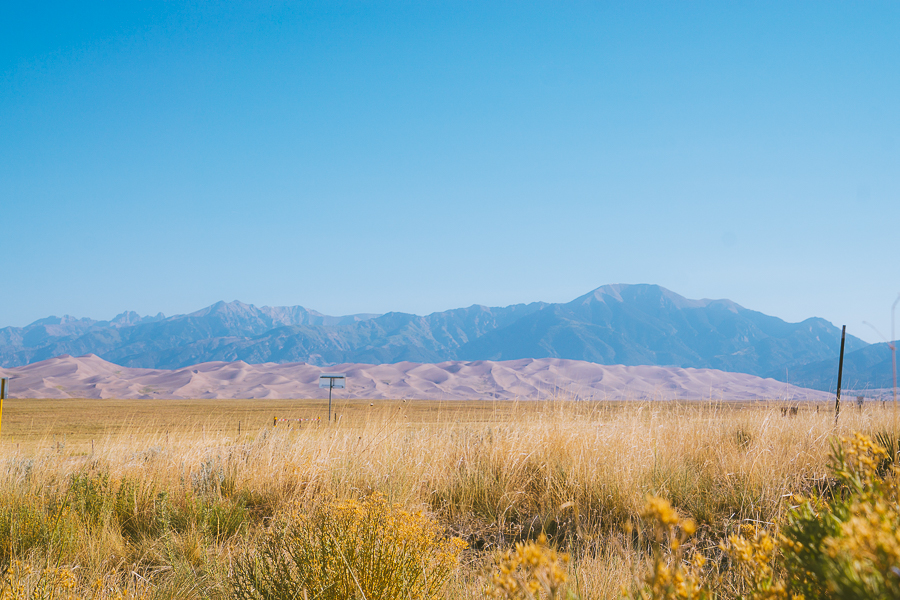
Great Sand Dunes National Park and Preserve is a gorgeous wilderness area in the southern region of Colorado. It is known for its diverse landscapes, comprising grasslands, lush forests, wetlands, and alpine lakes.
A must-see attraction is the impressive Star Dune, which stands 750 feet tall. Another is the seasonal Medano Creek, which is home to trout and other tundra wildlife such as the American pika, bighorn sheep, and yellow-bellied marmot.
Great Sand Dunes National Park also offers endless opportunities for fun. There is also a myriad of activities that you can enjoy on the beaches formed at the base of the dunes.
Mesa Verde National Park
- Established Date: June 29, 1906
- Yearly Visitations: 548,477 (in 2021)
- Best Time To Go: Mid-May – Mid-September
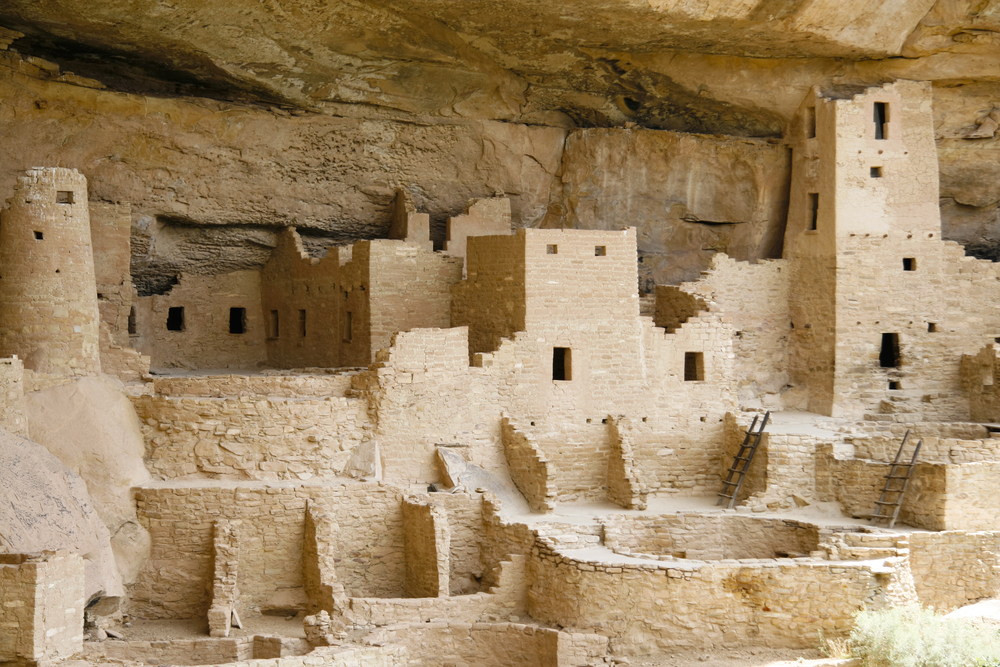
Come explore Mesa Verde National Park and immerse yourself in the ancient history and stunning beauty of the American Southwest. Here you’ll be able to witness the incredible legacy of the Ancestral Puebloan people.
Discover well-preserved cliff dwellings and structures that date back centuries—the most notable of these being the monumental Cliff Palace. You can also gain a deeper understanding of the region’s ancient culture by visiting the Chapin Mesa Archeological Museum, which provides fascinating insights into the lies of the park’s earliest inhabitants.
Tip: For a leisurely experience, take a scenic drive along the Mesa Top Loop Road, which passes by many of the national park’s top attractions.
Rocky Mountain National Park
- Established Date: January 26, 1915
- Yearly Visitations: 4,434,848 (in 2021)
- Best Time To Go: July and August
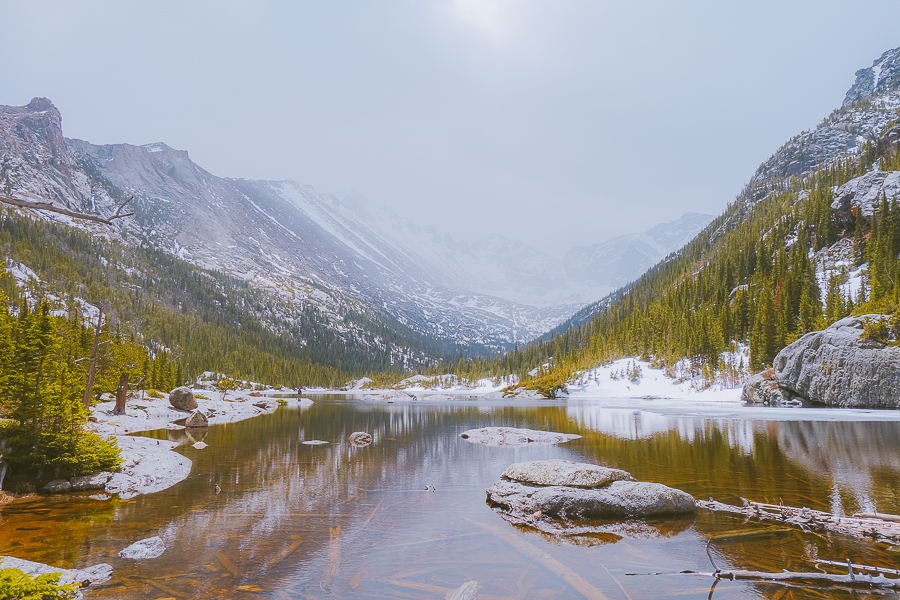
Next up is Rocky Mountain National Park, a vast wilderness that spans across the majestic Continental Divide in Northern Colorado. The park boasts stunning mountains, dense forests, and breathtaking alpine tundra that offer endless opportunities for exploration.
Admire the park’s natural beauty by taking a scenic drive along the Trail Ridge Road or the Old Fall River Road, which passes by rushing rivers and golden aspen trees. Daredevils and hikers will love the challenging Keyhole Route, which leads up Longs Peak, the tallest mountain in the national park.
Tip: Visit earlier in the day to avoid the large crowds, high temperatures, and potential afternoon rainfall.
Florida
Biscayne National Park
- Established Date: June 28, 1980
- Yearly Visitations: 705,655 (in 2021)
- Best Time To Go: All Year
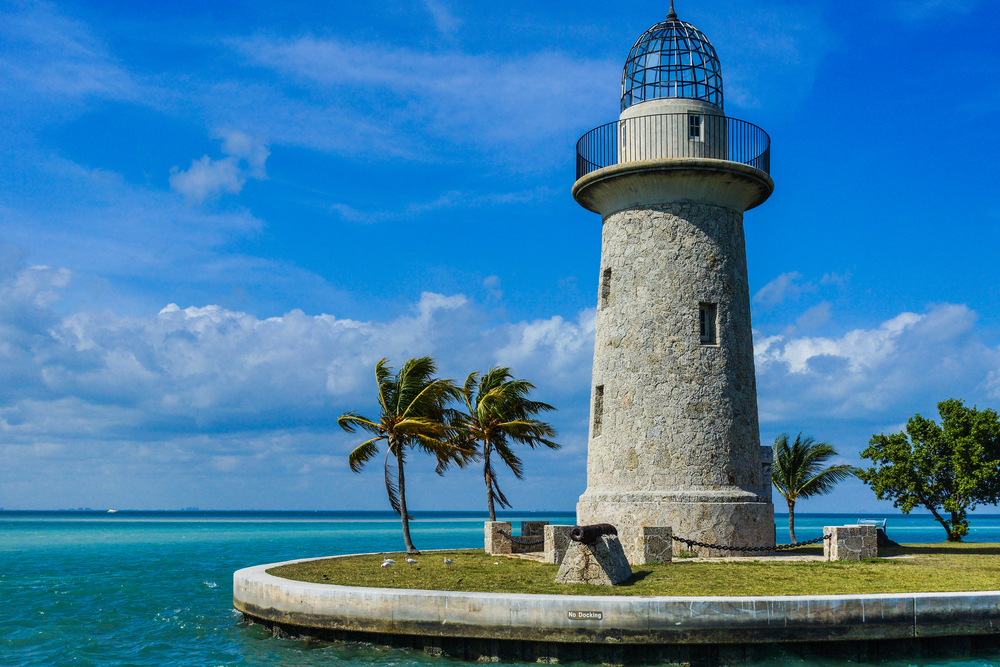
Biscayne National Park is a stunning coastal oasis nestled in the Florida Keys. The unique park is 95% water, featuring turquoise waters, mangrove forests, vibrant coral reefs, and an abundance of marine life. Inhabiting the waters are dolphins, sea turtles, manatees, and tropical fish.
One of the best ways to experience Biscayne National Park is on (or in) the water. Go kayaking or paddle boarding through the mangrove forests or snorkeling or diving in the shallow waters.
There’s also plenty to do on the park’s white sandy beaches, like discovering shipwrecks and soaking up the Florida sun.
Dry Tortugas National Park
- Established Date: October 26, 1992
- Yearly Visitations: 83,817 (in 2021)
- Best Time To Go: All Year
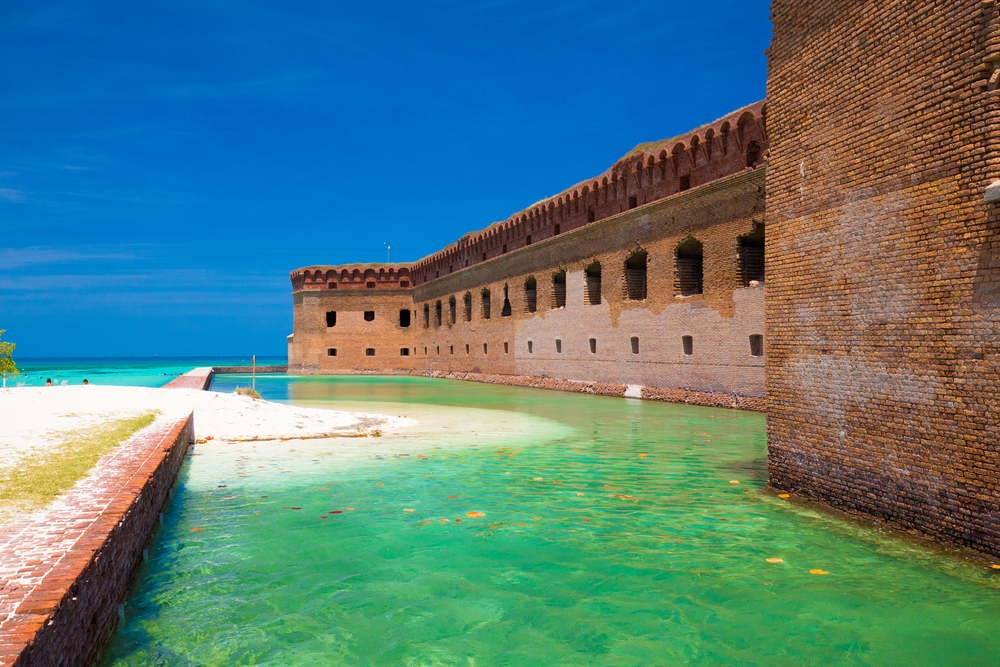
Dry Tortugas National Park is a remote oasis located in the Gulf of Mexico, just west of Key West, Florida. This park is made up of seven small islands, which are surrounded by protected coral reefs teeming with marine life.
One of the biggest attractions in the national park is Fort Jefferson. The historic landmark dates back to the 19th century, once serving as a naval base during the Civil War. There’s also the iconic lighthouse at Loggerhead Key and the Windhammer Wreck at Loggerhead Reef.
Tip: While there’s certainly plenty for history buffs, bird lovers are treated too, as more than 100,000 sooty terns visit the park during their nesting season (March through September).
Everglades National Park
- Established Date: May 30, 1934
- Yearly Visitations: 942,130 (in 2021)
- Best Time To Go: All Year
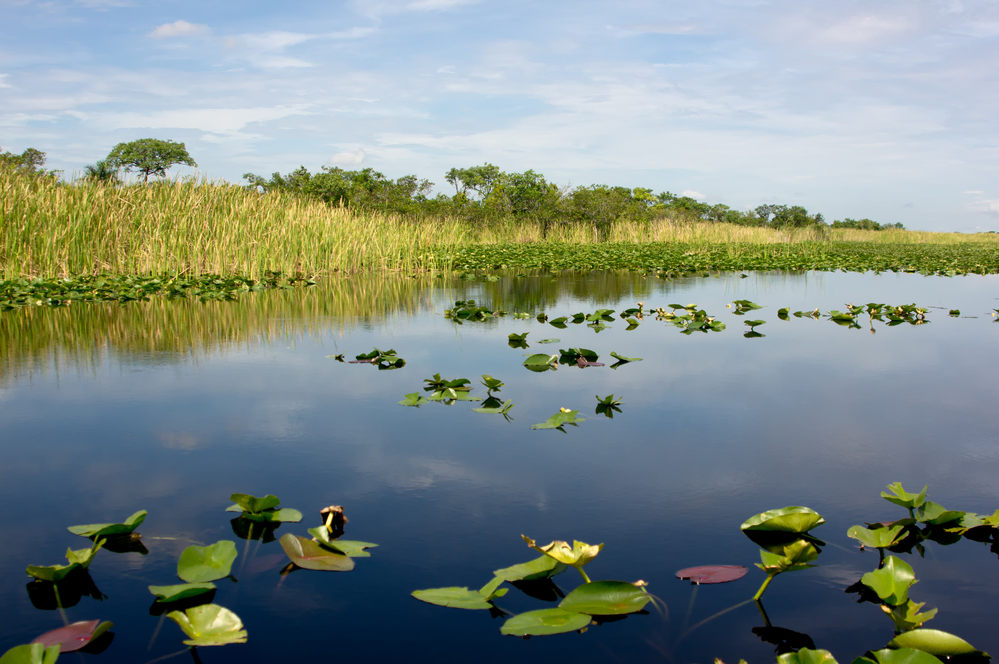
Everglades National Park is a vast and unique wilderness spanning 1.5 million acres on the southern tip of Florida. It is home to hundreds of animal species, including some of the most endangered in the world. Here, you’ll have the chance to spot the Florida panther, American crocodile and alligator, West-Indian manatee, and many rare birds.
All of the wildlife play a role in the park’s delicate ecosystem comprising marshes, mangroves, and wetlands. Through various hiking trails and boat trips, you’ll be able to explore their home and get a deeper look into the beauty of the Everglades.
Tip: To learn more about the park’s fascinating history and ecology, be sure to stop by the visitor center.
Hawaii
Haleakala National Park
- Established Date: September 13, 1960
- Yearly Visitations: 853,181 (in 2021)
- Best Time To Go: All Year
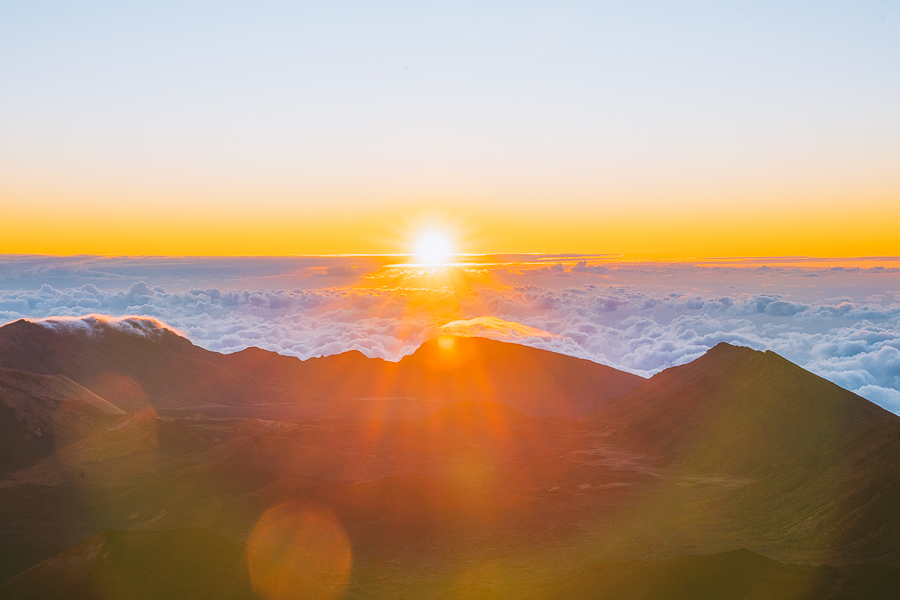
You’re in for a real treat when you visit Haleakala National Park. Situated on the beautiful island of Maui, the park offers a range of experiences that are sure to leave you in awe.
First is the island’s volcano, which stands over 10,000 feet above sea level. You can hike to the summit here for a breathtaking sunrise or sunset view or explore the unique terrain of the crater itself.
While the volcano is the park’s biggest draw, you’ll also find lush rainforests, waterfalls, and a diverse range of plant and animal species.
Tip: For an unforgettable experience, try overnight camping. There’s no better way to take in the serene beauty of the national park and the enchanting Hawaiian sky.
Hawai’i Volcanoes National Park
- Established Date: August 1, 1916
- Yearly Visitations: 1,262,747 (2021)
- Best Time To Go: All Year
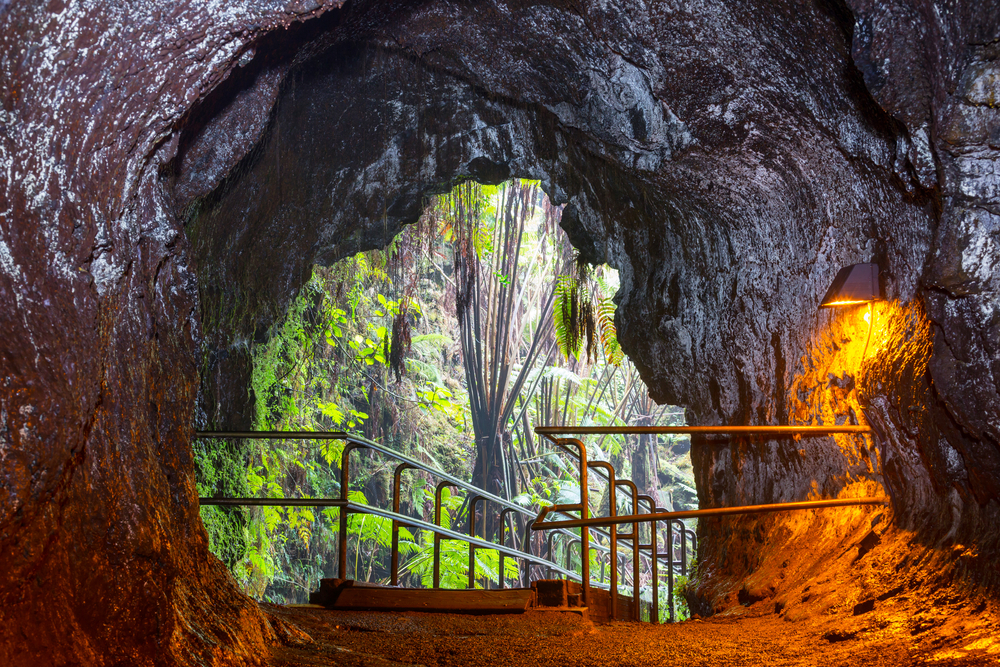
Located on the Big Island of Hawaii is the popular Hawai’i Volcanoes National Park. This incredible destination is home to Kilauea and Mauna Loa—two of the world’s most active volcanoes.
Exploring this national park provides a memorable experience. Make your way across diverse landscapes ranging from lush rainforests to arid deserts. You may also get to observe lava flows and glowing red vents spewing steam and gas.
Some other highlights include the Thurston Lava Tube and the scenic Crater Rim Drive and Chain of Craters Road.
Tip: Head to Jaggar Museum to discover the park’s cultural heritage and witness the power of the Halema’uma’u Crater from a breathtaking viewpoint.
Idaho
Yellowstone National Park, (Idaho, Montana, and Wyoming)
- Established Date: March 1, 1872
- Yearly Visitations: 4,860,242 (in 2021)
- Best Time To Go: Fall and Spring
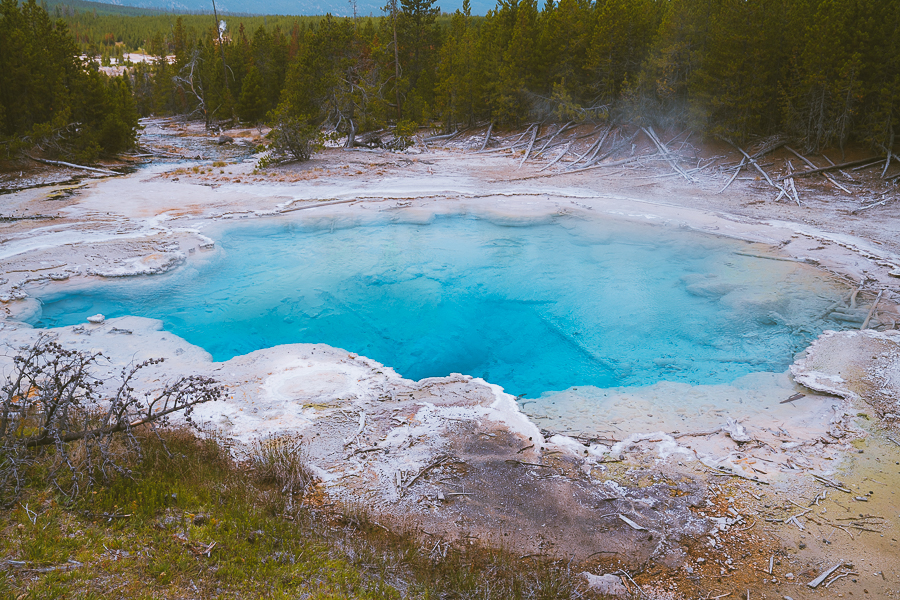
Nothing screams adventure quite like Yellowstone National Park, a wonderland of natural beauty and wildlife that is sure to leave you awestruck. As you explore, you’ll come across lush forests, towering waterfalls, and some of the most breathtaking mountain views. There are also bubbling geysers and hot springs, among many other natural wonders.
But it’s not just the scenery that’s amazing. Yellowstone is also home to a diverse range of wildlife, including the recently restored gray wolves. You’ll feel like you’re in a fairytale as you watch these majestic creatures roam free in their natural habitat.
Tip: For the best experience, hit the trails! Just a half-mile walk along any path or boardwalk will provide you with a clear glimpse into the beauties of Yellowstone.
YELLOWSTONE National Park
Related Posts
Illinois
Gateway Arch National Park, (Missouri and Illinois)
- Established Date: February 22, 2018
- Yearly Visitations: 1,145,081 (in 2021)
- Best Time To Go: All Year
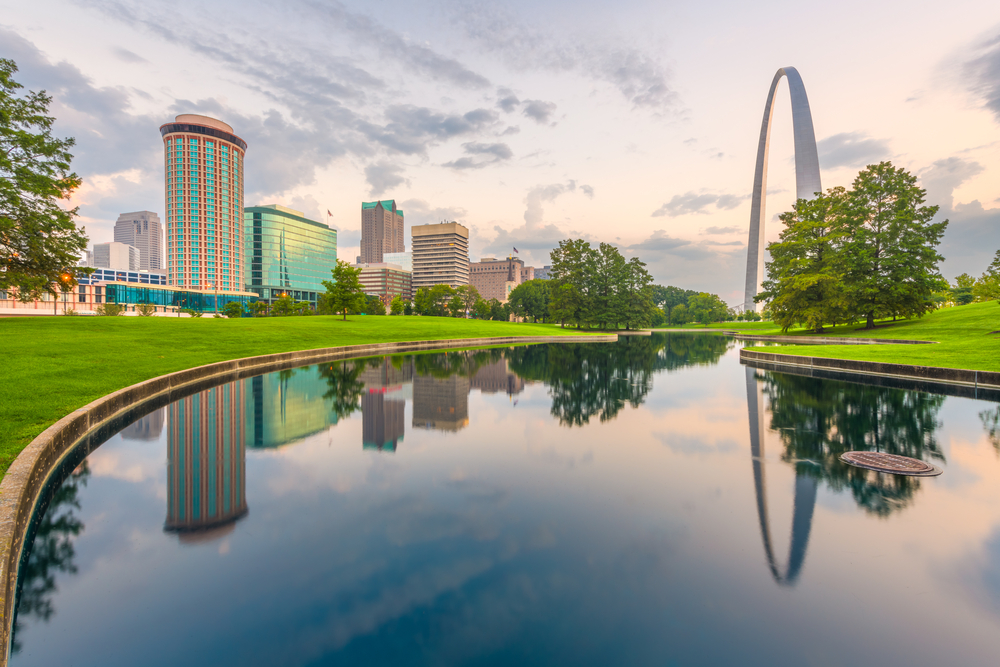
For a fun and leisurely experience suitable for the whole family, head to Gateway Arch National Park. As you wander around, immerse yourself in the stunning beauty and rich history of St. Louis, Missouri.
The national park’s biggest attraction is undoubtedly the Gateway Arch. This is the tallest monument in the United States, standing an impressive 630 feet tall. As you approach it, you’re sure to be blown away by its sheer size, grandeur, and beauty. Take a ride to the top and get a unique view of the city below.
Indiana
Indiana Dunes National Park
- Established Date: February 15, 2019
- Yearly Visitations: 3,177,210 (in 2021)
- Best Time To Go: Spring and Fall
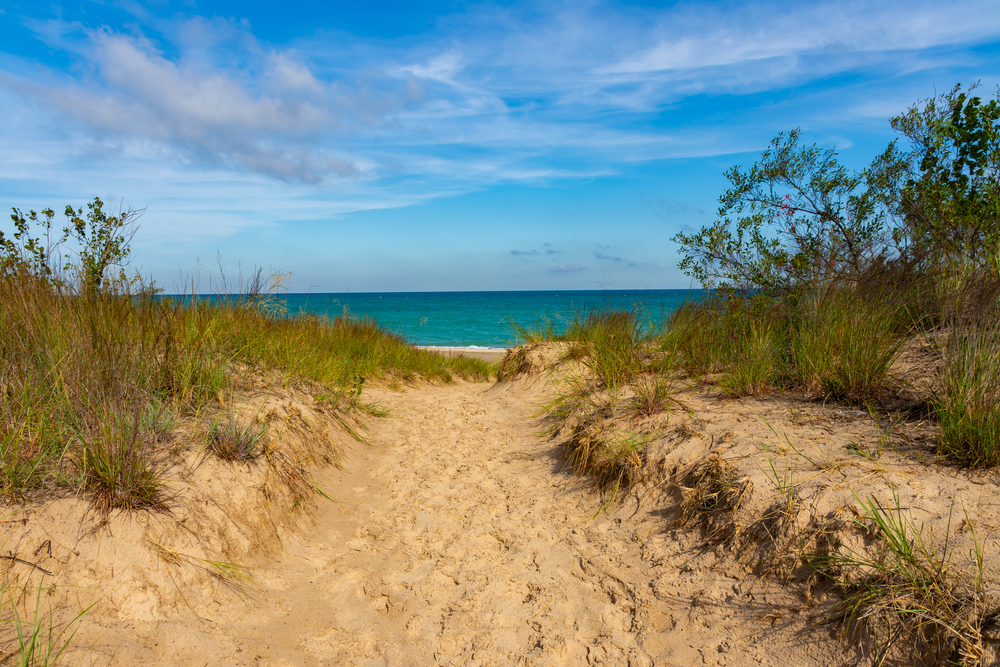
For a breathtaking adventure in the great outdoors, head to Indiana Dunes National Park. With towering sand dunes, green forests, and the sparkling waters of Lake Michigan, you’ll be itching to explore.
Hiking enthusiasts will love the plethora of hiking trails available in this national park. These range from leisurely strolls to challenging treks up some of the tallest sand dunes. For a more relaxing experience, take a dip in the lake or try your hand at fishing. You can also opt to go kayaking or windsurfing.
Tip: Go early to secure a parking spot near the national park’s lakeshore, as lines can become long later in the day.
Kentucky
Mammoth Cave National Park
- Established Date: July 1, 1941
- Yearly Visitations: 515,774 (2021)
- Best Time To Go: Fall
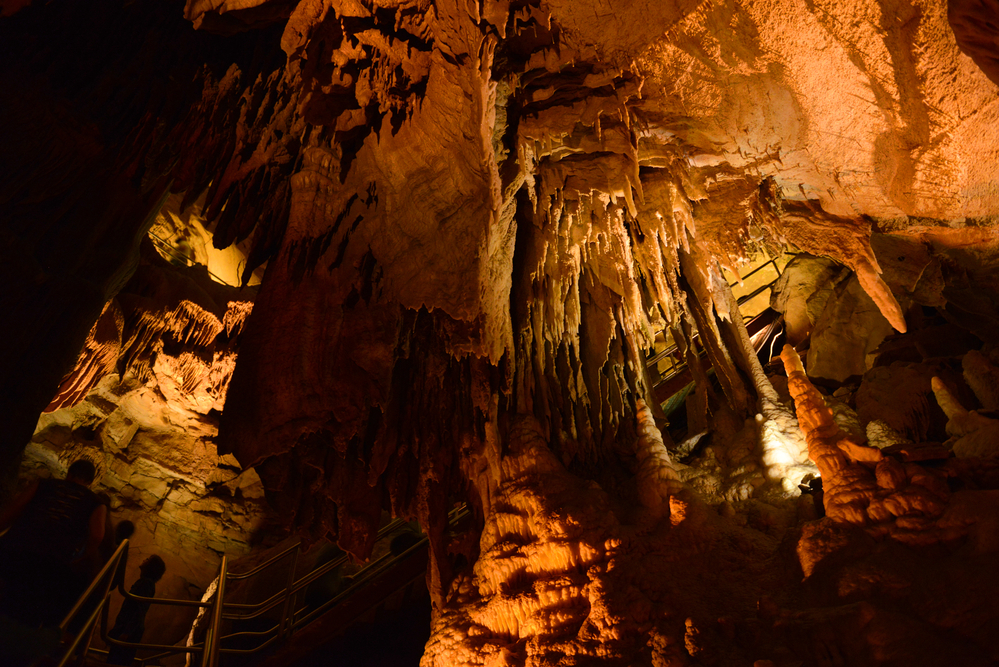
Discover a whole new world underground at Mammoth Cave National Park, a UNESCO-listed attraction home to the world’s longest cave system. As you explore the park’s extensive network of limestone caves, you’ll be astounded by the natural wonders that surround you.
As you traverse the winding and seemingly never-ending passageways, you’ll see fascinating formations of stalactites and stalagmites that appear to defy gravity. You may also discover several animals, including eyeless fish and cave salamanders.
Above the ground, enjoy views of the park’s dense forest and rolling hills. Or, try your hand at something more daring, like zip-lining.
Maine
Acadia National Park
- Established Date: February 26, 1919
- Yearly Visitations: 4,069,098 (2021)
- Best Time To Go: Fall
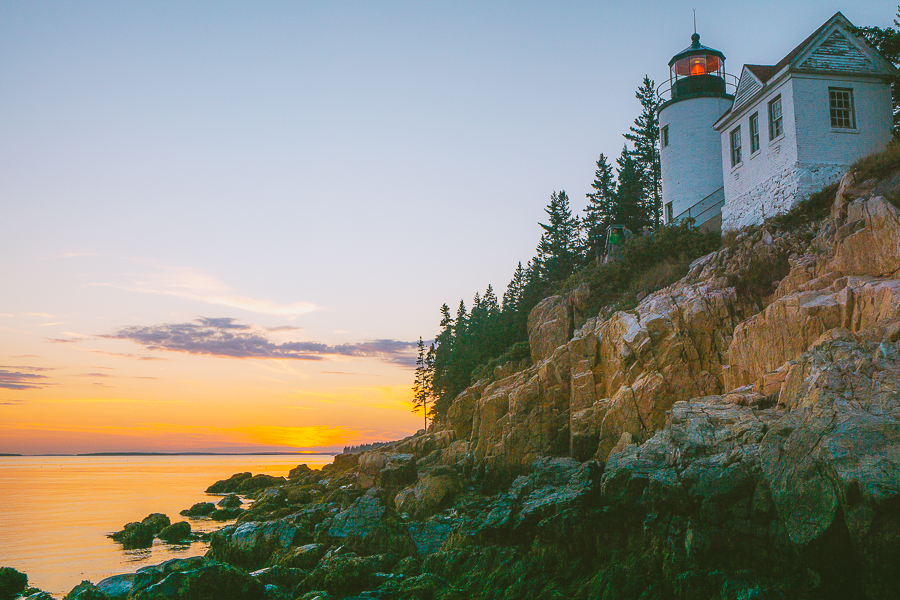
Next up is Acadia National Park, a stunning 47,000-acre recreation area on the Atlantic coast of Maine. Discover some of the most breathtaking views in the United States. Here, landscapes range from woodlands and rocky beaches to glacier-sculpted granite peaks.
Among the many natural wonders, the most popular is Cadillac Mountain, the highest point on the East Coast. Hike up, and you’ll be rewarded with panoramic views of the Atlantic Ocean and the surrounding scenery. Or, take an easy stroll along the park’s shores.
Acadia National Park
Related Posts
Michigan
Isle Royale National Park
- Established Date: March 3, 1931
- Yearly Visitations: 25,844 (2021)
- Best Time To Go: Mid-April – Mid-October
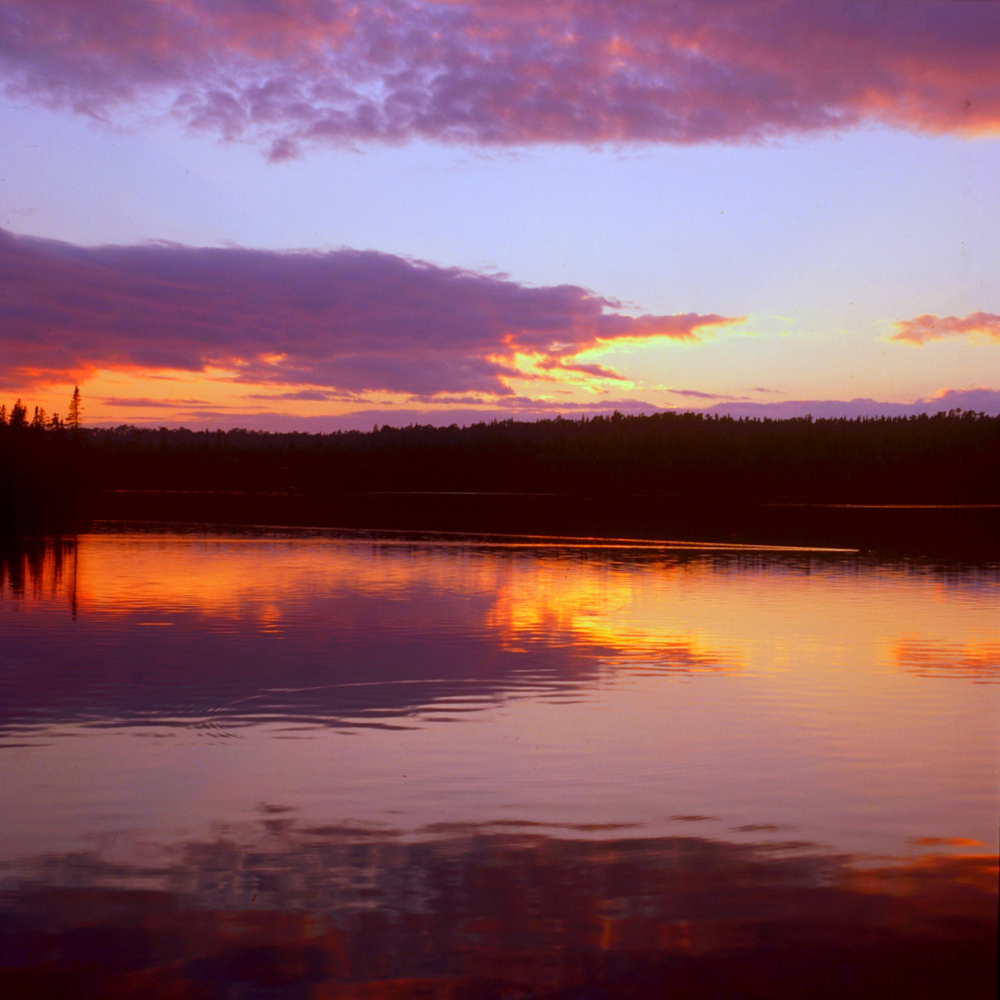
Escape the hustle and bustle of everyday life at Isle Royale National Park, a remote island cluster northwest of Lake Superior. With over 400 islands to explore and miles of pristine wilderness, you’re sure to feel a sense of adventure and excitement the moment you enter.
Nature lovers will enjoy venturing through the thick forests and rugged shorelines of the park as it houses a vast array of animals. Common sightings include moose, beavers, otters, wolves, and red foxes. You may also find evidence of human habitation that dates back more than 4,000 years.
Tip: Weather on the islands can be unpredictable and rough waters, or low visibility can lead to ferry delays, so dress appropriately and plan ahead where possible.
Minnesota
Voyageurs National Park
- Established Date: January 8, 1971
- Yearly Visitations: 243,042 (2021)
- Best Time To Go: Spring and Fall
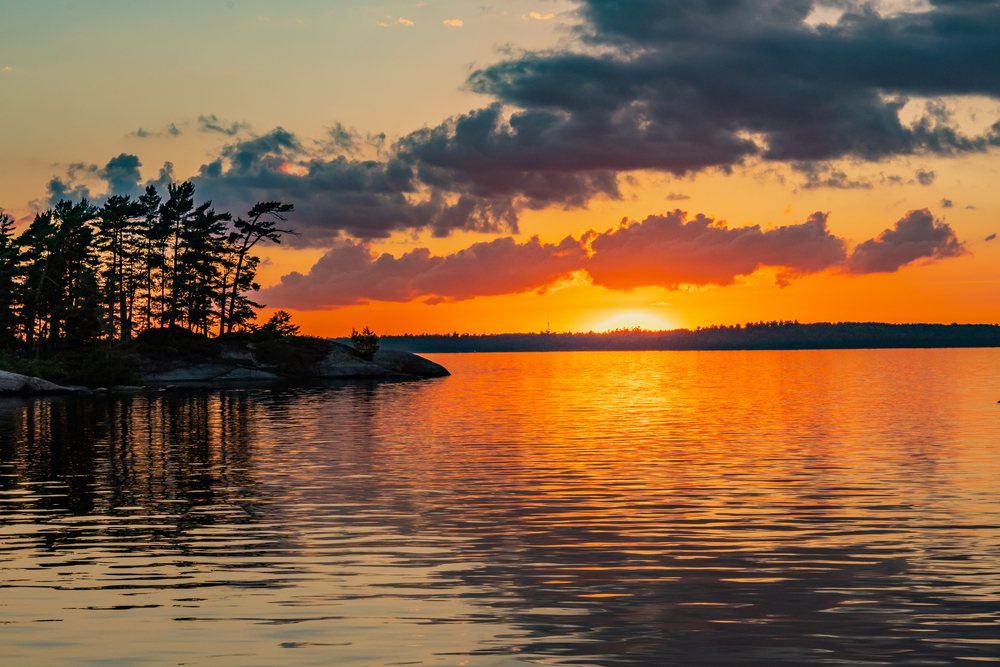
You’re in for a treat as you visit Voyageurs National Park, a picturesque destination in the northern part of Minnesota. In this expansive park, you’ll find forests, waterways, and the sprawling Rainy, Kabetogama, and Namakan lakes.
Immerse yourself in the natural beauty of this untouched wilderness by boating or tackling its thrilling selection of hiking trails. Along the way, spot sun-basking otters, soaring bald eagles, and plenty more.
History buffs may also enjoy the Ellsworth Rock Gardens and the Kettle Falls region.
Tip: For the best experience, explore Voyageurs by boat. And if you’re traveling on your own, check out the park’s lake navigation guide.
Missouri
Gateway Arch National Park, (Missouri and Illinois)
- Established Date: February 22, 2018
- Yearly Visitations: 1,145,081 (in 2021)
- Best Time To Go: All Year
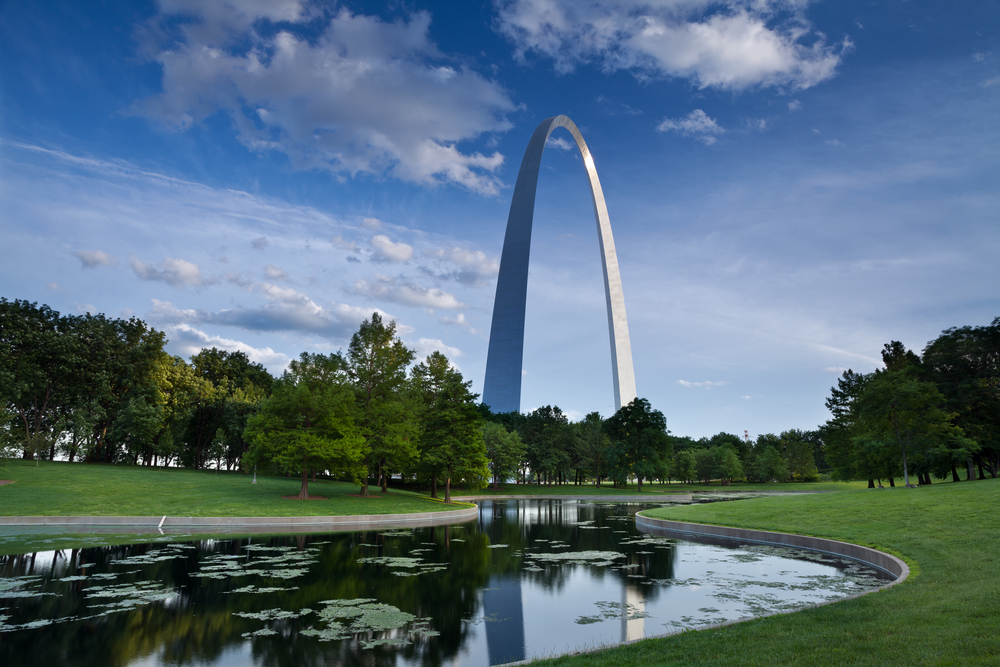
Situated on the Illinois side of the Mississippi River in St. Louis, Gateway Arch National Park is a must for people visiting. It serves as an iconic symbol of American history. When visiting, you’ll be met by breathtaking views of the Gateway Arch and the Mississippi River.
There are also several historical wonders, including the Old Courthouse and the Museum of Westward Expansion, providing a look into the city’s past. And there’s plenty of fun to be had, with outdoor activities ranging from hiking and biking to boating and picnicking.
Montana
Glacier National Park
- Established Date: May 11, 1910
- Yearly Visitations: 3,081,656 (in 2021)
- Best Time To Go: July – September
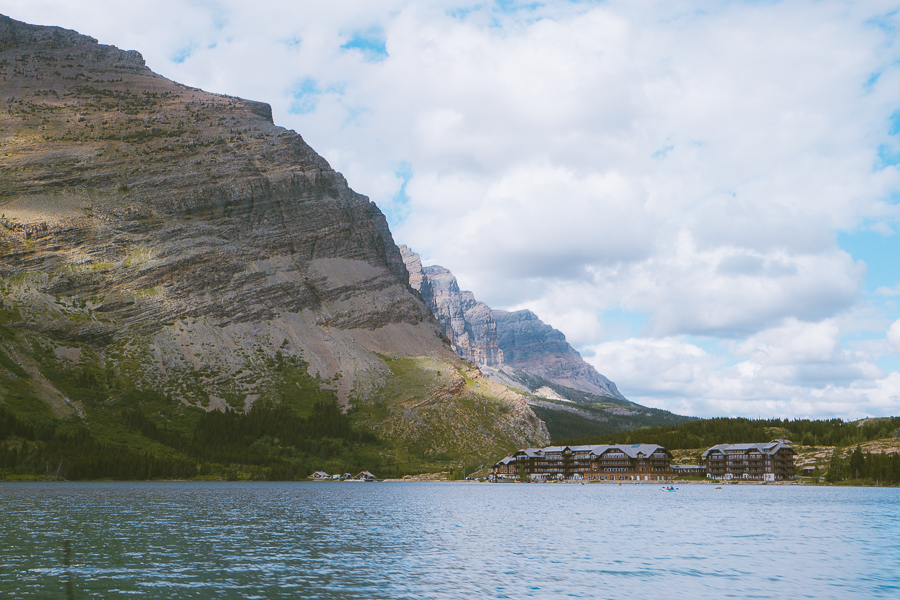
You step into a world of breathtaking beauty as you enter Glacier National Park, a sprawling 1,583-square-mile wilderness nestled in the Rocky Mountains of Montana. With its glacier-carved peaks, pristine lakes, and deep valleys, this park is a nature lover’s paradise.
Guiding you through Glacier National Park are more than 700 miles of trails. These offer incredible views of the surrounding landscape. You’ll also see plenty of wildlife, from grizzly bears to majestic mountain goats.
A popular hike is the Hidden Lake Trail. If you prefer traveling by car, take a scenic drive along the famous Going-to-the-Sun Road.
Tip: There are many activities available in Glacier National Park, including horseback riding, boating, and the thrilling Glacier Highline ropes course—so be sure to sign up!
Glacier National Park
Related Posts
Yellowstone National Park, (Idaho, Montana, and Wyoming)
- Established Date: March 1, 1872
- Yearly Visitations: 4,860,242 (in 2021)
- Best Time To Go: Fall and Spring
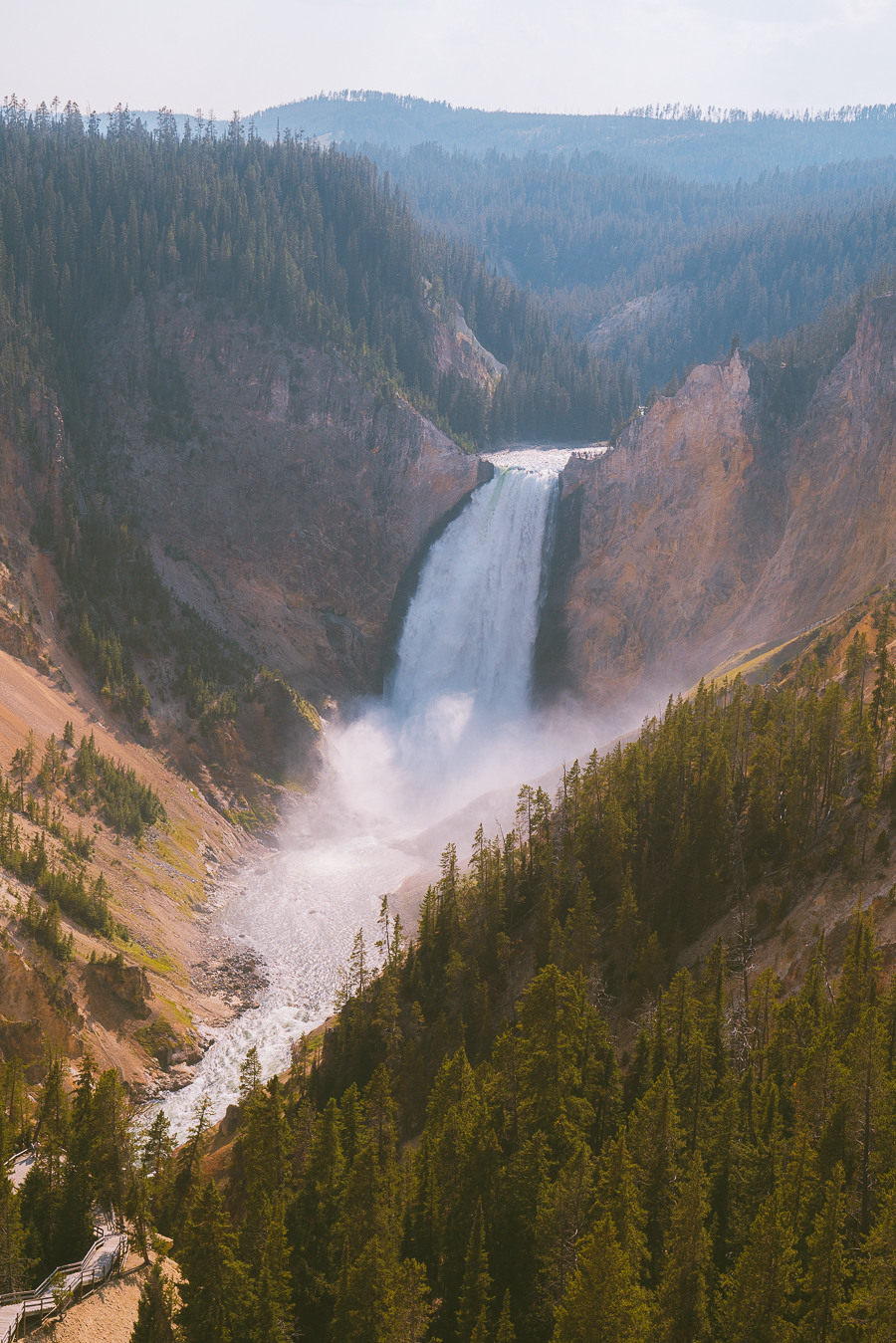
Located in the heart of the Rocky Mountains is the impressive Yellowstone National Park. Here you’ll find a diverse array of animals, including grizzly bears, elk, and gray wolves.
There are also fascinating geothermal features, like the iconic Old Faithful geyser, as well as a myriad of trails traversing the rugged backcountry. No matter what you do, expect breathtaking beauty and a one-of-a-kind adventure.
Nevada
Death Valley National Park, (California and Nevada)
- Established Date: October 31, 1994
- Yearly Visitations: 1,146,551 (in 2021)
- Best Time To Go: Spring – Fall
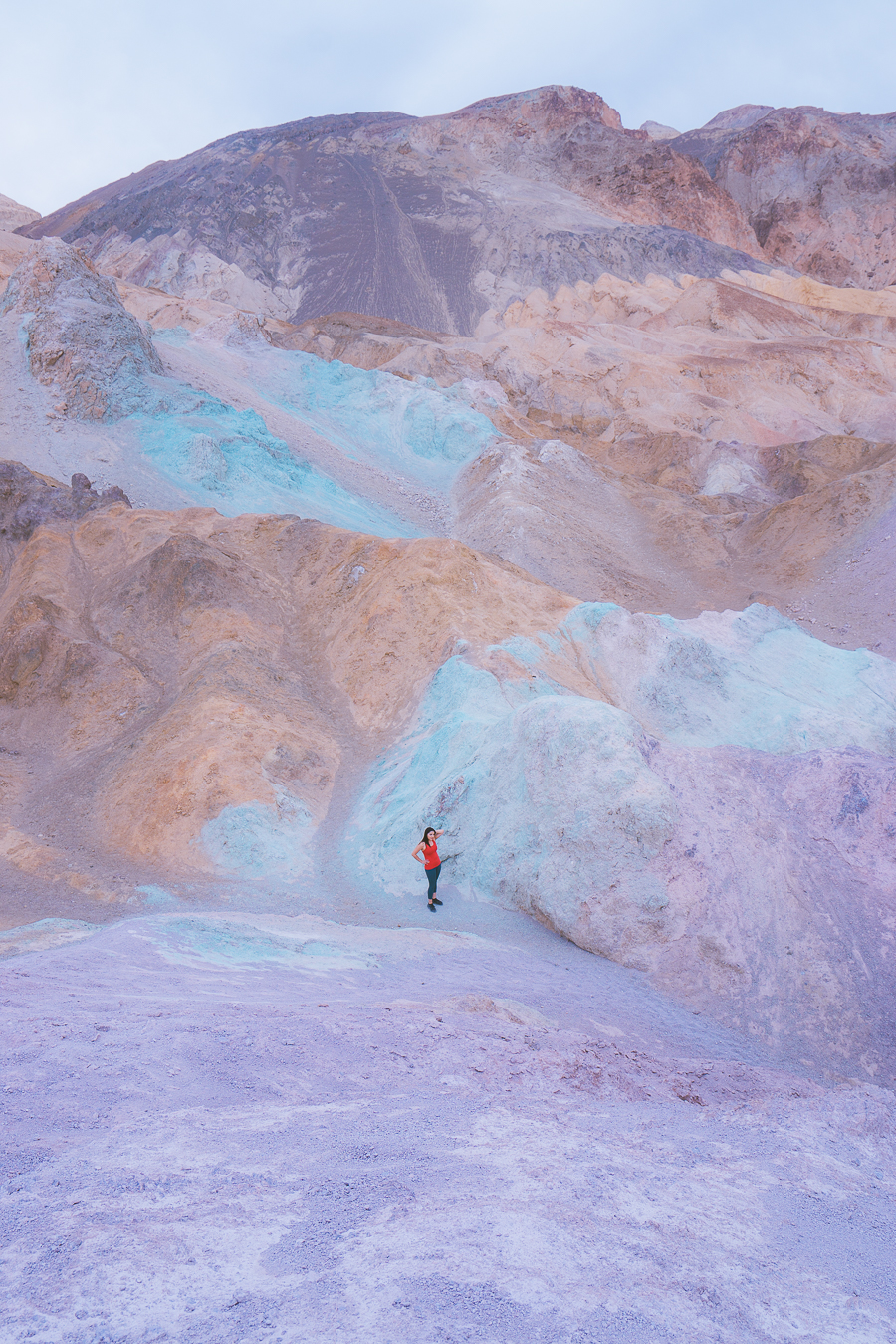
Head to Death Valley National Park to discover one of the United States’ most stunning desert landscapes. The park comprises towering mountains, mysterious salt flats, and expansive sand dunes as far as the eye can see.
There are also many interesting geological features, from the colorful badlands to the towering peaks of the Panamint Mountains. Offering an otherworldly experience, Death Valley National Park is a must-visit destination for anyone visiting Montana.
Great Basin National Park
- Established Date: October 27, 1986
- Yearly Visitations: 144,875 (2021)
- Best Time To Go: Summer
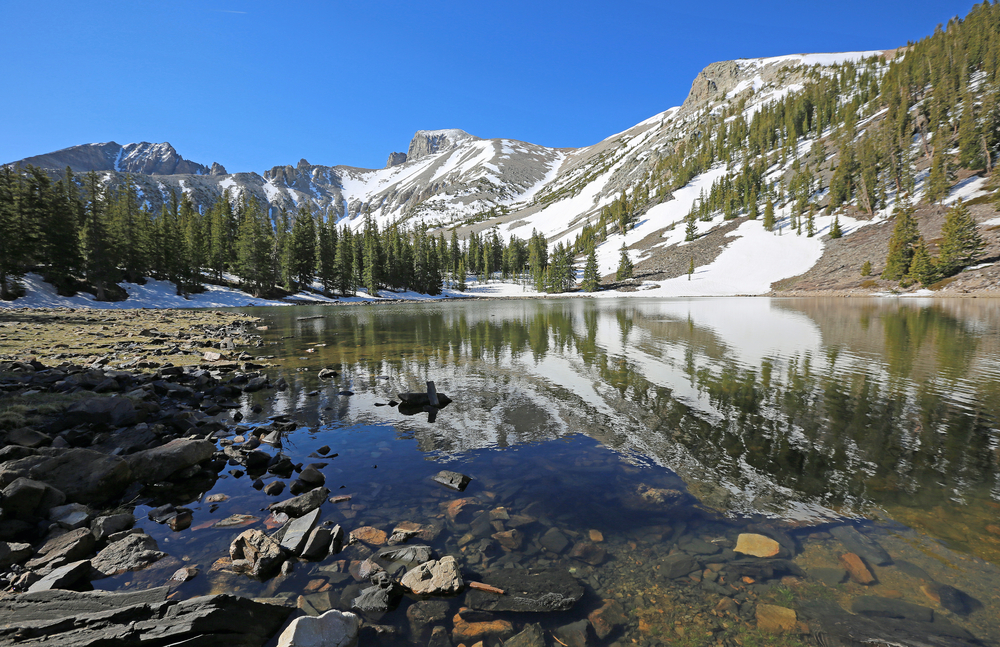
Nestled in the heart of the Great Basin Desert in the eastern part of Nevada is the gorgeous Great Basin National Park. Home to most of the South Snake Mountains, you can expect some of the most awe-inspiring vistas.
Other must-see attractions include the joyous Wheeler Peak Scenic Drive, which takes you through the mountains toward the top of Wheeler Peak, and the ancient bristlecone pine groves nearby. There’s also the enchanting Lehman Caves, which houses some interesting rock formations, including stalactites and stalagmites.
Tip: While entering the Great Basin National Park is free, the cave tours require a fee. These fill up fast, so be sure to book in advance.
New Mexico
Carlsbad Caverns National Park
- Established Date: May 14, 1930
- Yearly Visitations: 349,244 (in 2021)
- Best Time To Go: May – October
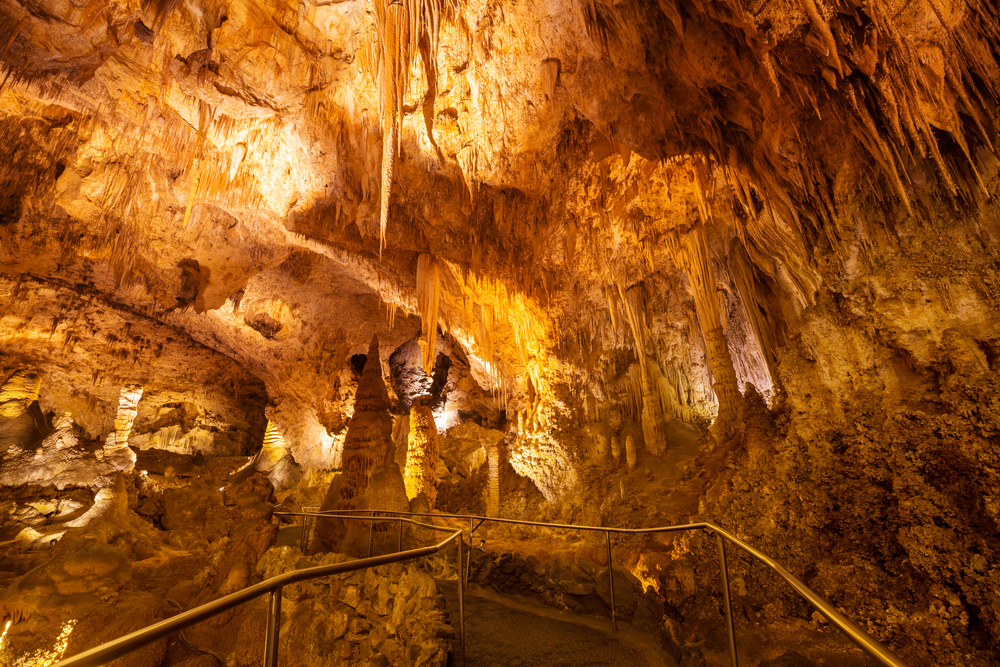
Discover a world of incredible underground wonders at New Mexico’s Carlsbad Caverns National Park. Take a deep descent into one of the world’s most extensive underground cave systems and marvel at the unique crystal formations and delicate stalactites and stalagmites.
The most popular attraction in the park is the Big Room, which spans more than 4,000 feet and houses some of the world’s largest underground chambers. For the more daring, there are also tours that take you to some of the cave’s tightest spaces.
Above the ground, the park offers plenty too. Enjoy everything from scenic hiking trails to incredible wildlife viewing opportunities.
Tip: Food and drinks are not permitted in the caves; however, you’re welcome to bring along plain water.
White Sands National Park
- Established Date: December 20, 2019
- Yearly Visitations: 782,469 (in 2021)
- Best Time To Go: Late October – Early November
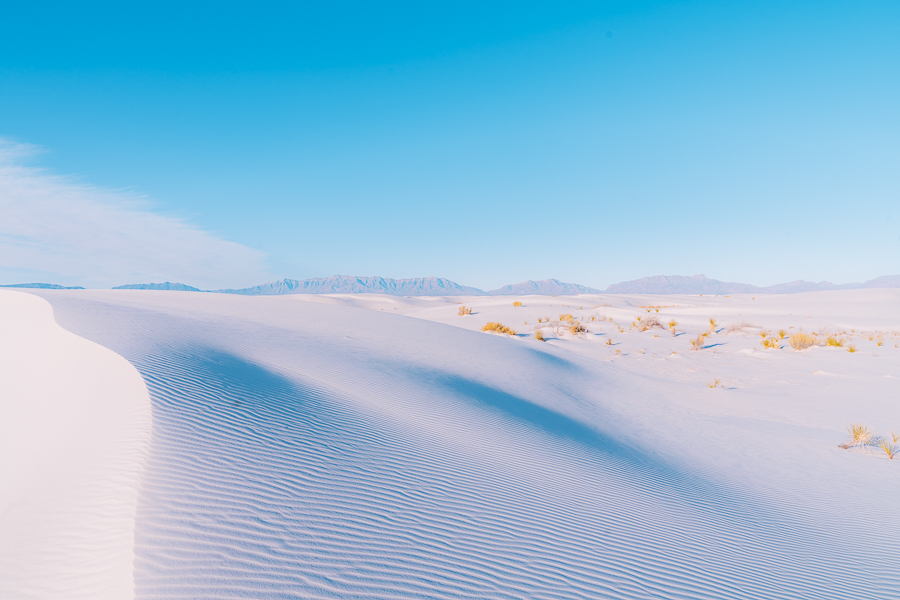
Located in the heart of New Mexico is the vast White Sands National Park, where you will find 275 square miles of white gypsum sand dunes. With some towering up to 60 feet high, this unique landscape is truly a sight to behold.
It’s also one that offers endless opportunities for adventure, with various hiking routes and the chance to sled along the park’s pristine, powdering sands. And if you’ve visited before, do not expect the same experience as the park’s 4.5 billion tons of sand shifts and changes shape each and every day.
North Dakota
Theodore Roosevelt National Park
- Established Date: November 10, 1978
- Yearly Visitations: 796,085 (in 2021)
- Best Time To Go: Summer
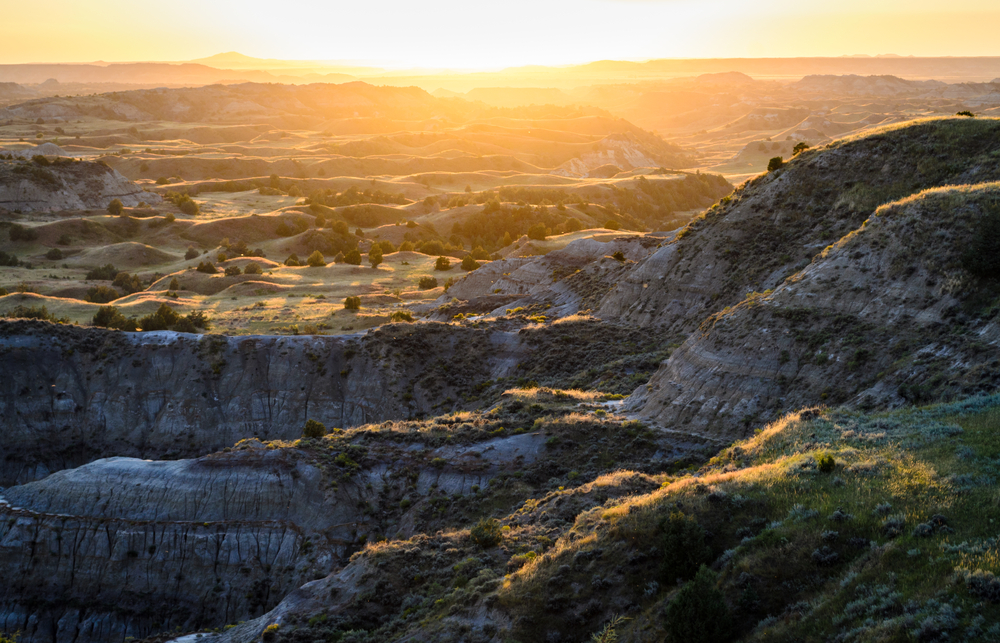
Situated in the western part of North Dakota is Theodore Roosevelt National Park, a vast wilderness where the sweeping Great Plains meet the jagged Badlands. The park is divided into three sections, all connected by the winding Little Missouri River, and features gorgeous terrain that will leave you in awe.
One of the main attractions in the park is the South Unit. Here you’ll find the stunning Painted Canyon, known for its vivid and colorful hues. There’s also the Maltese Cross Cabin, which was once the residence of former President Theodore Roosevelt.
Tip: There are numerous programs for visitors to enjoy, including guided ranger hikes, geology talks, teddy bear picnics, and plenty more.
North Carolina
Great Smoky Mountains National Park, (North Carolina and Tennessee)
- Established Date: June 15, 1934
- Yearly Visitations: 14,137,812 (in 2021)
- Best Time To Go: Summer and Fall
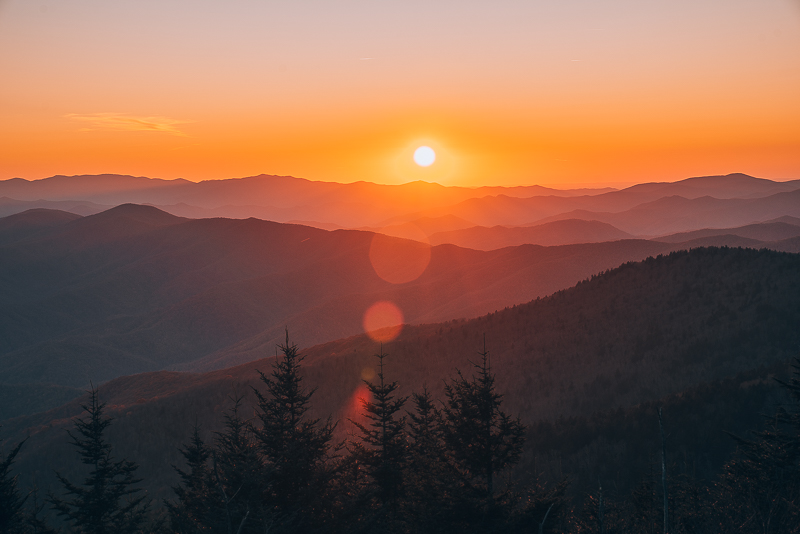
Nestled on the border of North Carolina and Tennessee is the magnificent Great Smoky Mountains National Park. The park offers some of the best hiking opportunities, including a section of the famous Appalachian Trail. As you explore, take in the beauty of the park’s expansive landscape comprising lush forests, streams, and wildflowers that bloom throughout the year.
Another iconic attraction is the towering Clingmans Dome. This is the highest peak in the park. Head to the top, and you’ll find an observation tower that provides an unbeatable vantage point for taking in the picturesque scenery.
Great Smoky Mountains National Park
Related Posts
Ohio
Cuyahoga Valley National Park
- Established Date: October 11, 2000
- Yearly Visitations: 2,575,275 (in 2019)
- Best Time To Go: Spring and Fall
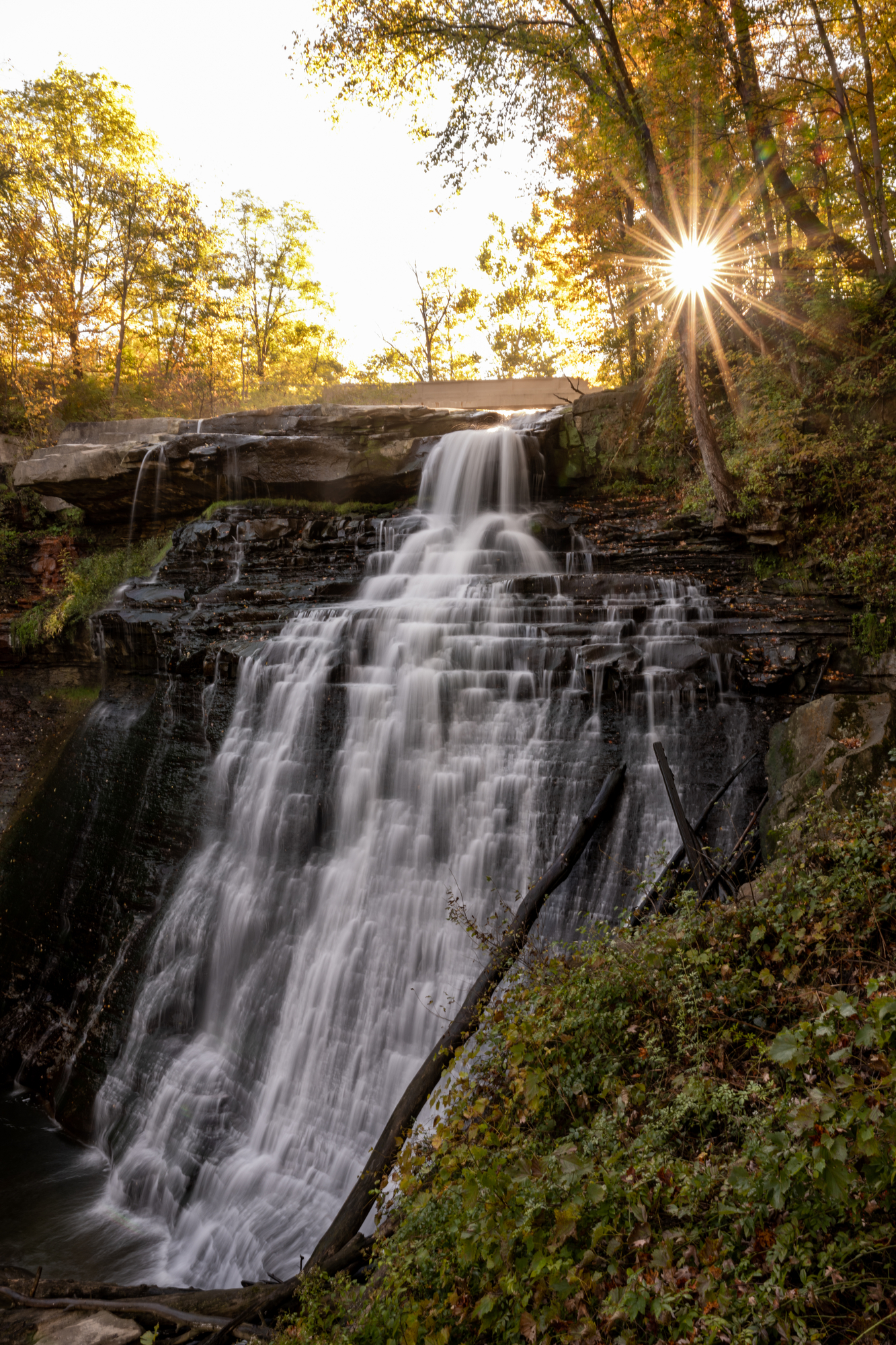
Get ready to embark on a journey through history and nature at Cuyahoga Valley National Park, a stunning destination located between the Ohio cities of Cleveland and Akron. The park sits around the Cuyahoga River and is filled to the brim with awe-inspiring scenery.
In the park’s north, you’ll find the Canal Exploration Center, which offers a deep look into the rich history of the 19th-century waterway. There’s also the Cuyahoga Valley Scenic Railroad, which winds its way through the park and offers clear views of the park’s gorgeous landscape.
Tip: To see the best of what Cuyahoga Valley National Park has to offer, follow the Ohio and Erie Canal Towpath Trail.
Oregon
Crater Lake National Park
- Established Date: May 22, 1902
- Yearly Visitations: 647,751 (in 2021)
- Best Time To Go: Summer
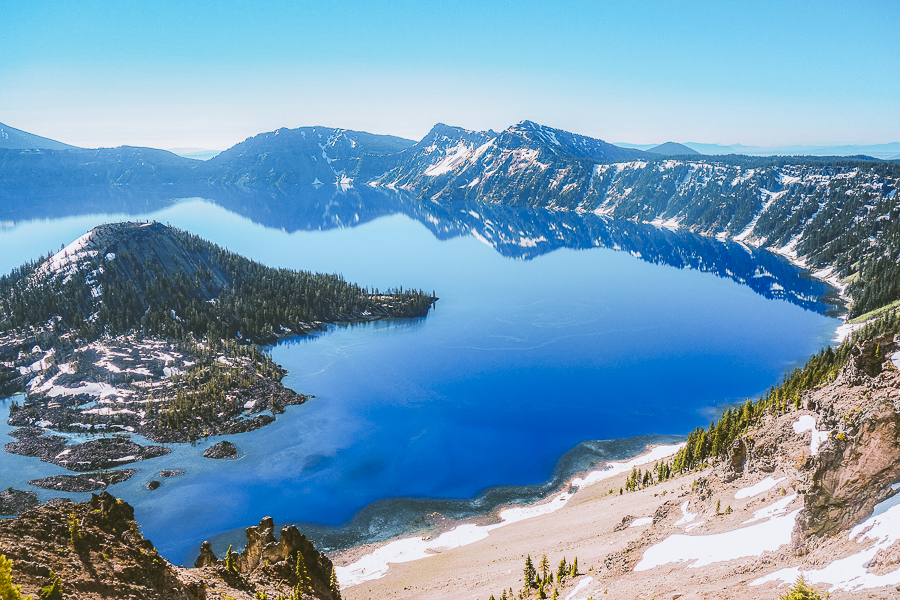
Located in the heart of Oregon’s Cascade Mountains is the stunning Crater Lake National Park. As one might expect, the park’s most renowned feature is Crater Lake. This is a mesmerizingly deep body of water created by the collapse of Mount Mazama, a volcano that erupted over 7,000 years ago.
There’s also Wizard Island, characterized by its unique cinder cone shape, as well as the popular Rim Drive. This is a scenic road that encircles the lake and offers unobstructed views of the park’s many geological formations.
Tip: Hike the Sun Notch trail to get incredible views of the Phantom Ship, a small, ominous-looking island dotted in the middle of the expansive lake.
Crater Lake National Park
Related Posts
South Carolina
Congaree National Park
- Established Date: November 10, 2003
- Yearly Visitations: 215,181 (in 2021)
- Best Time To Go: All Year
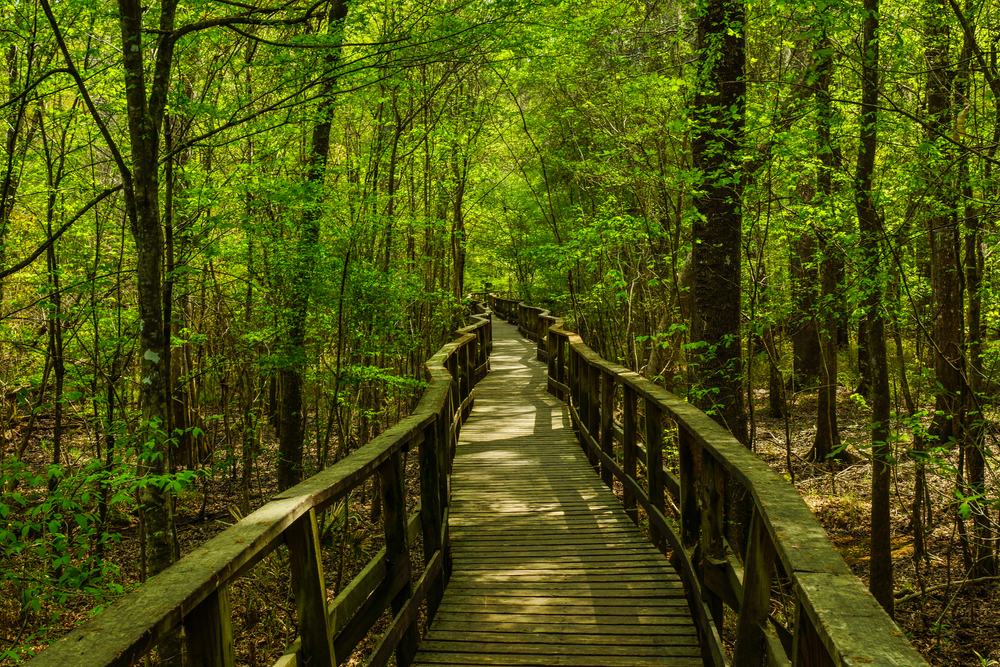
Immerse yourself in nature at Congaree National Park. Popular attractions include the Boardwalk Loop Trail, a scenic elevated pathway that guides you through the beautiful and vibrant bottomland hardwood forest. As you walk, take in views of the towering trees and enjoy the calmness of the tranquil streams.
Flowing through the heart of the national park is the picturesque Cedar Creek. Experience the cool waters and take in the surrounding scenery while canoeing or kayaking. For those looking to escape the crowds, make your way to Wise Lake, an often overlooked attraction in the park.
South Dakota
Badlands National Park
- Established Date: November 10, 1978
- Yearly Visitations: 1,224,226 (in 2021)
- Best Time To Go: Spring, April through June, and Fall, September through November
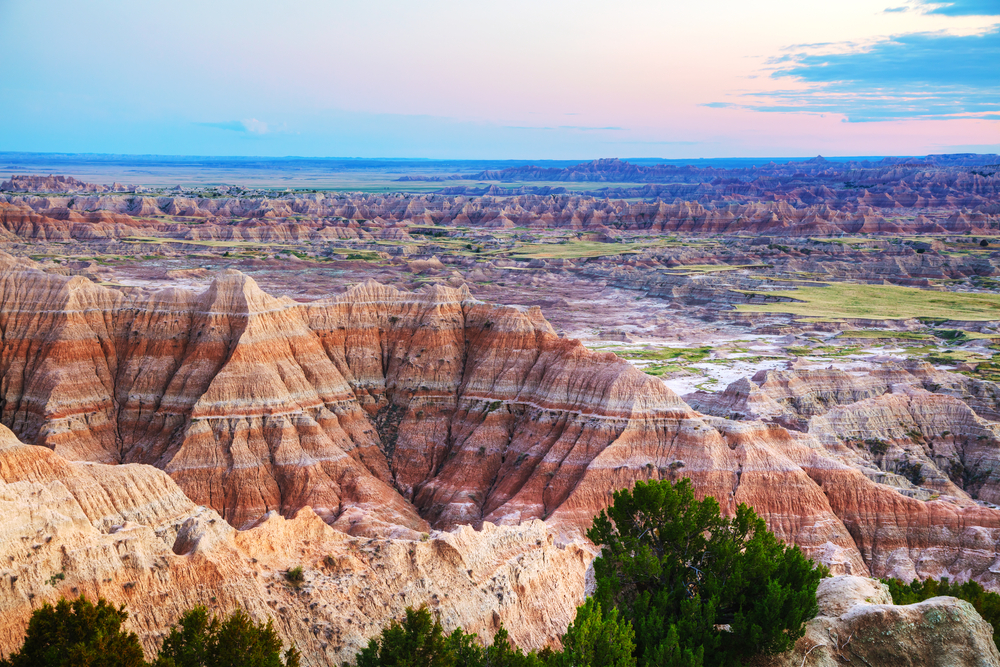
For a rocky adventure, head to Badlands National Park in South Dakota. As you enter, you’ll be met by dramatic landscapes comprising intriguing, layered rock formations, steep canyons, and tall spires. You’ll also encounter a range of wildlife, including large bison and short prairie dogs.
One of the best ways to explore the park is by taking a scenic drive along the Badlands Loop Road (Highway 240). You’ll be treated to breathtaking views from several lookout points, allowing you to take in the park’s beauty. There are also many hiking trails, including the popular Fossil Exhibit Trail.
Tip: Be sure to visit the Ben Reifel Visitor Center, as it is the starting point for many of the park’s best trails.
Wind Cave National Park
- Established Date: January 9, 1903
- Yearly Visitations: 709,001 (in 2021)
- Best Time To Go: May – September
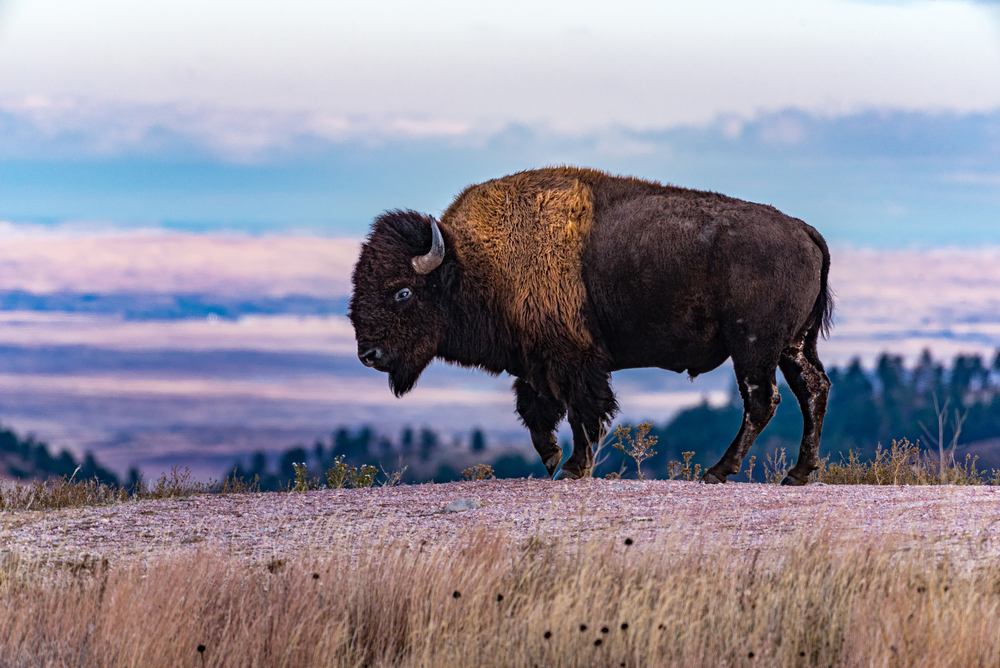
For an adventure that will take you underground and back in time, make your way to Wind Cave National Park in South Dakota. As its name suggests, the park is home to the extensive Wind Cave. Here you’ll find a number of underground chambers with intriguing names, including the Elks Room and the Post Office.
Other attractions include the Rankin Ridge Trail, which offers panoramic views of the Black Hills. The park is also renowned for its remote location. With limited light pollution, it is the perfect spot for stargazing and taking in the beauty of the cosmos.
Tip: There’s plenty to discover above and below the ground, so be sure to dedicate time to both.
Tennessee
Great Smoky Mountains National Park, (North Carolina and Tennessee)
- Established Date: June 15, 1934
- Yearly Visitations: 14,137,812 (in 2021)
- Best Time To Go: Summer and Fall
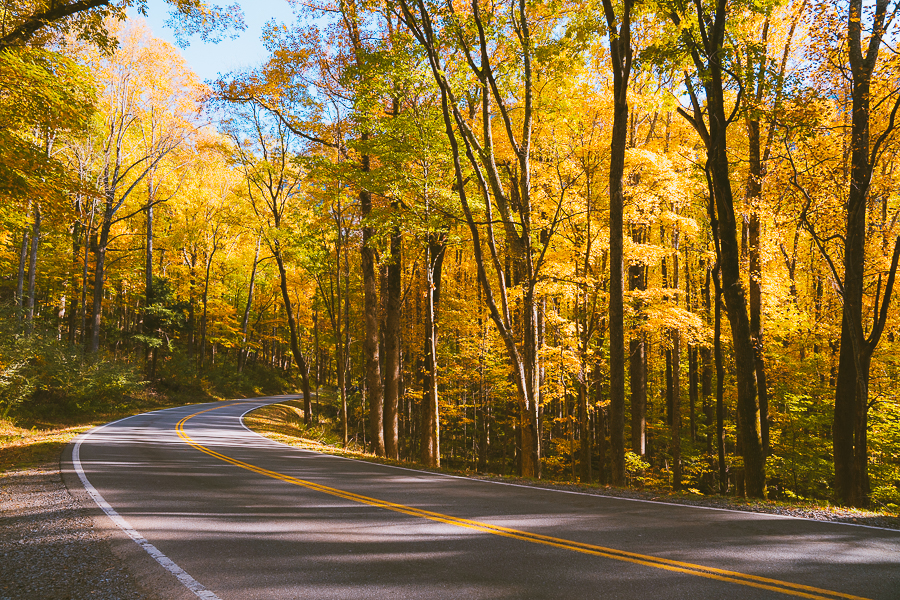
In the Tennessee portion of Great Smoky Mountains National Park, expect to find rolling hills, cascading waterfalls, and dense forests. To explore these rich terrains is a broad selection of hiking trails.
You may also encounter some of the park’s many inhabitants, including black bears and elk. For nature lovers visiting Tennessee, this national park is a must.
Texas
Big Bend National Park
- Established Date: June 20, 1935
- Yearly Visitations: 581,220 (in 2021)
- Best Time To Go: October – April
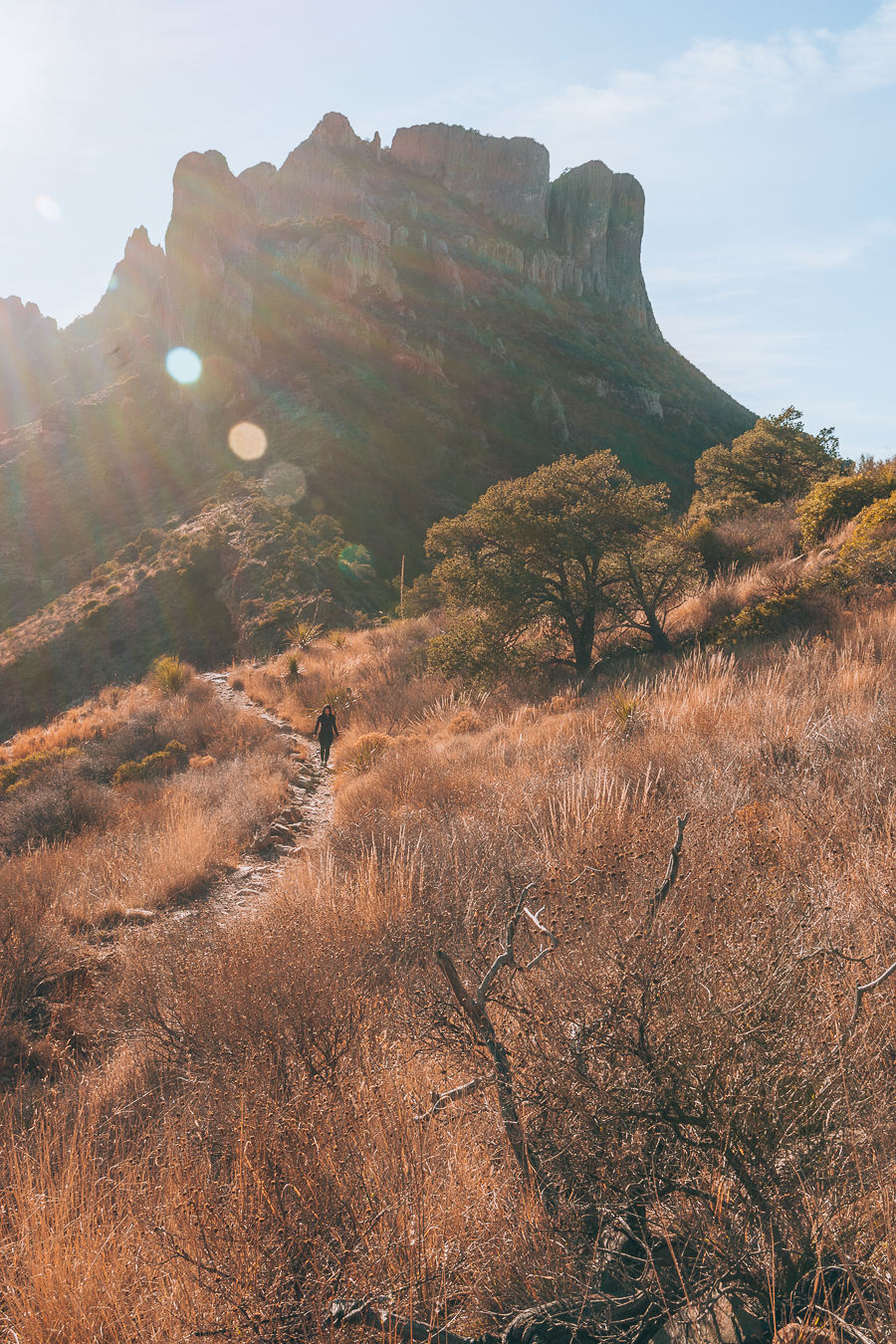
Set in the heart of southwest Texas, Big Bend National Park is a stunning destination that will take your breath away. This park is home to the entire Chisos mountain range and a vast expanse of the Chihuahuan Desert, offering a range of landscapes to explore.
For a fun experience, travel along Ross Maxwell Scenic Drive, which leads to the ruins of Sam Nail Ranch. Or, visit the steep limestone cliffs of Santa Elena Canyon or Langford Hot Springs, where you can see ancient pictographs and explore the remains of an old bathhouse.
Tip: Depending on the season, Big Bend National Park temperatures can soar well over 100 degrees Fahrenheit, so bring plenty of water.
Big Bend National Park
Related Posts
Guadalupe Mountains National Park
- Established Date: October 15, 1966
- Yearly Visitations: 243,291 (in 2021)
- Best Time To Go: Spring and Fall
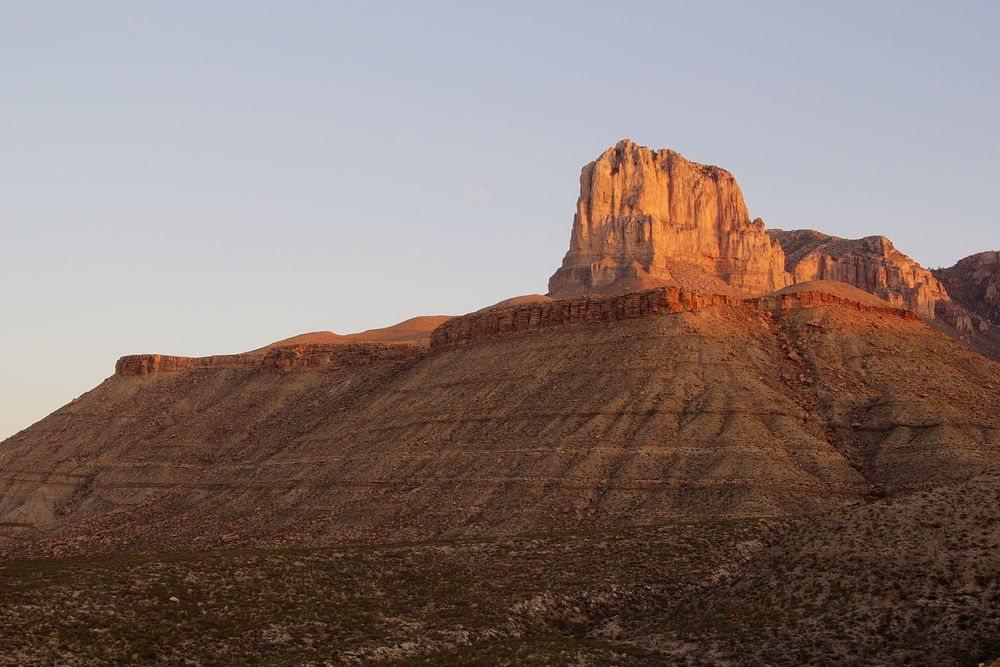
Visit Guadalupe Mountains National Park for an unforgettable outdoor adventure. The park is located in western Texas in the expansive Chihuahuan Desert. It boasts many unique and exciting attractions, from fossilized reef mountains to a diverse ecosystem.
In your itinerary, be sure to visit the Salt Basin Dunes. You’ll be mesmerized by the bright-white sand formed from gypsum crystals that have been eroded over time by wind and water. There are also many challenging hikes, including the Guadalupe Peak Trail. This leads to the state’s highest summit, which offers sweeping views of the park and El Capitan peak.
Tip: For a colorful fall display, visit between September and October and tackle the McKittrick Canyon Trail.
Utah
Arches National Park
- Established Date: November 12, 1971
- Yearly Visitations: 1,806,865 (in 2021)
- Best Time To Go: Spring and Fall
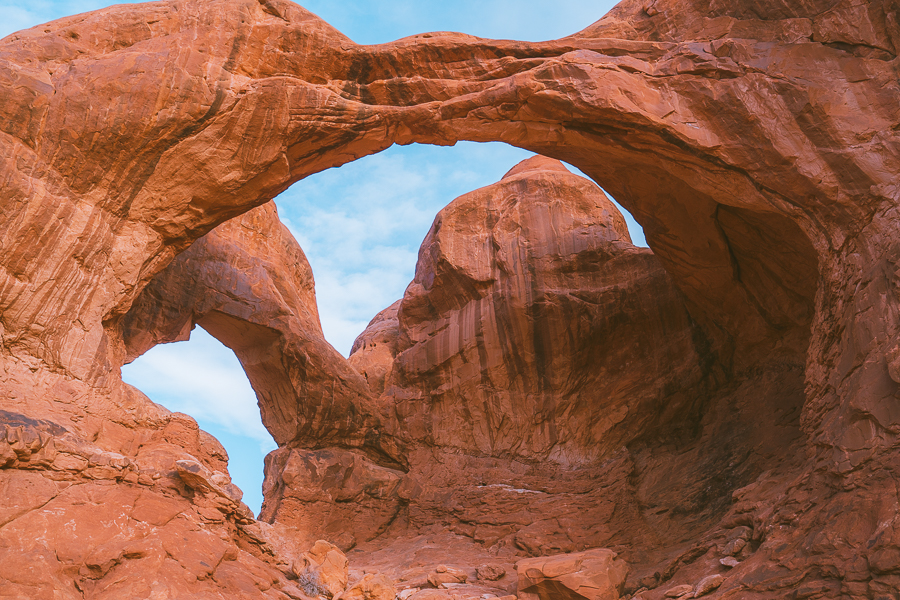
Located in Utah is the breathtaking natural wonderland known as Arches National Park. The popular destination is most renowned for housing over 2,000 natural sandstone arches. The most iconic of these is Delicate Arch, which has gained a strong reputation for its sheer size and red hue.
Other must-see sandstone arches include the thin Landscape Arch in the Devil’s Garden and the intriguing Balanced Rock, which overlooks the desert landscape at the center of the park. To see these and various other wonders showcasing the power of natural erosion, take time to hit a few of the park’s exciting trails.
Tip: Attractions, like Delicate Arch, are crowded during peak tourist season, so plan to visit early in the morning or later in the day to avoid the crowds.
Arches National Park
Related Posts
Bryce Canyon National Park
- Established Date: September 15, 1928
- Yearly Visitations: 2,104,600 (in 2021)
- Best Time To Go: Spring and Fall
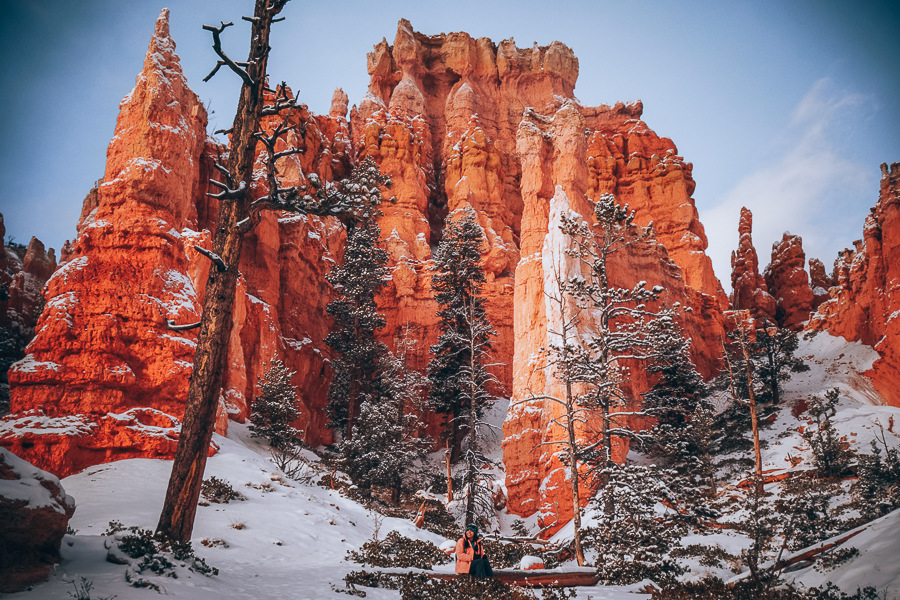
Bryce Canyon National Park, located in southern Utah, is a sprawling geological wonderland with an otherworldly landscape comprising crimson-colored hoodoos. Each year, the intrigue of these spire-shaped rock formations draws in many people from all around the world.
For a good look at the hoodoos, visit the vast Bryce Amphitheater below the Rim Trail hiking path. The park is also renowned for its breathtaking overlooks, particularly Bryce Point, Sunrise Point, Sunset Point, and Inspiration Point. These provide panoramic views of the hoodoos, as well as the surrounding landscape.
Tip: For the best views, visit during sun up or sundown when the light casts shadows and illuminates the rock formations.
Bryce canyon National Park
Related Posts
Canyonlands National Park
- Established Date: September 12, 1964
- Yearly Visitations: 911,594 (in 2021)
- Best Time To Go: Spring and Fall
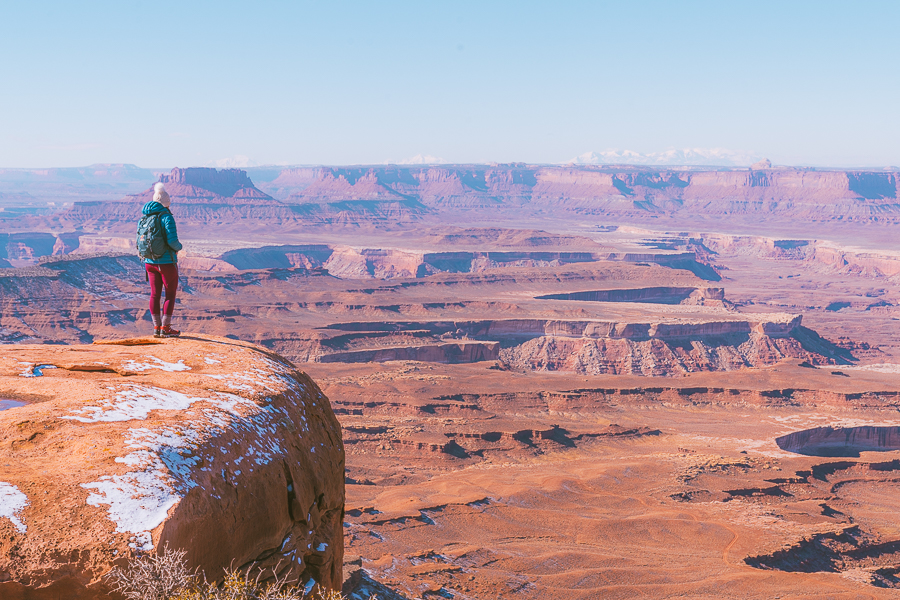
Discover Canyonlands National Park, a remote wilderness with dramatic canyons, tall spires, and endless vistas. Rivers divide the park into four districts, each with its own unique features. There’s the Island in the Sky, where you can hike along the mesa’s edge and enjoy the incredible views from the overlooks.
Next is the Needles district, home to various trails passing by the park’s colorful sandstone spires. Then there’s the Maze district, which offers many challenging adventures and is a favorite amongst experienced hikers and backpackers.
The final district is the rivers themselves, namely the Colorado and Green rivers. These flow through the park and are great for rafting and kayaking.
Tip: Visit during sunrise or sunset to witness the glow of the park’s beautiful red rock landscape.
Canyonlands National Park
Related Posts
Capitol Reef National Park
- Established Date: December 18, 1971
- Yearly Visitations: 1,405,353 (in 2021)
- Best Time To Go: June – October
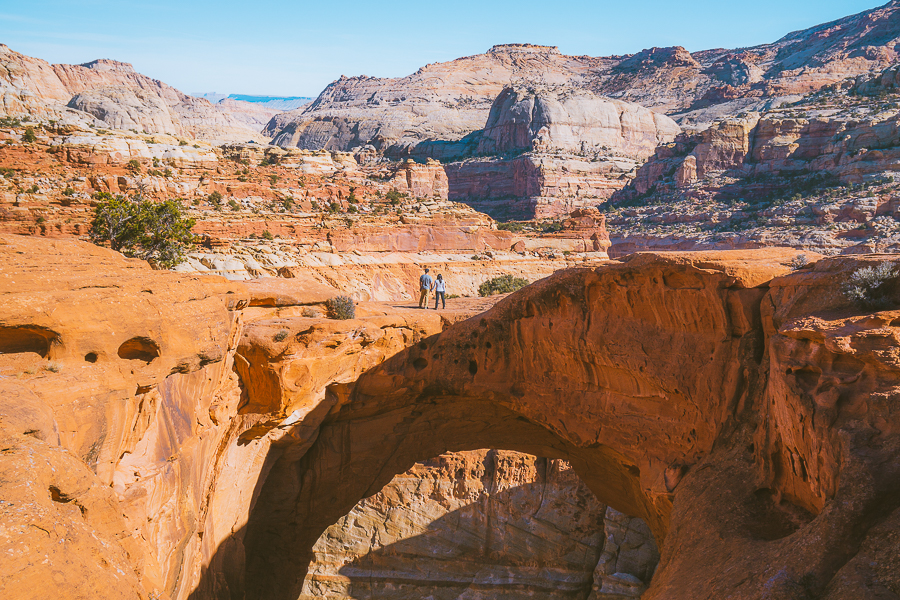
Capitol Reef National Park is a breathtaking destination situated in Utah’s south-central desert. The park encircles the Waterpocket Fold, a long wrinkle in the earth that’s adorned with canyons, golden sandstone, and intriguing rock formations.
One of the park’s main attractions is Chimney Rock pillar, an impressive natural landmark that stands 470 feet above the surrounding landscape. The park is also home to the Hickman Bridge arch and the white Navajo Sandstone Dome.
Tip: The park’s desert climate can be challenging, so bring plenty of water and wear lightweight, breathable clothing.
Capitol Reef National Park
Related Posts
Zion National Park
- Established Date: November 19, 1919
- Yearly Visitations: 5,039,835 (in 2021)
- Best Time To Go: Fall
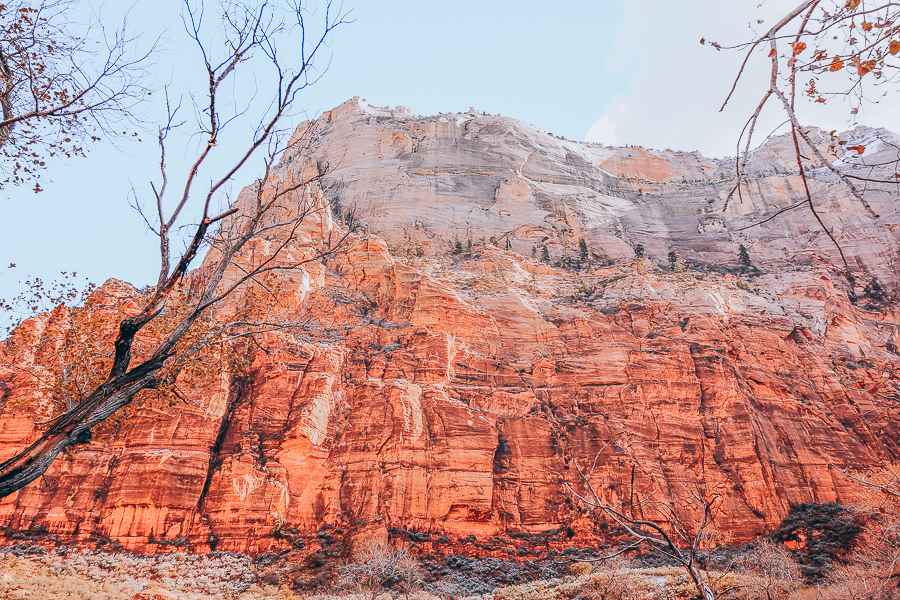
Venture into the steep red cliffs of Utah’s popular Zion National Park. For hiking and rock climbing enthusiasts, this park is a must as it offers a myriad of opportunities for adventure. From the exhilarating Angel’s Landing hike with its sweeping views to the Narrows Trail, which traverses the narrow canyons and towering cliffs, there’s plenty to explore.
If you are not looking to exert yourself too much, take a scenic drive along the Zion-Mount Carmel Highway. This provides excellent views of the red rock formations and various other natural wonders.
Tip: Be cautious when exploring the park as it features dangerous terrain comprising steep cliffs and slippery rocks. Good hiking shoes or boots are also a must.
Zion National Park
Related Posts
Virgin Islands
Virgin Islands National Park
- Established Date: August 2, 1956
- Yearly Visitations: 323,999 (in 2021)
- Best Time To Go: December – May
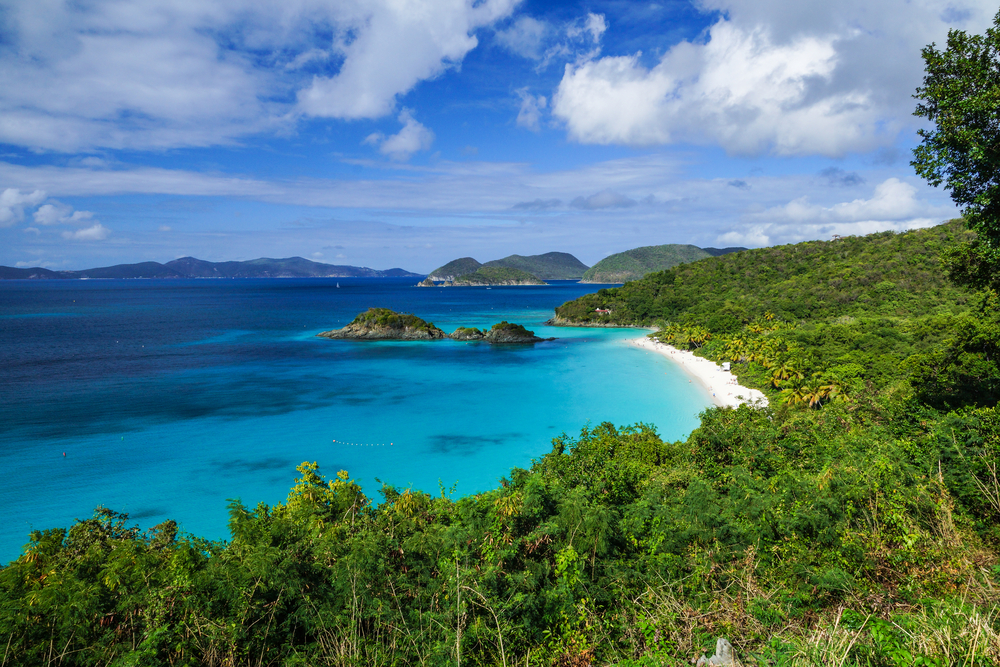
For a tropical island experience, visit the beautiful Virgin Islands National Park. This occupies two-thirds of the island of St. John and is home to several popular attractions. Among these is the picture-perfect Trunk Bay, which boasts crystal-clear waters and pristine white sand beaches, and the calmer Francis Bay. These provide wonderful opportunities to explore the colorful coral reef.
For adventures on land, there are a number of hiking trails through the island’s verdant forests. For the history buffs, there’s also the Annaberg Plantation and Reef Bay Sugar Mill. These historical attractions provide a unique look into the island’s rich history.
Tip: When exploring the waters surrounding the island, keep an eye out for marine life, particularly the green, hawksbill, and leatherback sea turtles
Virginia
Shenandoah National Park
- Established Date: May 22, 1926
- Yearly Visitations: 1,592,312 (in 2021)
- Best Time To Go: Summer and Fall
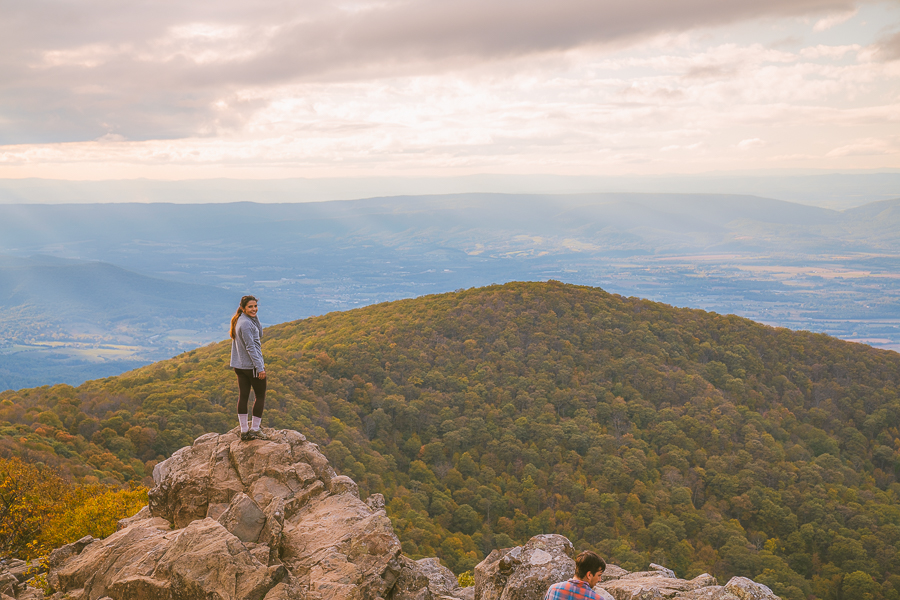
Nestled in the heart of the Blue Ridge Mountains of Virginia is the popular Shenandoah National Park. With its broad range of things to see and do, you’re guaranteed a memorable experience. Start off your visit with a scenic drive along Skyline Drive, a 105-mile roadway that winds its way through the park, offering unparalleled views of the mountains and surrounding scenery.
For hikers, the park offers a vast selection of trails, including a lengthy section of the famous Appalachian Trail. Adventurous hikers can also challenge themselves with a trek to the summit of Hawksbill, the park’s highest peak, or the strenuous Old Rag Mountain.
Shenandoah National Park
Related Posts
Washington
Mount Rainier National Park
- Established Date: March 2, 1899
- Yearly Visitations: 1,670,063 (in 2021)
- Best Time To Go: July-September
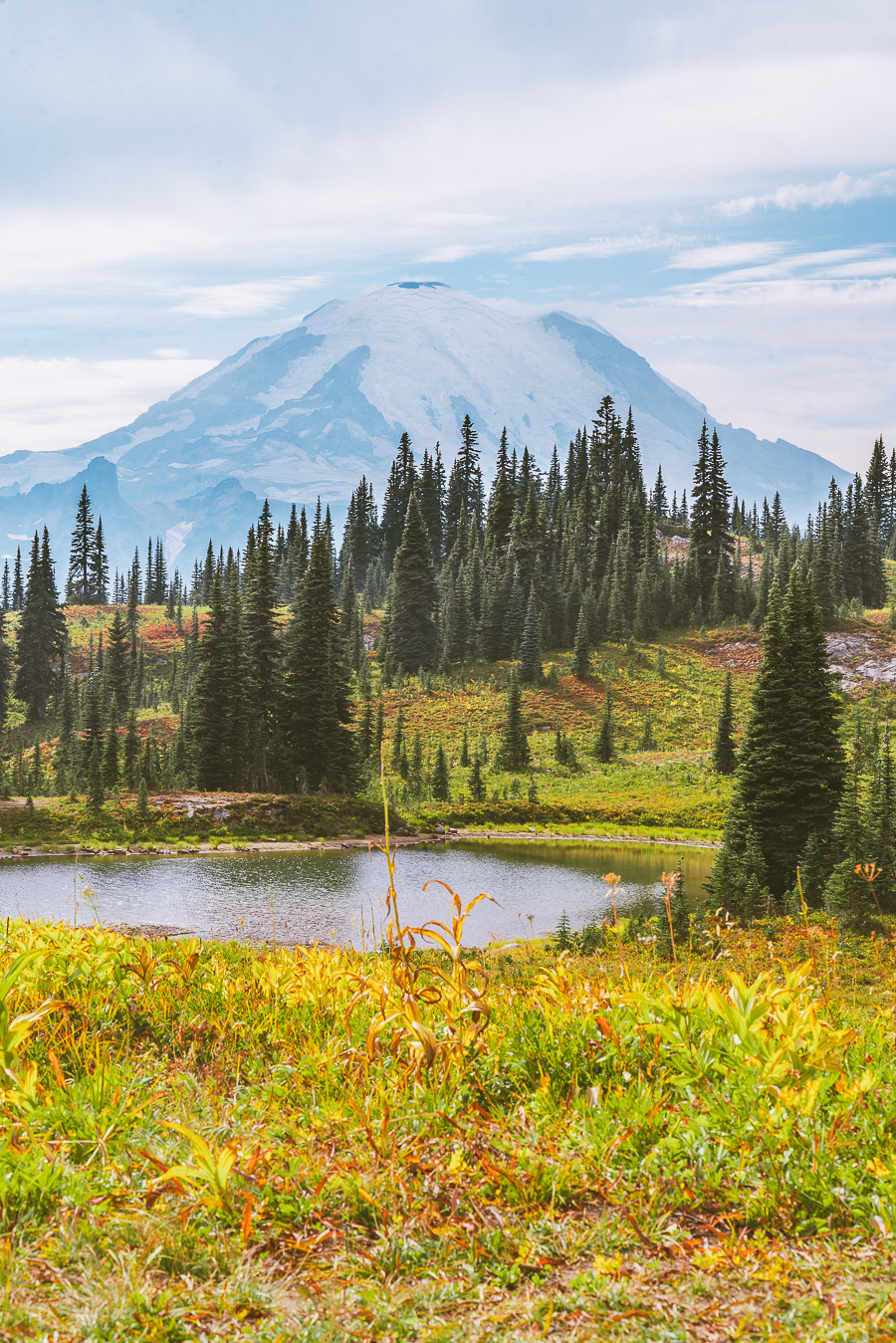
Mount Rainier National Park is a breathtaking 369-square-mile reserve in Washington state. It is home to one of the most iconic peaks in the United States, Mount Rainier—an active volcano standing an impressive 14,410 feet tall.
This, along with nearby volcanoes like Mount Adams, can be viewed from Sunrise—a lodge and visitors center reachable by car. Another excellent viewpoint is the famous Paradise Overlook. From here, you’ll be able to see the mountains, wildflower meadows, and plenty more. There are also several trailheads found here.
Tip: Mount Rainier National Park is extremely popular, so expect traffic and congestion near the entrance and visitor centers. To avoid the crowds, visit on a weekday and try to come early.
Mount Rainier National Park
Related Posts
North Cascades National Park
- Established Date: October 2, 1968
- Yearly Visitations: 17,855 (in 2021)
- Best Time To Go: July-September
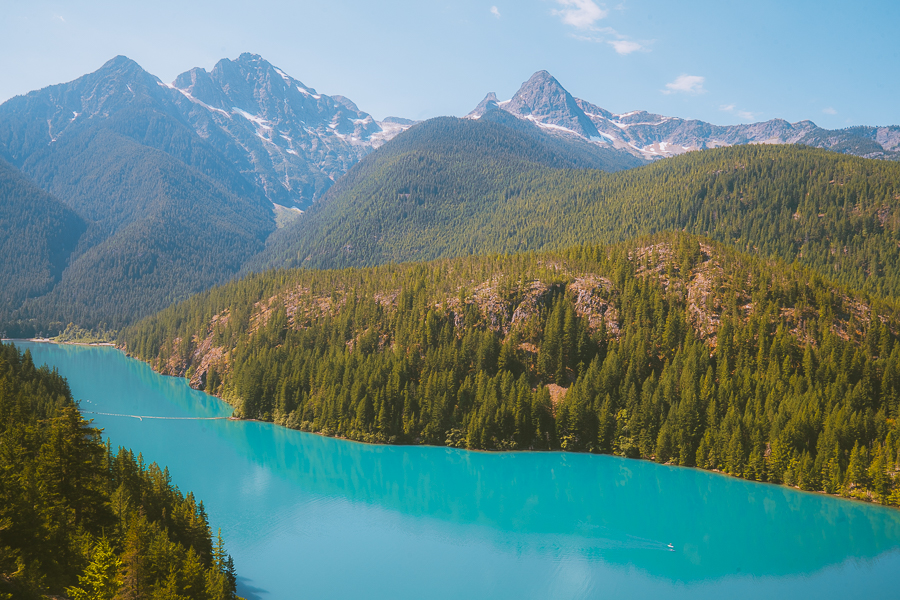
Step into North Cascades National Park and prepare to be amazed. There are plenty of attractions, including the North Cascades Highway, which will treat you to spectacular views of the park’s snow-capped peaks and crystal-clear lakes at every turn.
If you’re an outdoor enthusiast, don’t miss the Sterling Munro Trail. This challenging hike offers a unique glimpse into the surrounding mountains by taking you through its pristine forests and meadows.
For a more relaxing experience, head to the Gorge Lake Overlook. This is a wonderful spot to picnic or camp. Diablo Lake Vista point is also sure to amaze with its calming turquoise waters.
Tip: North Cascades National Park experiences exceptionally cold and wet winters. During this time, many of the park’s trailheads are buried in snow, so it is best to stick to the summer months.
North Cascades National Park
Related Posts
Olympic National Park
- Established Date: June 29, 1938
- Yearly Visitations: 2,718,925 (in 2021)
- Best Time To Go: Summer – Fall
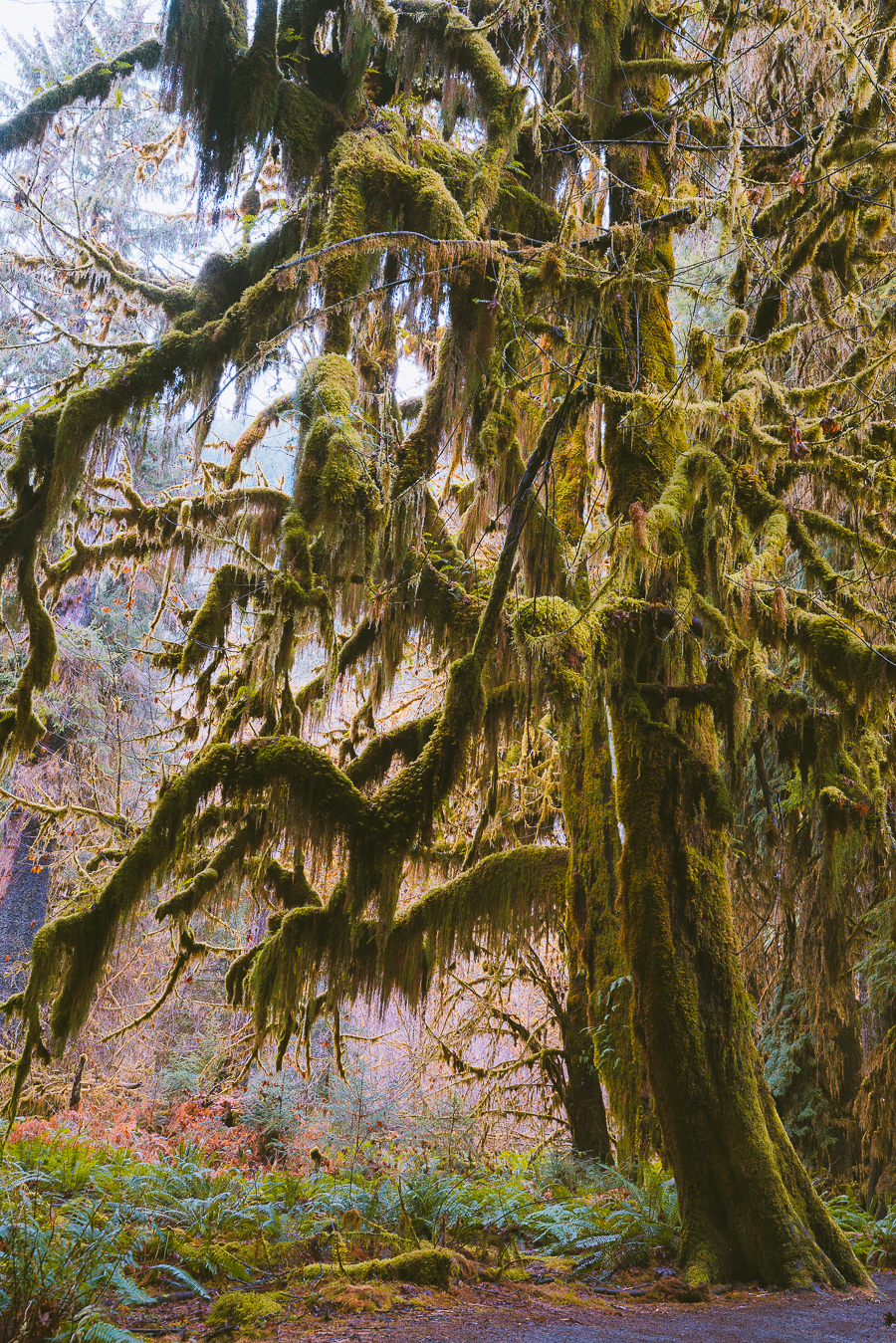
Located on Washington’s Olympic Peninsula in the Pacific Northwest is the world-renowned Olympic National Park. The park is most famous for its old-growth forests, rugged coastline, and, of course, the dramatic peak of the glacier-capped Mt. Olympus. At 7,980 feet, this is the highest point in the national park.
Other popular attractions include Obstruction Point Road, which takes you through the heart of Olympic National Park, and Hurricane Ridge. There’s also Lake Crescent, which boasts shimmering waters and a stunning mountain backdrop that will leave you in awe.
Olympic National Park is also popular with outdoor and adventure enthusiasts, as it offers endless opportunities for hiking, climbing, backpacking, and skiing.
Tip: Olympic National Park is among the most picturesque destinations in the United States, so be sure to bring your camera along.
Olympic National Park
Related Posts
West Virginia
New River Gorge National Park and Preserve
- Established Date: December 27, 2020
- Yearly Visitations: 1,682,720 (2021)
- Best Time To Go: Summer and Fall
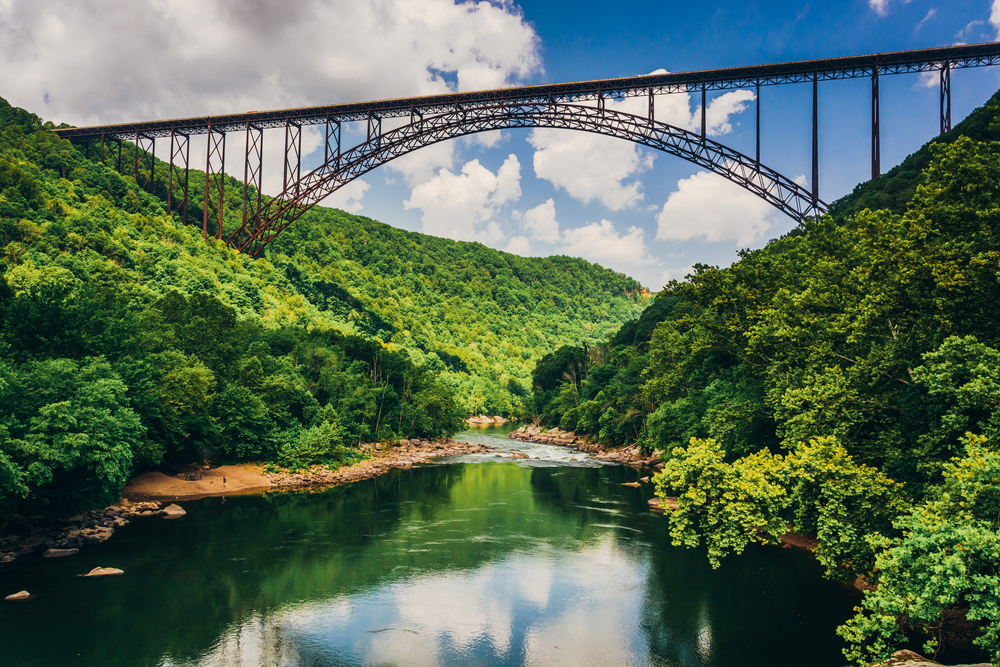
Discover America’s 63rd national park – the New River Gorge National Park and Preserve. While the 70,0000-acre park has been a beloved destination for locals for centuries, it was only designated a national park in recent years. Now, the park invites people from all over to experience its rugged mountains, steep cliffs, and its number one attraction—The New River.
The river and diverse terrain have made this national park a popular destination amongst nature enthusiasts and adrenaline junkies. In and around the river are plenty of natural wonders to behold. There is also a wide variety of outdoor activities to enjoy, such as hiking, climbing, and white-river rafting. Overall, New River Gorge is a must for anyone visiting West Virginia.
Tip: To learn about the rich history and ecology of New River Gorge National Park, be sure to stop by the visitor center.
Wyoming
Grand Teton National Park
- Established Date: February 26, 1929
- Yearly Visitations: 3,885,230 (in 2021)
- Best Time To Go: Summer
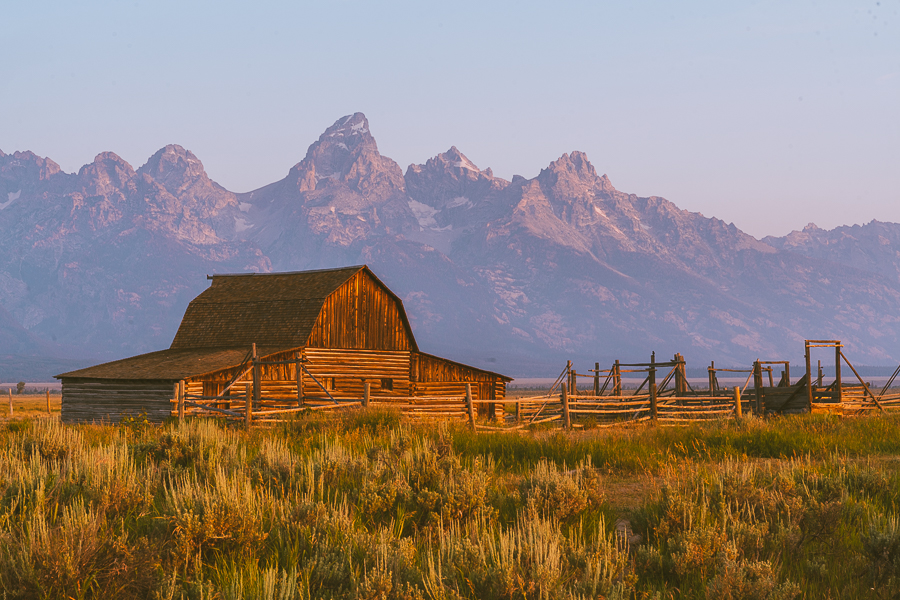
Located north of Jackson is the stunning Grand Teton National Park. As you step into this magnificent destination, you’ll be transported back in time. The park boasts a rich history dating back 11,000 years to the times when Nomadic and American Indian tribes called its lands home.
The park’s namesake, the Grand Teton mountain range, dominates the skyline and is where much of the adventure lies. You’ll find hiking, mountaineering, and rock climbing adventures, as well as mountain views as far as the eye can see. There’s also a good chance you’ll spot wildlife, be it elk, moose, or even a grizzly bear.
Tip: Grand Teton houses a large population of grizzly and black bears. Be cautious and always keep a distance of at least 300 feet.
Grand Teton National Park
Related Posts
Yellowstone National Park, (Idaho, Montana, and Wyoming)
- Established Date: March 1, 1872
- Yearly Visitations: 4,860,242 (in 2021)
- Best Time To Go: Fall and Spring
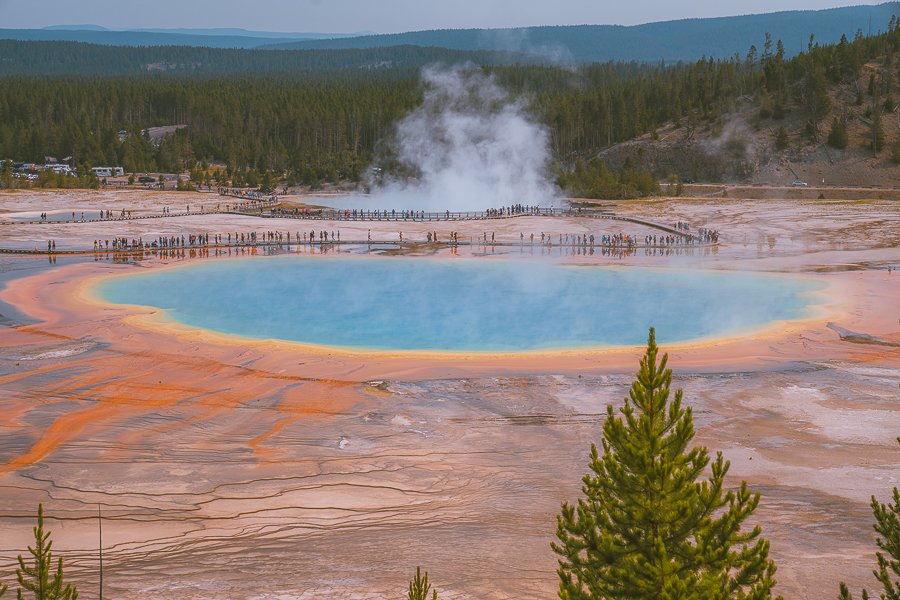
Around 96 percent of the land area of the majestic Yellowstone National Park lies within the borders of Wyoming. As mentioned, the park is home to many unique geological features, including geysers and hot springs. It also has an abundance of wildlife ranging from gray wolves to grizzly bears. A trip to this portion of Yellowstone guarantees an experience and memory that is sure to last a lifetime.
Tips For Visiting US National Parks

Before visiting the national parks above, check out these useful tips.
Be Mindful of the Wildlife
Many national parks in the US house an abundance of wildlife, including bears, wolves, and other potentially dangerous animals. When encountering wild animals, always keep a safe distance. Also, avoid feeding them and ensure that your feed is safely stored.
Bring the Correct Gear
Depending on the national park you visit and the experience you’re after, you’ll need certain gear. As such, it is best to check what you’ll need and plan ahead. Some go-to’s for almost any national park visit include water jugs, snacks, day packs, sun hats, sunscreen, and comfortable shoes.
Dress for the Weather
The weather in some of the US national parks can be unpredictable. Some also fall on the far end of either extreme. No matter the weather, make sure you come prepared. A safe option is to dress in layers.
Start light with a breathable shirt or t-shirt, moisture-wicking or quick-drying pants, and comfortable shoes and socks. Then, add layers as needed. It’s always good to have a lightweight rain jacket on-hand in case of unexpected rain.
Stop By the Visitor Center
A good first stop at any national park is the visitor center. Here you’ll find maps, brochures, and up-to-date information on happenings in the park. This may include important updates on the weather, roads, and trails.
Plan Ahead
Many US national parks receive a large number of visitors, particularly during the more touristy seasons. To ensure you get the accommodation and tour packages you desire, consider booking well in advance. Or, aim to visit during the shoulder season to avoid the crowds.
US National Parks Checklist Frequently Asked Questions
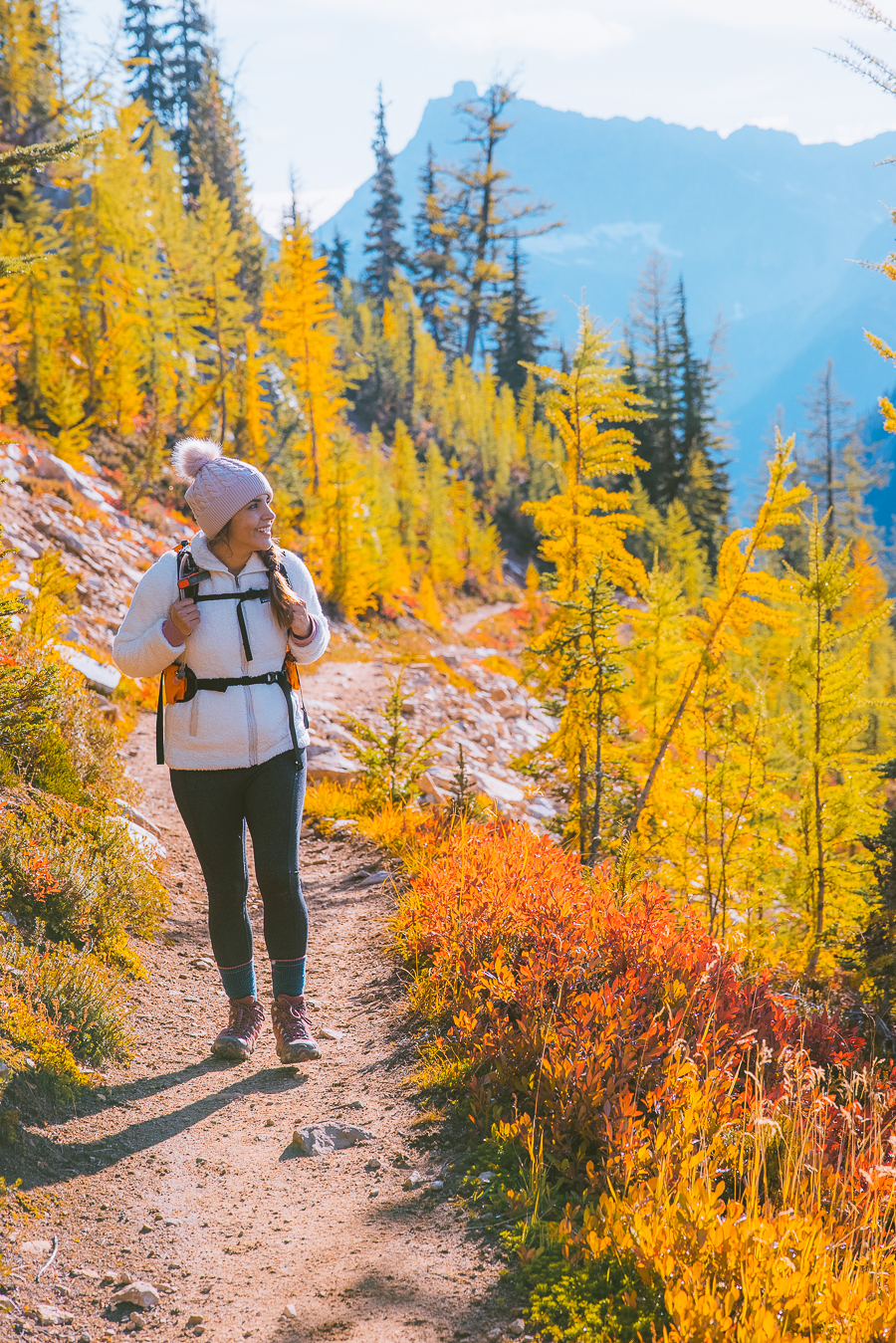
For some additional information, check out these frequently asked questions about US national parks.
What is the Most Important US National Park?
Yellowstone National Park is considered the most important as it is the country’s first national park, established in 1872.
How Many National Parks Are There in the United States?

There are 63 national parks. The newest national park was added on the 27th of December 2020. It is located in West Virginia and is called the New River Gorge National Park. There are also 423 National Park Service Units which include national monuments, national memorials, national battlefields, etc. But most of the time, when people talk about national parks, they mean the 63 national parks.
What is the Most Remote National Park in the US?
Katmai National Park is considered the most remote. It’s located far out in Alaska’s southern Kenai Peninsula and Kodiak Island and is a true natural wonderland.
What Are the Largest National Parks in the US?
- Wrangell-St. Elias National Park — 8,323,148 acres
- Gates of the Arctic National Park — 7,523,898 acres
- Denali National Park — 4,724,735 acres
- Katmai National Park — 3,674,530 acres
- Death Valley National Park — 3,372,402 acres
What Are the Least Visited US National Parks?
- Gates of the Arctic National Park — 7,362
- National Park of American Samoa — 8,495
- Kobuk Valley National Park — 11,540
- North Cascades National Park — 17,855
- Lake Clark National Park — 18,278
What Are the Most Visited US National Parks?
- Great Smoky Mountains National Park — 14,137,812
- Zion National Park — 5,039,835
- Yellowstone National Park — 4,860,242
- Grand Canyon National Park — 4,532,677
- Rocky Mountain National Park — 4,434,848
List of States Without National Parks
Alabama
- Birmingham Civil Rights National Monument
- Freedom Riders National Monument
- Horseshoe Bend National Military Park
- Little River Canyon National Preserve
- Natchez Trace Parkway
- Natchez Trace National Scenic Trail
- Russell Cave National Monument
- Selma To Montgomery National Historic Trail
- Trail of Tears National Historic Trail
- Tuskegee Airmen National Historic Site
- Tuskegee Institute National Historic Site
Connecticut
- Appalachian National Scenic Trail
- Coltsville National Historical Park
- New England National Scenic Trail
- Washington-Rochambeau Revolutionary Route National Historic Trail
- Weir Farm National Historical Park
Delaware
- Captain John Smith Chesapeake National Historic Trail
- Chesapeake Bay Watershed
- First State National Historical Park
- Washington-Rochambeau Revolutionary Route National Historic Trail
District of Columbia
- African American Civil War Memorial
- Anacostia Park
- Belmont-Paul Women’s Equality National Monument
- Capitol Hill Parks
- Captain John Smith Chesapeake National Historic Trail
- Carter G. Woodson Home National Historic Site
- Chesapeake & Ohio Canal National Historical Park
- Chesapeake Bay Watershed
- Civil War Defenses of Washington
- Constitution Gardens
- Dwight D. Eisenhower Memorial
- Ford’s Theatre National Historic Site
- Fort Dupont Park
- Franklin Delano Roosevelt Memorial
- Frederick Douglass National Historic Site
- George Washington Memorial Parkway
- Kenilworth Park & Aquatic Gardens
- Korean War Veterans Memorial
- Lincoln Memorial
- Lyndon Baines Johnson Memorial Grove on the Potomac
- Martin Luther King Jr. Memorial
- Mary McLeod Bethune Council House National Historic Site
- National Capital Parks – East
- National Mall and Memorial Parks
- Pennsylvania Avenue National Historic Site
- Potomac Heritage National Scenic Trail
- President’s Park (White House)
- Rock Creek Park
- Theodore Roosevelt Island
- Thomas Jefferson Memorial
- Vietnam Veterans Memorial
- Washington Monument
- Washington-Rochambeau Revolutionary Route National Historic Trail
- World War I Memorial
- World War II Memorial
Georgia
- Andersonville National Historic Site
- Appalachian National Scenic Trail
- Chattahoochee River National Recreation Area
- Chickamauga & Chattanooga National Military Park
- Cumberland Island National Seashore
- Fort Frederica National Monument
- Fort Pulaski National Monument
- Jimmy Carter National Historical Park
- Kennesaw Mountain National Battlefield Park
- Martin Luther King, Jr. National Historical Park
- Ocmulgee Mounds National Historical Park
- Trail of Tears National Historic Trail
Guam
- War in the Pacific National Historical Park
Idaho
- California National Historic Trail
- City of Rocks National Reserve
- Craters of the Moon National Monument & Preserve
- Hagerman Fossil Beds National Monument
- Ice Age Floods National Geologic Trail
- Lewis & Clark National Historic Trail
- Minidoka National Historic Site
- Nez Perce National Historical Park
- Oregon National Historic Trail
Illinois
While Illinois has a small part of Gateway Arch National Park, most of the park sits in Missouri.
- Lewis & Clark National Historic Trail
- Lincoln Home National Historic Site
- Mormon Pioneer National Historic Trail
- Pullman National Monument
- Trail of Tears National Historic Trail
Iowa
- Effigy Mounds National Monument
- Herbert Hoover National Historic Site
- Lewis & Clark National Historic Trail
- Mormon Pioneer National Historic Trail
Kansas
- Brown v. Board of Education National Historic Site
- California National Historic Trail
- Fort Larned National Historic Site
- Fort Scott National Historic Site
- Lewis & Clark National Historic Trail
- Nicodemus National Historic Site
- Oregon National Historic Trail
- Pony Express National Historic Trail
- Santa Fe National Historic Trail
- Tallgrass Prairie National Preserve
Louisiana
- Cane River Creole National Historical Park
- El Camino Real de los Tejas National Historic Trail
- Jean Lafitte National Historical Park and Preserve
- New Orleans Jazz National Historical Park
- Poverty Point National Monument
- Vicksburg National Military Park
Maryland
- Antietam National Battlefield
- Appalachian National Scenic Trail
- Assateague Island National Seashore
- Baltimore-Washington Parkway
- Captain John Smith Chesapeake National Historic Trail
- Catoctin Mountain Park
- Chesapeake & Ohio Canal National Historical Park
- Chesapeake Bay Watershed
- Civil War Defenses of Washington
- Clara Barton National Historic Site
- Fort Foote Park
- Fort McHenry National Monument and Historic Shrine
- Fort Washington Park
- George Washington Memorial Parkway
- Glen Echo Park
- Greenbelt Park
- Hampton National Historic Site
- Harmony Hall
- Harpers Ferry National Historical Park
- Harriet Tubman Underground Railroad National Historical Park
- Monocacy National Battlefield
- Oxon Cove Park & Oxon Hill Farm
- Piscataway Park
- Potomac Heritage National Scenic Trail
- Star-Spangled Banner National Historic Trail
- Thomas Stone National Historic Site
- Washington-Rochambeau Revolutionary Route National Historic Trail
Massachusetts
- Adams National Historical Park
- Appalachian National Scenic Trail
- Blackstone River Valley National Historical Park
- Boston African American National Historic Site
- Boston Harbor Islands National Recreation Area
- Boston National Historical Park
- Cape Cod National Seashore
- Frederick Law Olmsted National Historic Site
- John Fitzgerald Kennedy National Historic Site
- Longfellow – Washington’s Headquarters National Historic Site
- Lowell National Historical Park
- Minute Man National Historical Park
- New Bedford Whaling National Historical Park
- New England National Scenic Trail
- Salem Maritime National Historic Site
- Saugus Iron Works National Historic Site
- Springfield Armory National Historic Site
- Washington-Rochambeau Revolutionary Route National Historic Trail
Mississippi
- Brices Cross Roads National Battlefield Site
- Gulf Islands National Seashore
- Medgar and Myrlie Evers Home National Monument
- Natchez National Historical Park
- Natchez Trace National Scenic Trail
- Natchez Trace Parkway
- Shiloh National Military Park
- Tupelo National Battlefield
- Vicksburg National Military Park
Nebraska
- Agate Fossil Beds National Monument
- California National Historic Trail
- Homestead National Historical Park
- Lewis & Clark National Historic Trail
- Missouri National Recreational River
- Mormon Pioneer National Historic Trail
- Niobrara National Scenic River
- Oregon National Historic Trail
- Pony Express National Historic Trail
- Scotts Bluff National Monument
New Hampshire
- Appalachian National Scenic Trail
- Saint-Gaudens National Historical Park
New Jersey
- Appalachian National Scenic Trail
- Delaware Water Gap National Recreation Area
- Gateway National Recreation Area
- Great Egg Harbor River
- Lower Delaware National Wild and Scenic River
- Morristown National Historical Park
- New Jersey Pinelands National Reserve
- Paterson Great Falls National Historical Park
- Statue of Liberty National Monument
- Thomas Edison National Historical Park
- Washington-Rochambeau Revolutionary Route National Historic Trail
New York
- African Burial Ground National Monument
- Appalachian National Scenic Trail
- Captain John Smith Chesapeake National Historic Trail
- Castle Clinton National Monument
- Chesapeake Bay Watershed
- Eleanor Roosevelt National Historic Site
- Federal Hall National Memorial
- Fire Island National Seashore
- Fort Stanwix National Monument
- Gateway National Recreation Area
- General Grant National Memorial
- Governors Island National Monument
- Hamilton Grange National Memorial
- Harriet Tubman National Historical Park
- Home of Franklin D. Roosevelt National Historic Site
- Lower East Side Tenement Museum
- Martin Van Buren National Historic Site
- National Parks of New York Harbor
- North Country National Scenic Trail
- Sagamore Hill National Historic Site
- Saint Paul’s Church National Historic Site
- Saratoga National Historical Park
- Statue of Liberty National Monument
- Stonewall National Monument
- Theodore Roosevelt Birthplace National Historic Site
- Theodore Roosevelt Inaugural National Historic Site
- Thomas Cole National Historic Site
- Upper Delaware Scenic & Recreational River
- Vanderbilt Mansion National Historic Site
- Washington-Rochambeau Revolutionary Route National Historic Trail
- Women’s Rights National Historical Park
North Carolina
- Appalachian National Scenic Trail
- Blue Ridge Parkway
- Cape Hatteras National Seashore
- Cape Lookout National Seashore
- Carl Sandburg Home National Historic Site
- Fort Raleigh National Historic Site
- Guilford Courthouse National Military Park
- Moores Creek National Battlefield
- Over mountain Victory National Historic Trail
- Trail of Tears National Historic Trail
- Wright Brothers National Memorial
Oklahoma
- Chickasaw National Recreation Area
- Fort Smith National Historic Site
- Oklahoma City National Memorial
- Santa Fe National Historic Trail
- Trail of Tears National Historic Trail
- Washita Battlefield National Historic Site
Pennsylvania
- Allegheny Portage Railroad National Historic Site
- Appalachian National Scenic Trail
- Captain John Smith Chesapeake National Historic Trail
- Chesapeake Bay
- Delaware Water Gap National Recreation Area
- Edgar Allan Poe National Historic Site
- Eisenhower National Historic Site
- First State National Historical Park
- Flight 93 National Memorial
- Fort Necessity National Battlefield
- Friendship Hill National Historic Site
- Gettysburg National Military Park
- Gloria Dei Church National Historic Site
- Hopewell Furnace National Historic Site
- Independence National Historical Park
- Johnstown Flood National Memorial
- Lewis & Clark National Historic Trail
- Lower Delaware National Wild and Scenic River
- North Country National Scenic Trail
- Potomac Heritage National Scenic Trail
- Steamtown National Historic Site
- Thaddeus Kosciuszko National Memorial
- Upper Delaware Scenic and Recreational River
- Valley Forge National Historical Park
- Washington-Rochambeau Revolutionary Route National Historic Trail
Puerto Rico
- San Juan National Historic Site
Rhode Island
- Blackstone River Valley National Historical Park
- Roger Williams National Memorial
- Touro Synagogue National Historic Site
- Washington-Rochambeau Revolutionary Route National Historic Trail
Vermont
- Appalachian National Scenic Trail
- Marsh-Billings-Rockefeller National Historical Park
- North Country National Scenic Trail
Wisconsin
- Apostle Islands National Lakeshore
- Ice Age National Scenic Trail
- North Country National Scenic Trail
- Saint Croix National Scenic Riverway
Final Thoughts On List of U.S. National Parks
I hope this list of national parks in the US helped you pick your next adventure. Check out some of my most popular USA national park posts:
- Best USA National Parks to Visit in the Spring
- Best USA National Parks To Visit in the Fall
- Best USA National Parks To Visit In The Winter
- Best National Parks To Visit in The Summer




